The best Dolby Atmos soundbars: home theater upgrades for all budgets
Dolby Atmos soundbars are the simple way to home theater paradise, no matter how big your room is
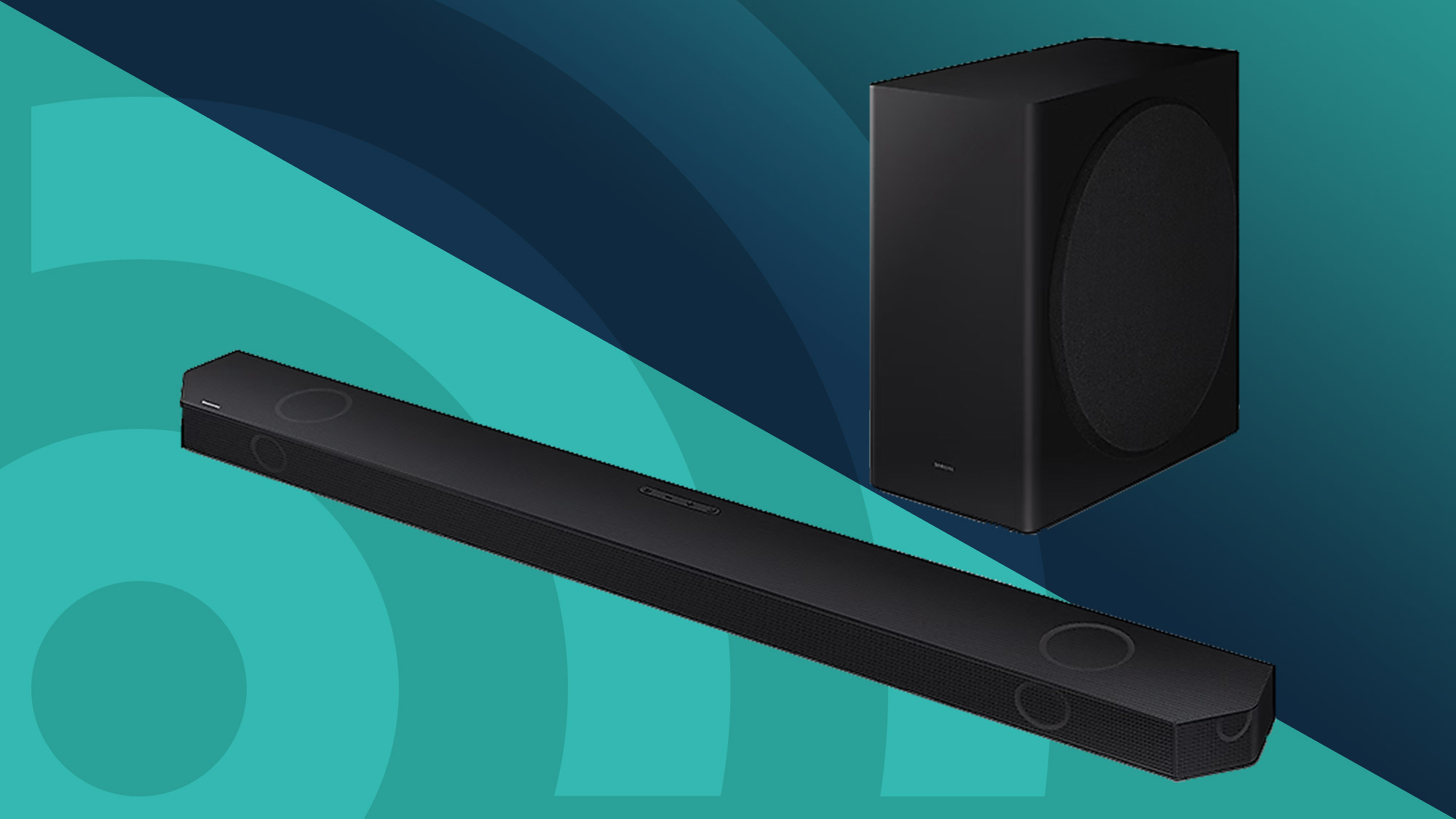
The best Dolby Atmos soundbars allow you to hear your favorite movies and TV shows in a way that’s more immersive and natural. That's because Dolby Atmos is a surround sound audio format that isolates audio to individual objects – someone screaming, a dog barking, a helicopter overhead – that can be mapped in 3D space, rather than being attached to a particular speaker in a setup.
So if you can see a helicopter on screen flying above your head, it’ll sound as if it’s flying over your head, too. Essentially, sound is placed where it naturally would be based on what you’re watching on the screen, with more precision and effectiveness than regular surround sound.
You won’t get the same uncompromised presentation of Dolby Atmos soundtracks that the best AV receivers deliver when paired with a surround sound speaker system, but those setups take up a lot of space and can be expensive. That’s where the best soundbars show their advantage, and the best Dolby Atmos soundbars are the easy way to deliver a powerful home theater experience.
The quick list
In a hurry but need to find the best Dolby Atmos soundbar for you? Take a look at our quick list below which covers a soundbar that will suit every budget and situation. You can still check out more detailed reviews of each soundbar below.
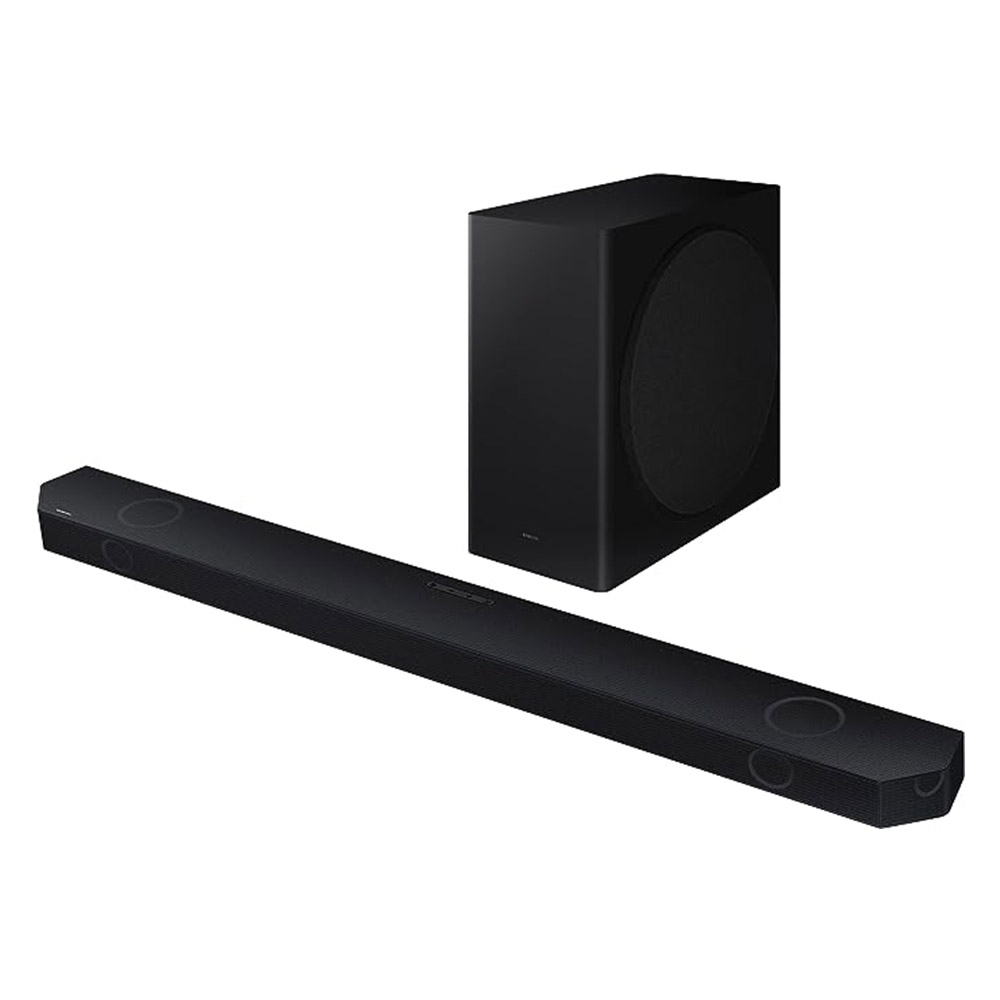
Best Dolby Atmos soundbar for most people
The Q800D is excellent value overall. It delivers engaging, powerful sound across its 5.1.2-channel speaker array and offers many features.
Read more below
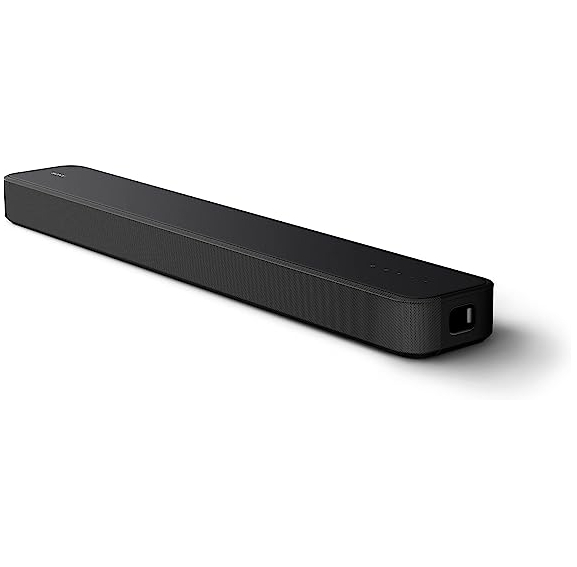
Best budget Dolby Atmos soundbar
Don't be fooled by its unassuming small size, Sony's HT-S2000 can achieve an impressive level immersion for a very affordable entry-level price.
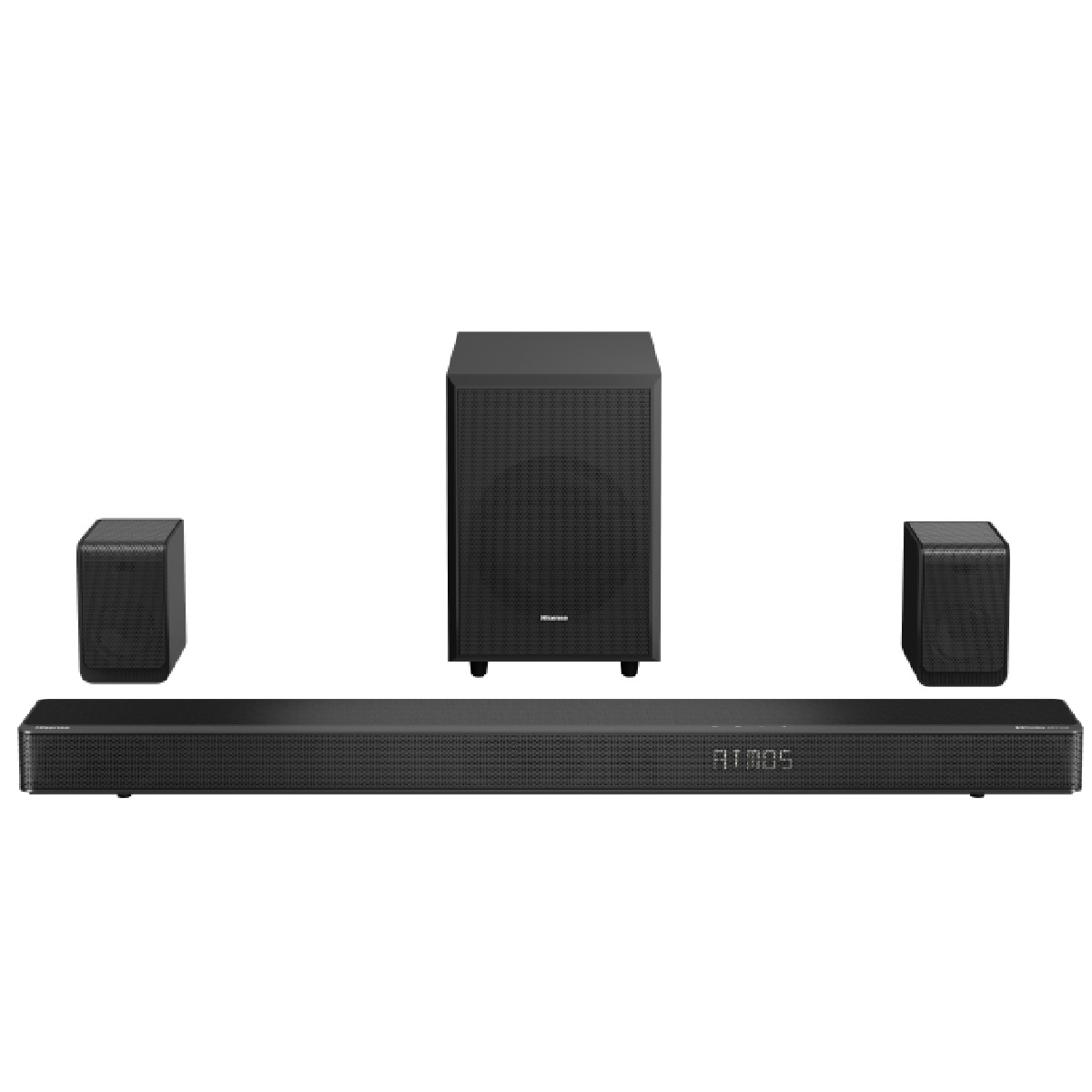
The best budget soundbar for Dolby Atmos surround
Hisense’s 5.1.2-channel system delivers real Dolby Atmos using up-firing speakers and features wireless surrounds and a subwoofer – all for an incredibly low price.
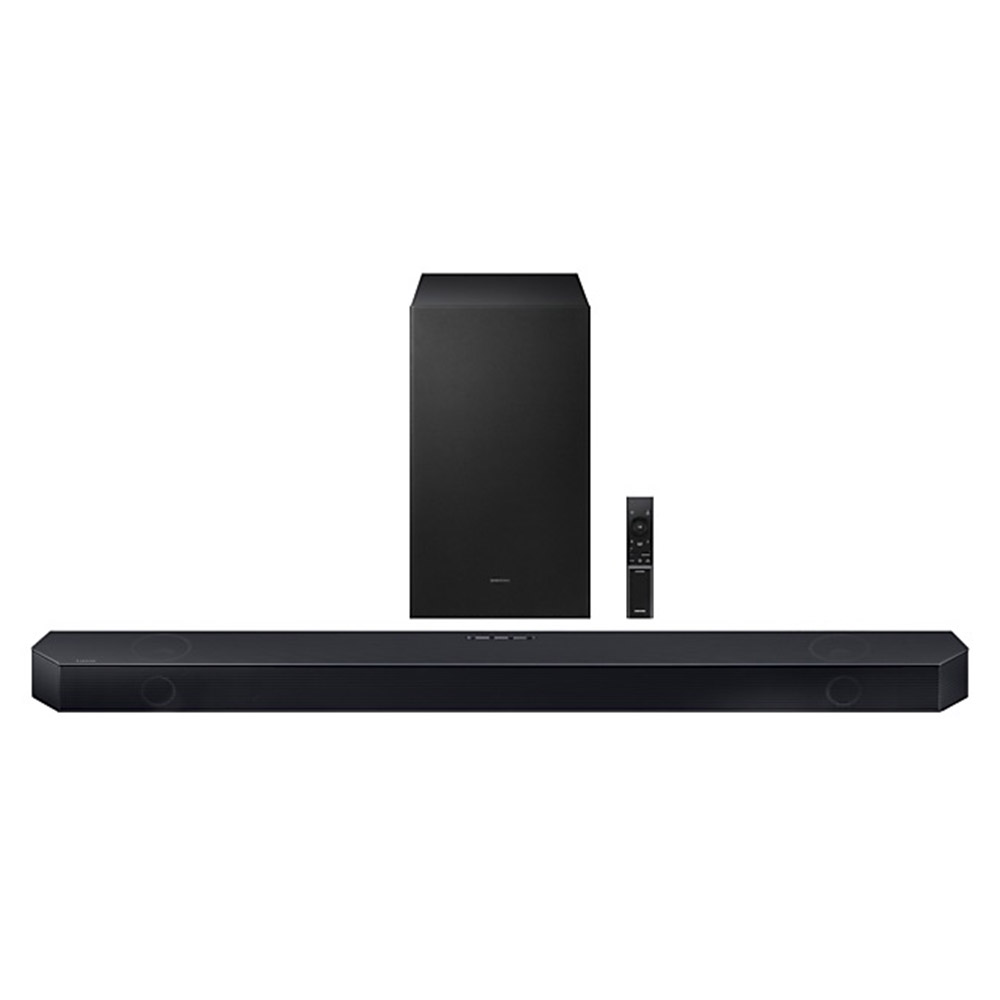
Best mid-range Dolby Atmos soundbar
Offering 3.1.2 channels of immersive sound, the HW-Q700C soundbar and sub combo is by far the best mid-range option around for unlocking hi-res, 3D audio.
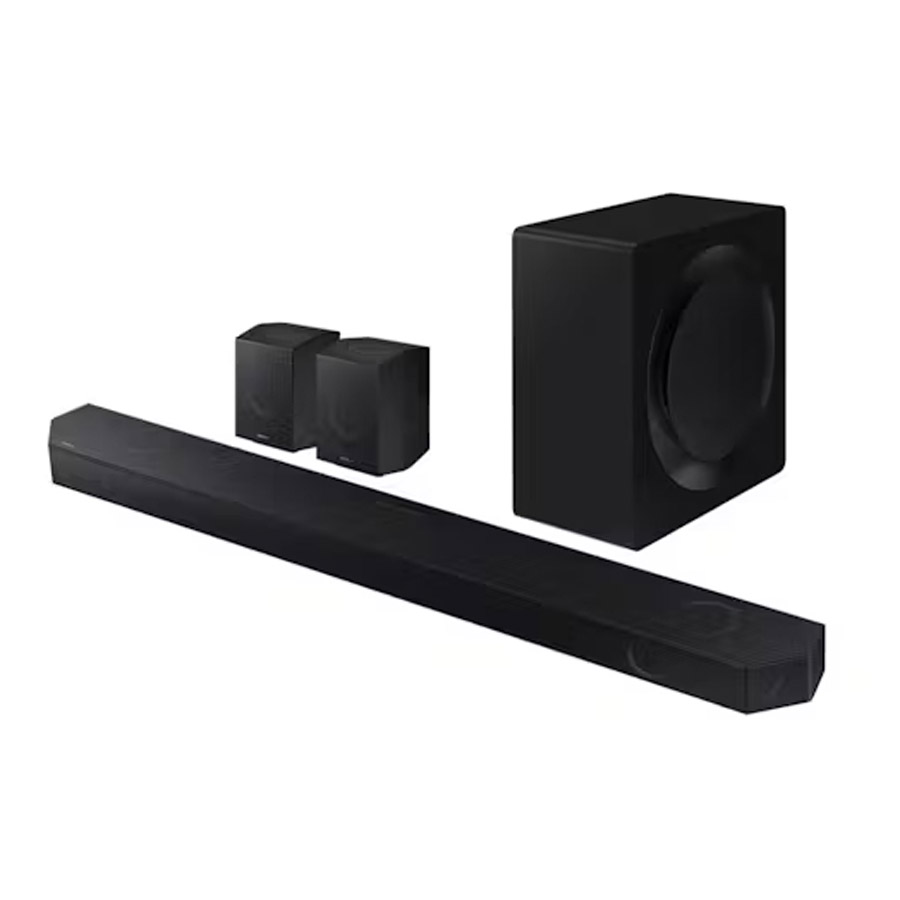
Best premium Dolby Atmos soundbar
Samsung has completely knocked it out of the park with the Q990D. The sheer power and class-leading immersion that this is capable of makes it our favorite high-end pick.
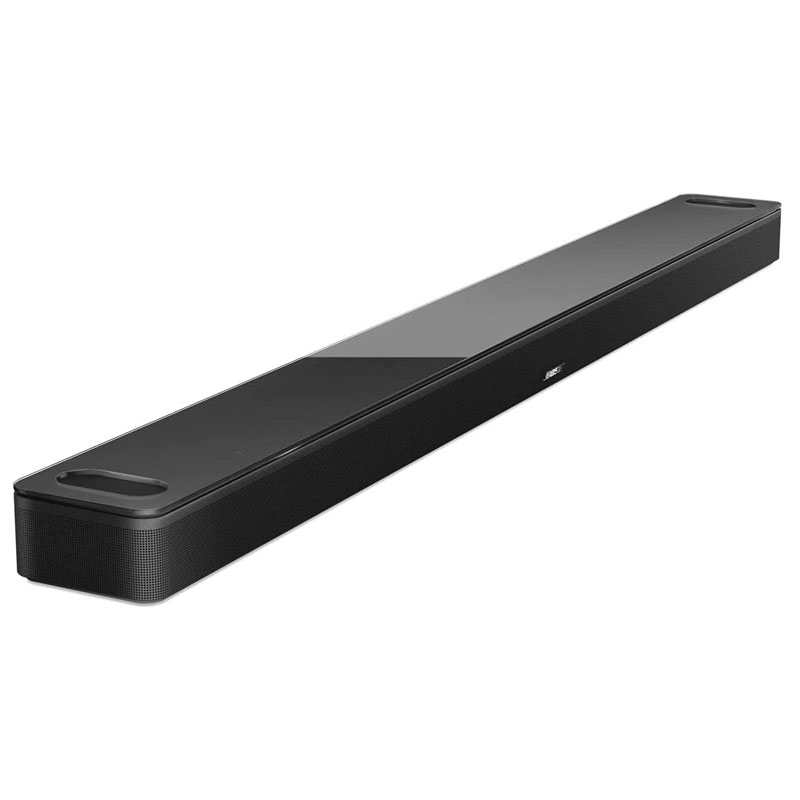
Best compact Dolby Atmos soundbar
Want to get closer to that home theater sound but don't have the space for a full surround sound system? Bose has the solution with the Smart Soundbar.
Read more below
Load more products
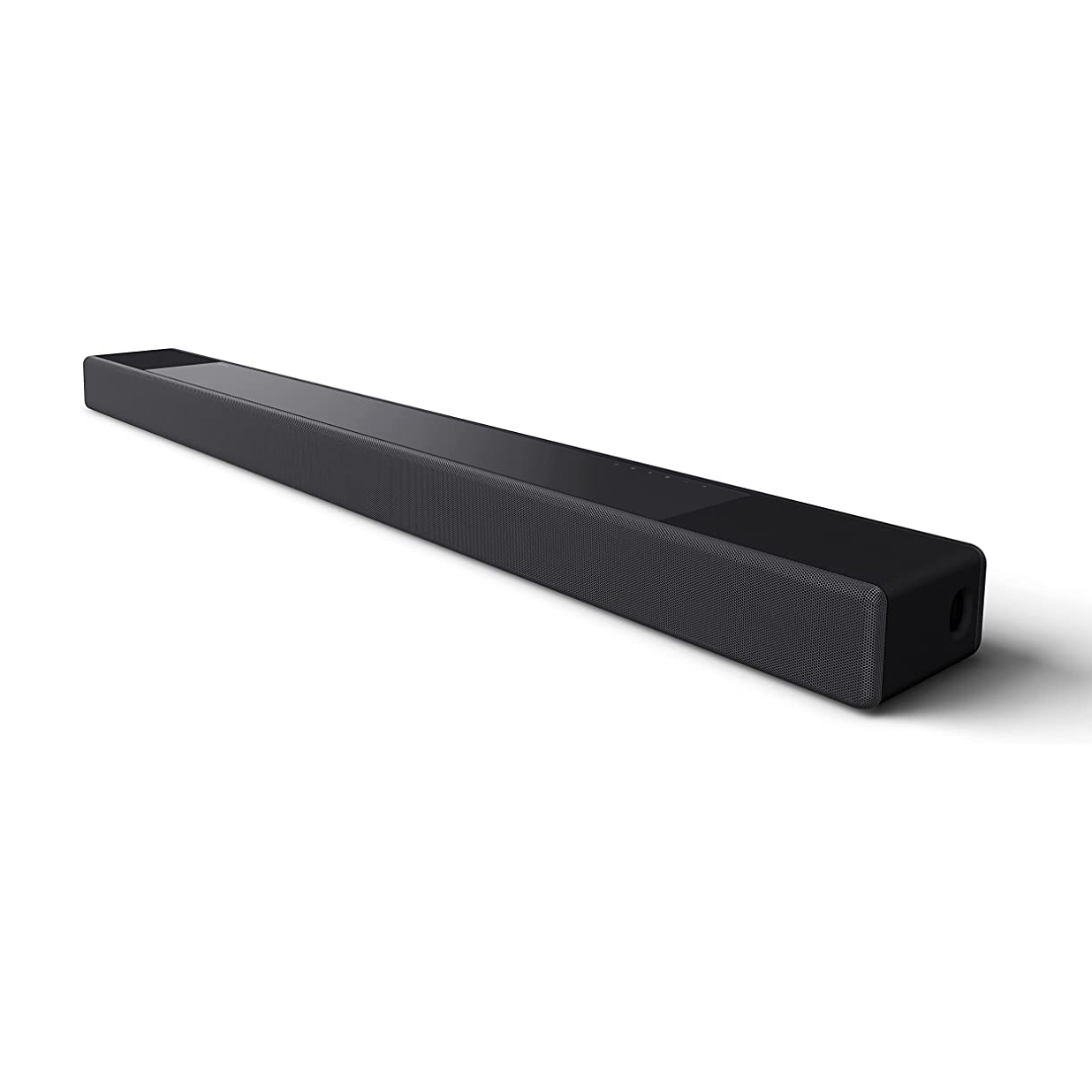
Best Dolby Atmos soundbar for gamers
With two HDMI 2.1 ports, 4K 120Hz passthrough and VRR support, the HT-A7000 not only sounds great, but is the ideal choice for gamers
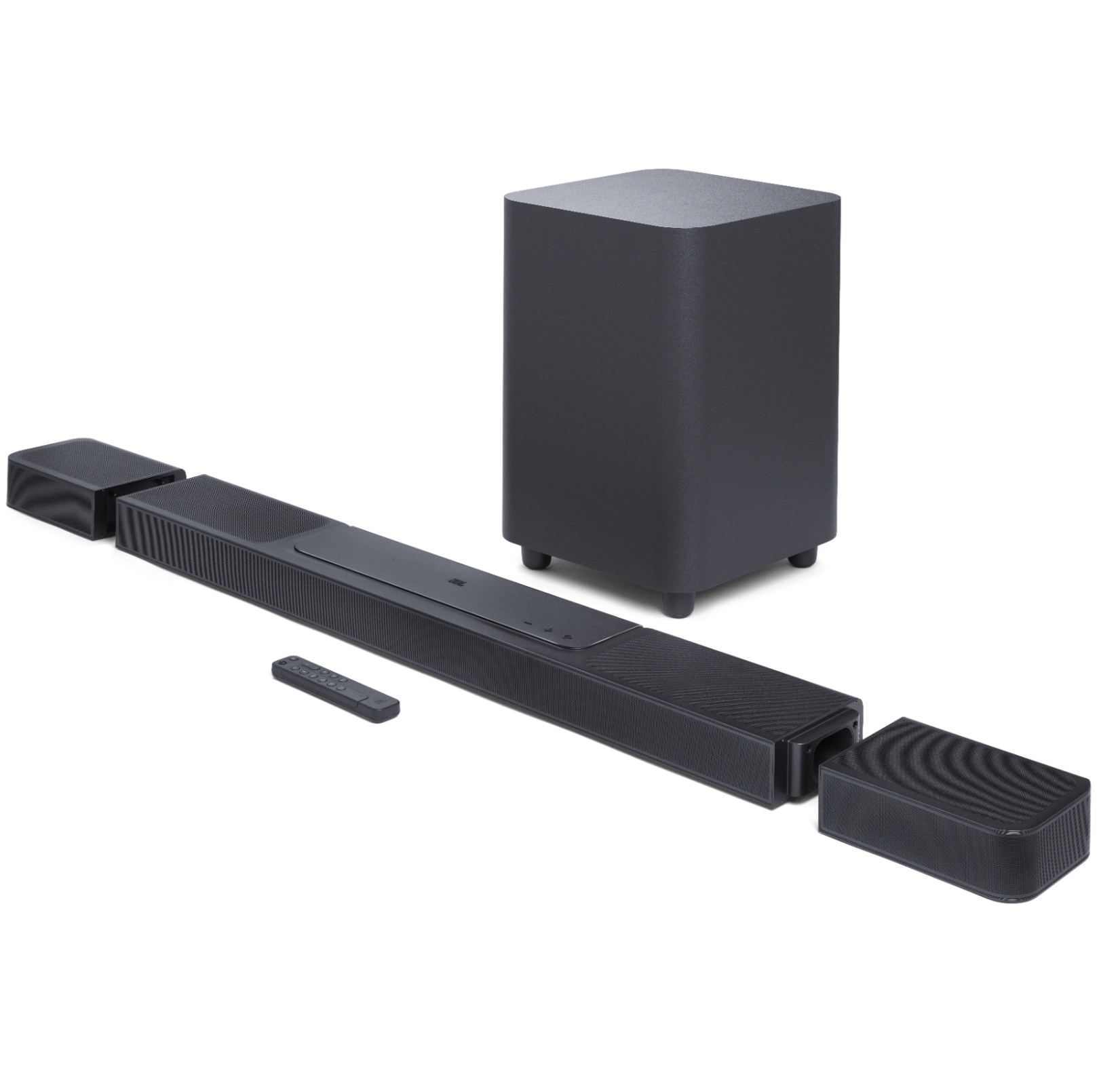
The best soundbar for sheer flexibility
With four HDMI ports to connect other sources and rechargeable, wireless surround speakers, the JBL 1300X really adapts to what you need.
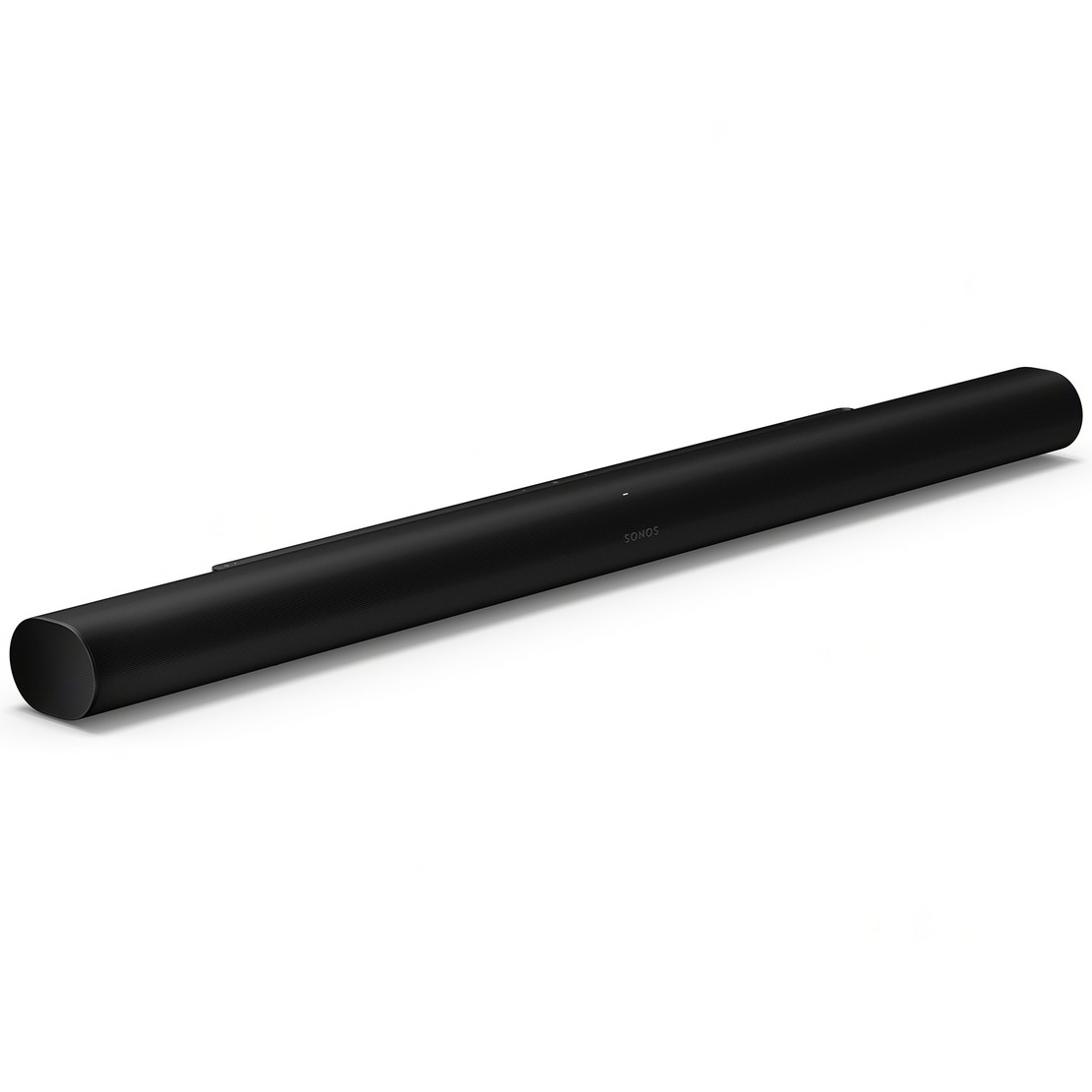
The best soundbar for Sonos fans
Sonos' soundbars are all excellent quality, but the Sonos Arc Ultra improves on its predecessor with superb bass, brilliant Dolby Atmos reproduction and a refined design.
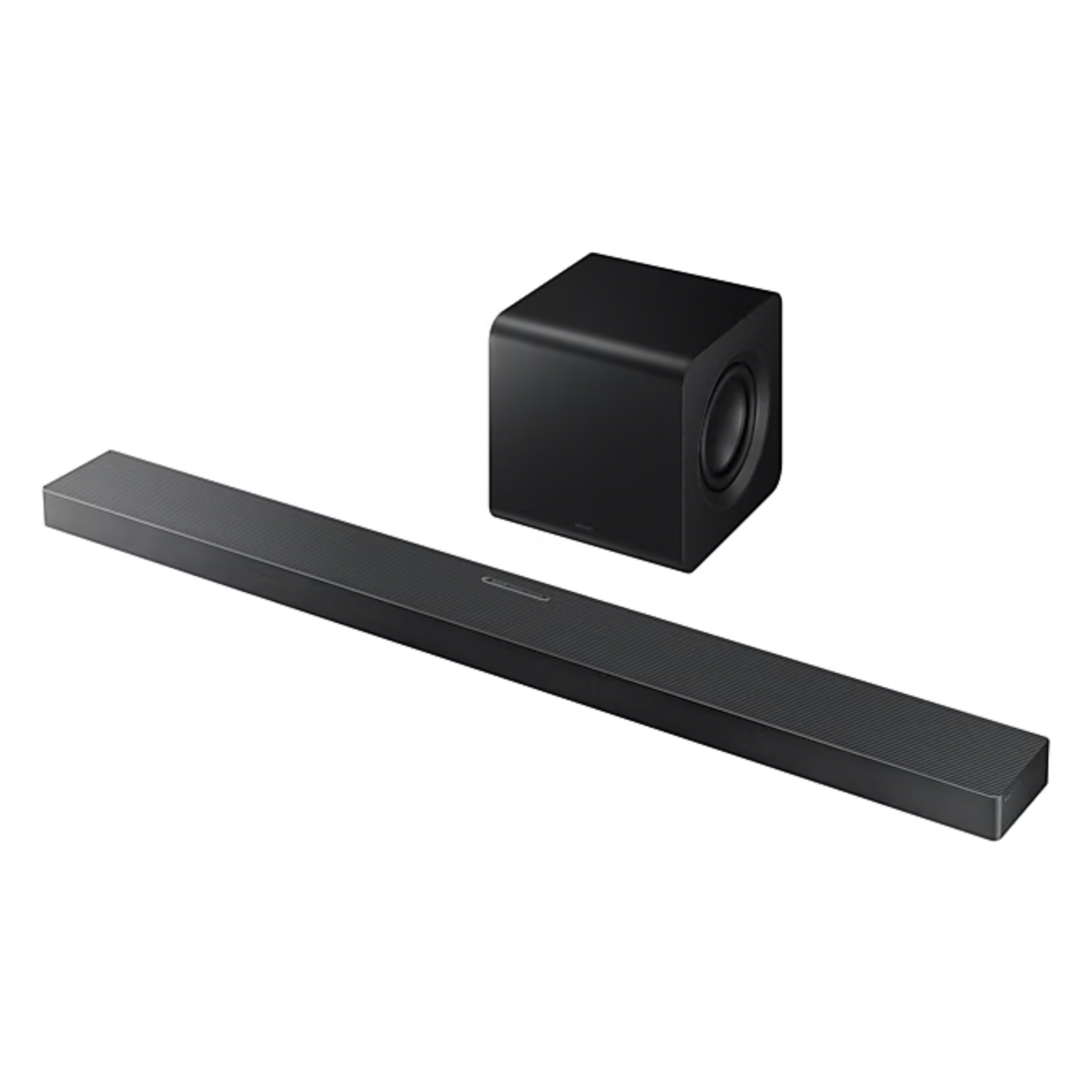
The best soundbar for wall-mounting
This soundbar adjusts its speaker configuration depending on how it's positioned. When set vertically, it takes on a slimmer profile, making it an ideal match for a sleek, wall-mounted TV.

Matt is TechRadar's Managing Editor for Entertainment, and has over a decade of experience in tech publishing. He has been writing about the latest TVs and soundbars since 2017. CES 2024 has been and gone, which gave us a glimpse of all the new soundbars on the horizon. Matt was most impressed by the Samsung HW-Q990D, which has since been added to our guide.
The best Dolby Atmos soundbars you can buy
Why you can trust TechRadar
The best Dolby Atmos soundbar for most people
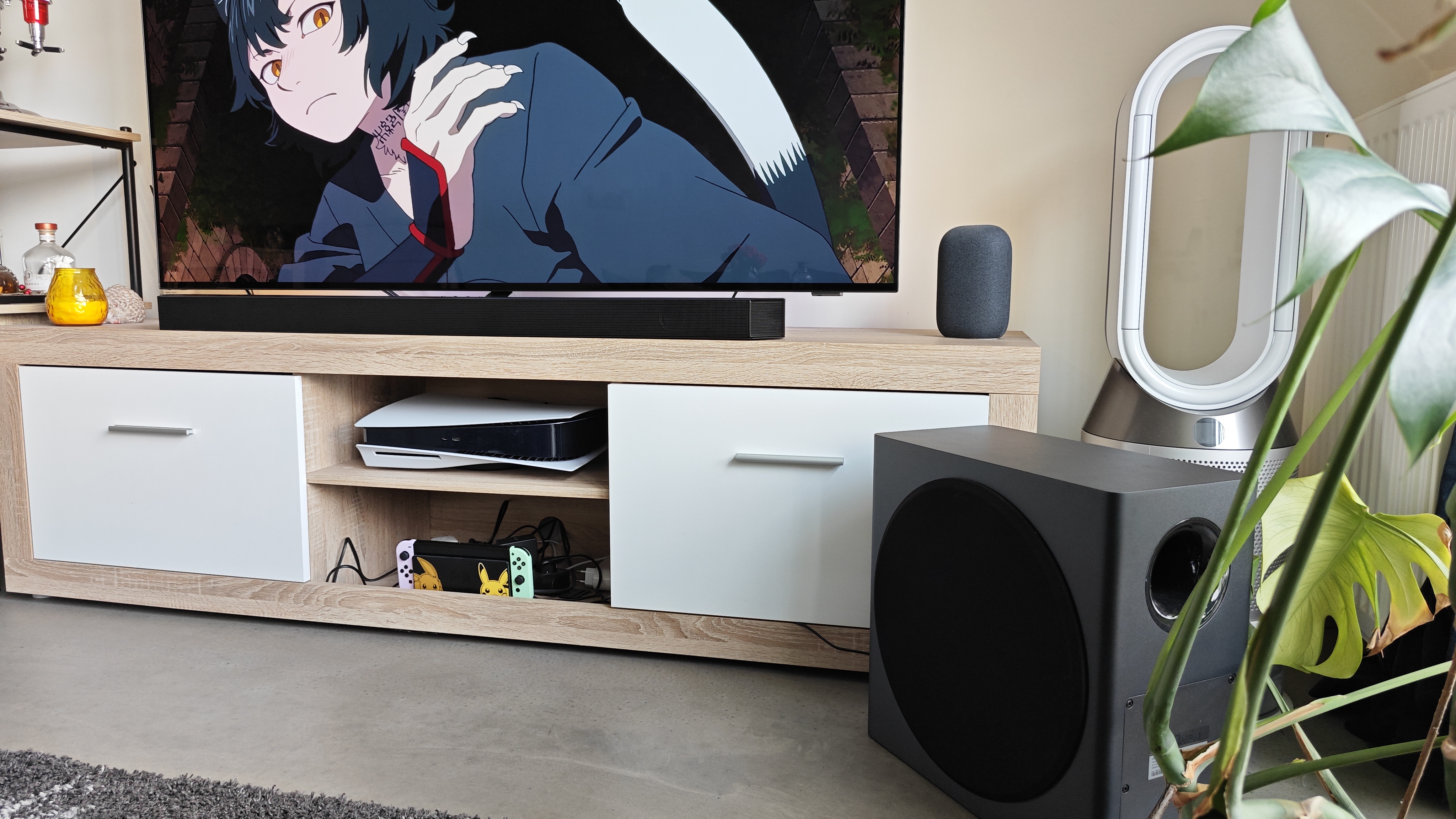
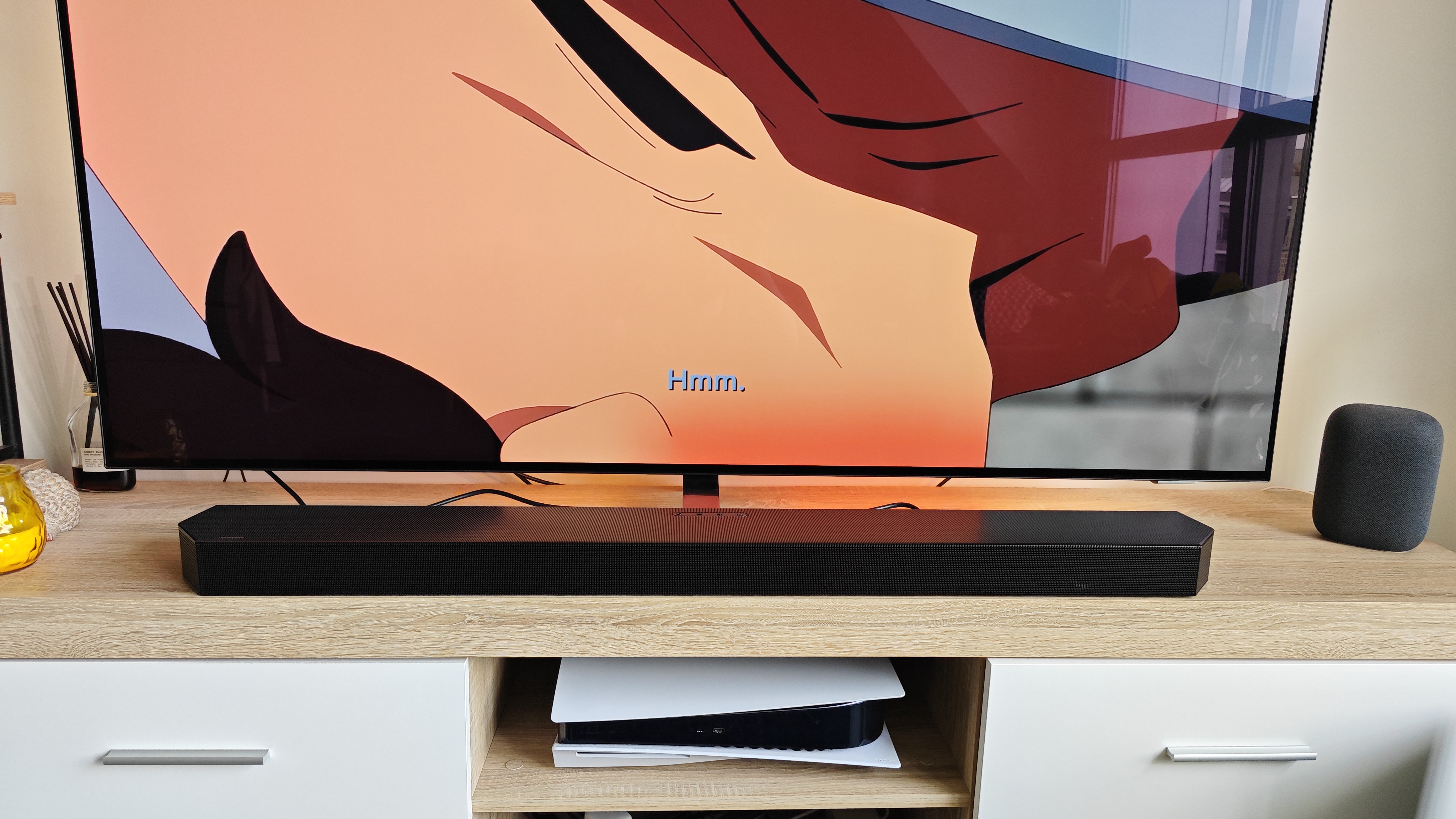
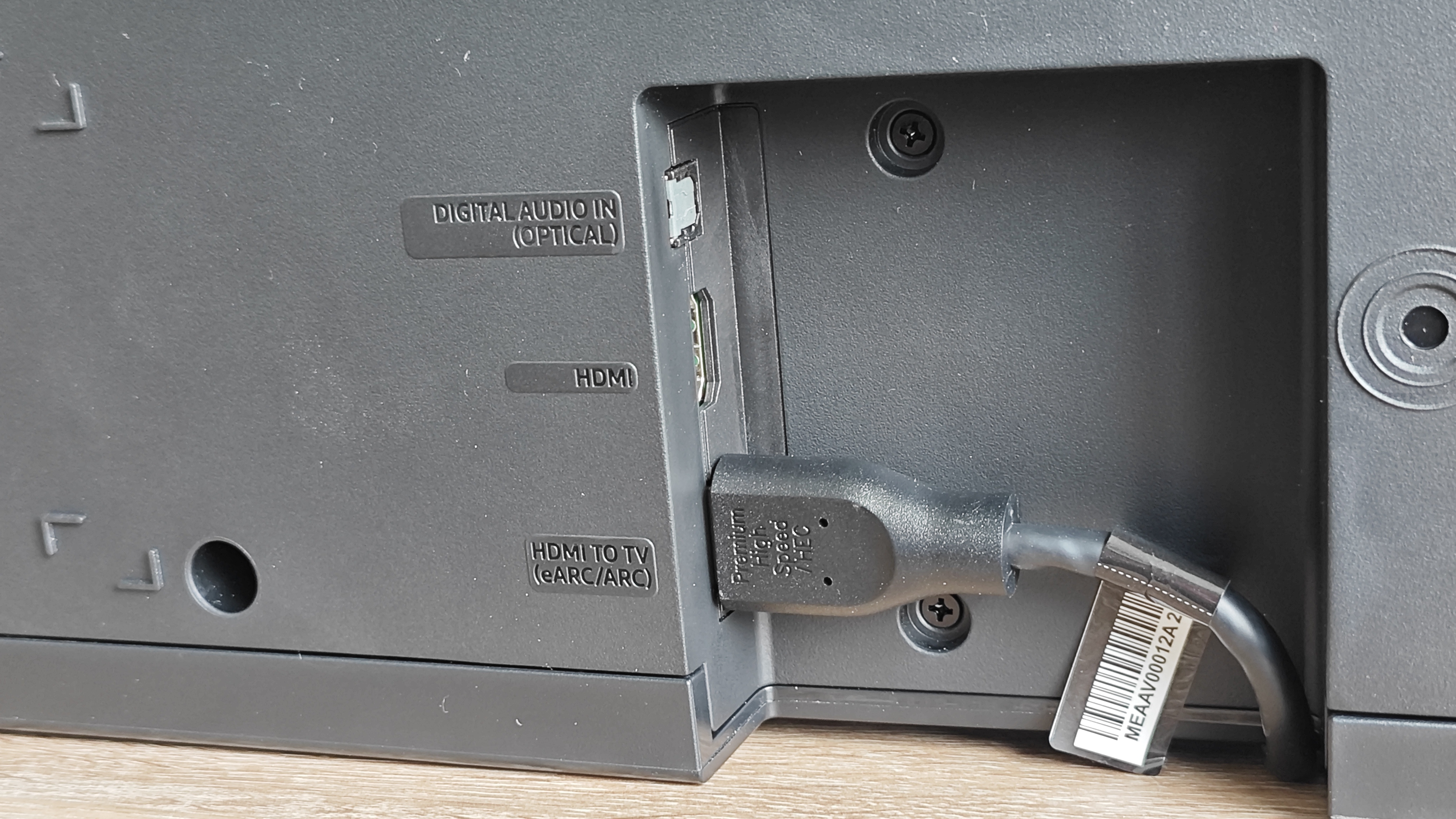
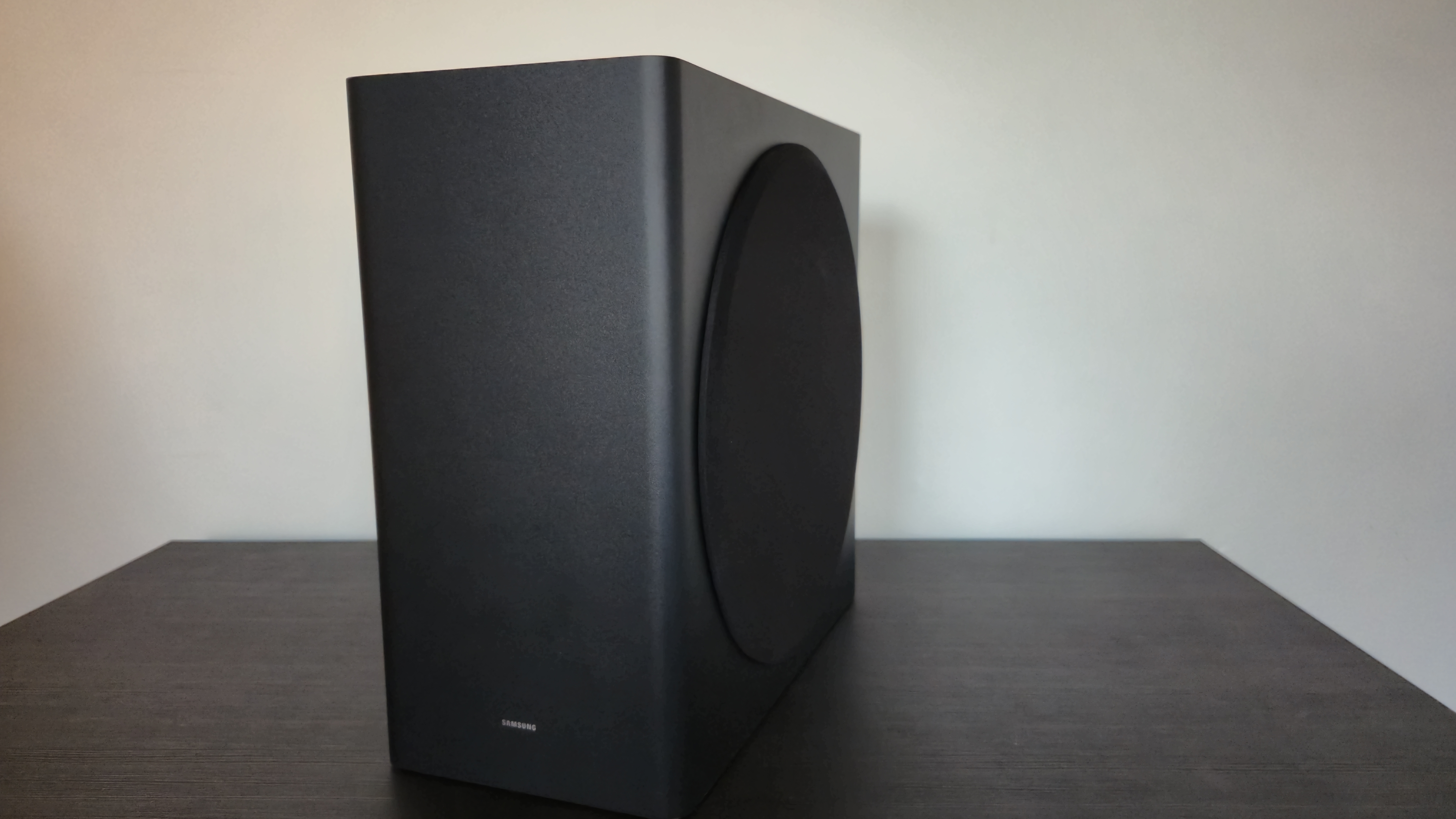
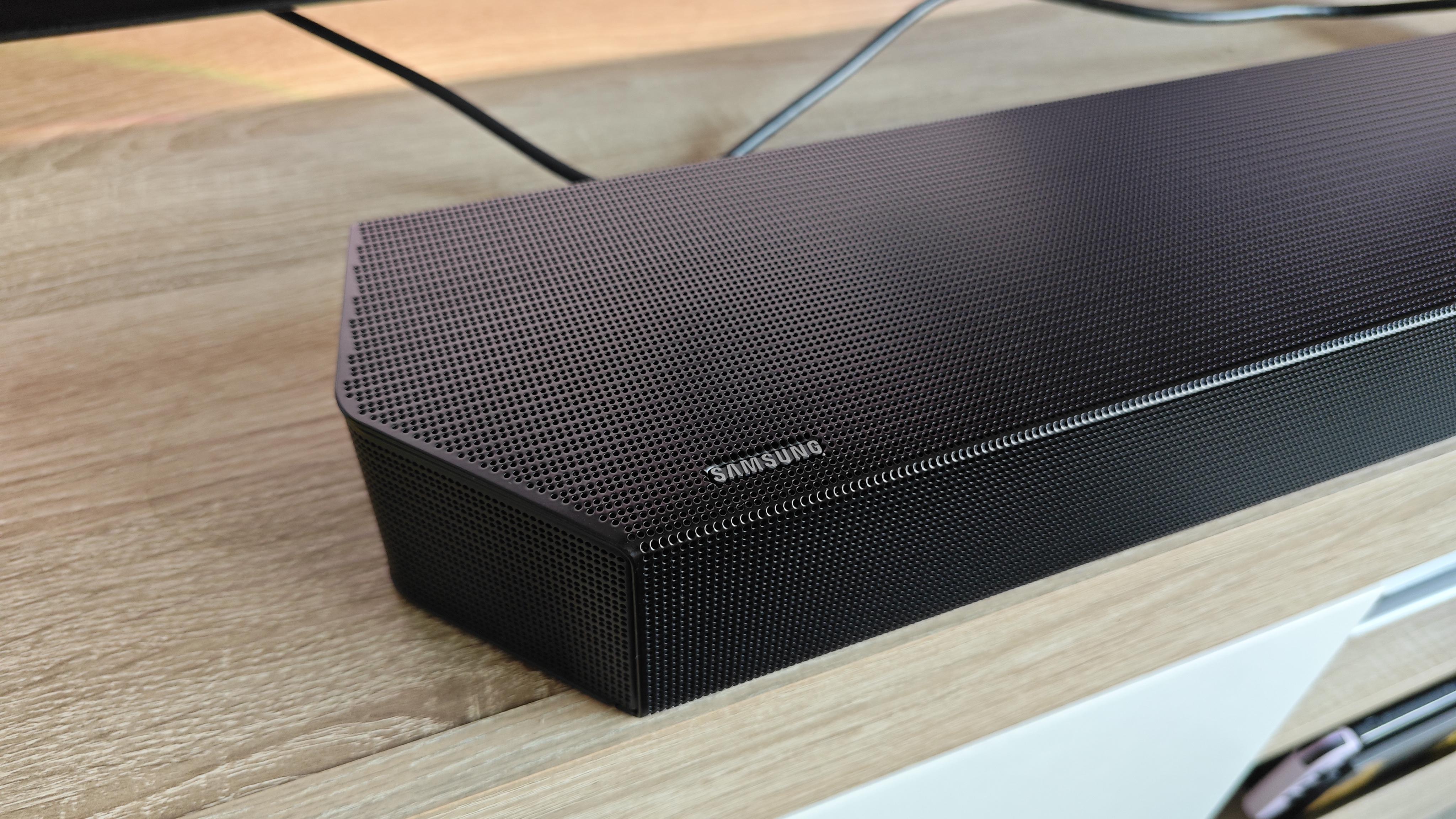
Specifications
Reasons to buy
Reasons to avoid
✅ You want the best value soundbar: The Q800D carries a mid-range price, but delivers premium audio performance and features.
✅ You want effective Atmos sound: The Q800D's sound is powerful and dynamic, but its Atmos presentation impresses even more.
❌ You want 4K 120Hz passthrough: If you have a next-gen console such as a PS5, you'll have to look at other soundbars for 4K 120Hz passthrough.
❌ You want an aesthetically appealing soundbar: The Q800D has a chunky, plain angular look – it won't be winning any design awards.
Effective Dolby Atmos and DTS:X from a soundbar doesn't have to be expensive. This is demonstrated in no better way than by the Samsung HW-Q800D. Along with immersive Atmos effects, the Q800D delivers punchy, impressive sound and a great stock of features, all for an affordable price.
In our review, we complimented the Samsung HW-Q800D on its powerful bass and vocal clarity. We were also pleased with its engaging and accurate mapping of sound to characters and action on screen. But it was the HW-Q800D's surround sound that impressed most. As we said in our review, "Despite the absence of rear channels, this soundbar still asserts a striking spatial impression". For the mid-range price you pay, we really couldn't find fault with the Q800D, barring the fact that it isn't much different from its HW-Q800C predecessor – in itself not a bad thing.
Features-wise, the HW-Q800D comes with Wi-Fi and Bluetooth support for music playback as well as Samsung's Q Symphony, which works with Samsung TVs from 2022 onwards, utilizing the TV's built-in speakers to create an even fuller sound. One thing missing here is 4K 120Hz passthrough on its HDMI ports for gaming, with only 4K 60Hz available.
The Q800D's only real let-down is its somewhat chunky, angular design. While soundbars generally aren't appealing to look at, the Q800D is particularly plain. But, otherwise, it carries price vs performance to near perfection and is easily the best Dolby Atmos soundbar for most people.
Read our full Samsung HW-Q800D review
The best budget Dolby Atmos soundbar
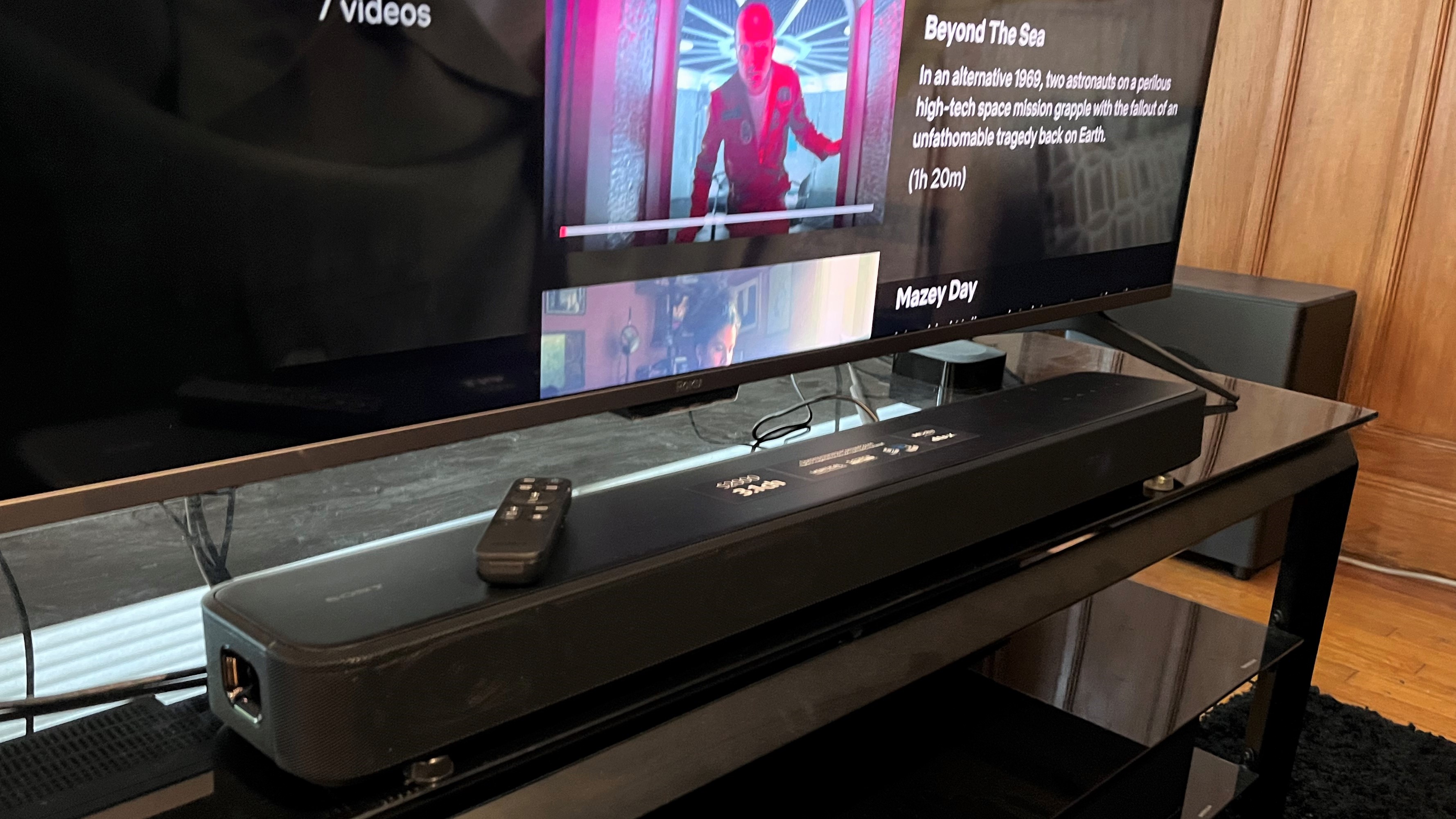
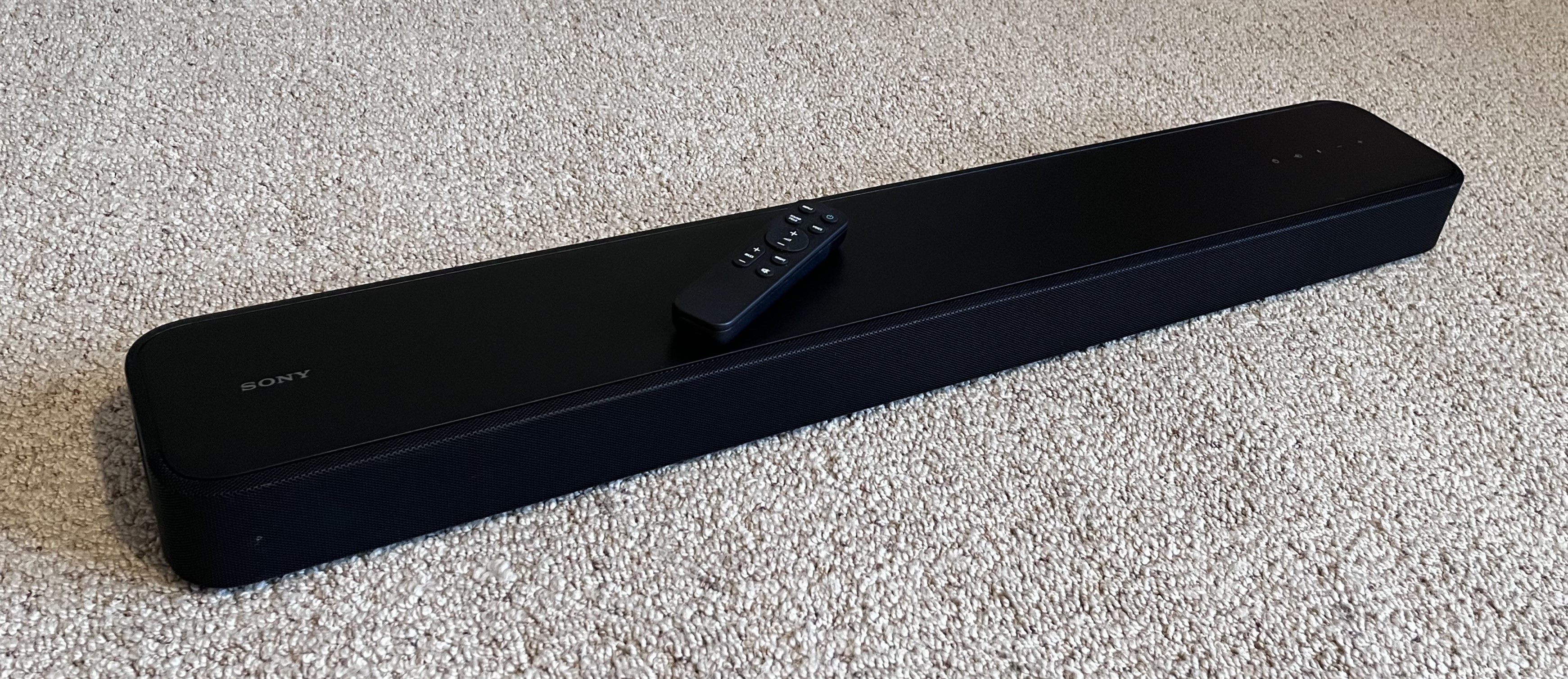
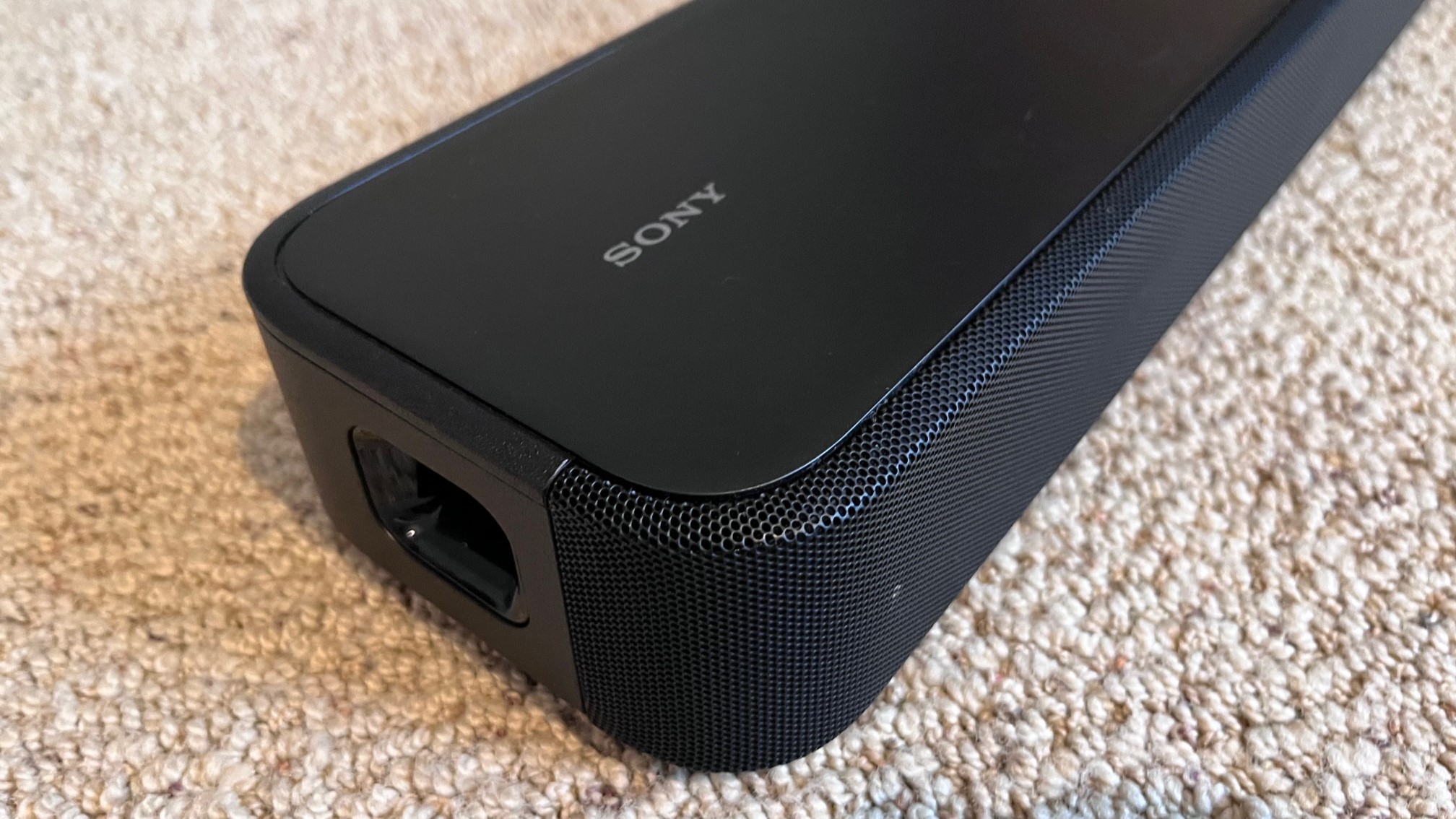
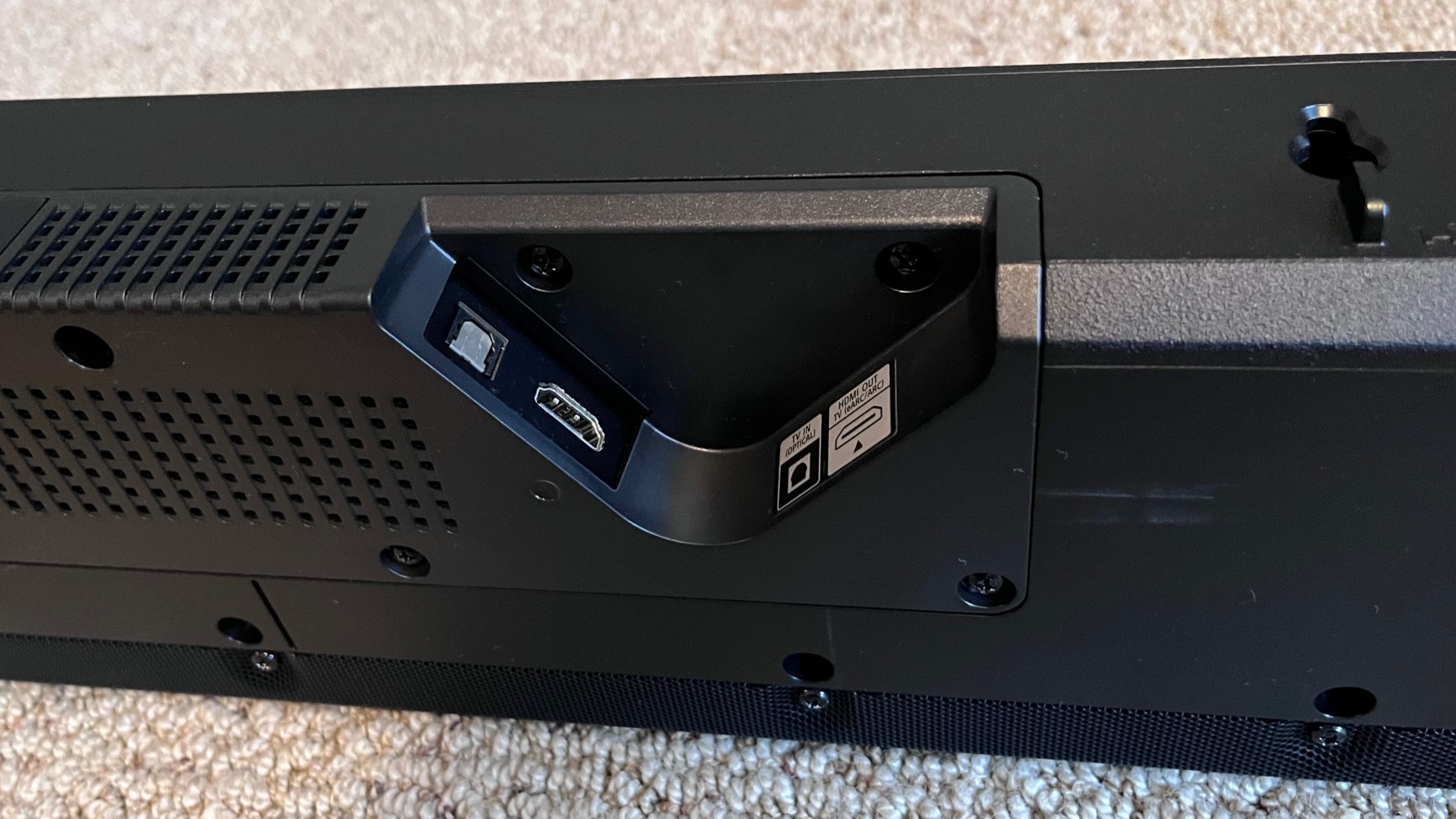
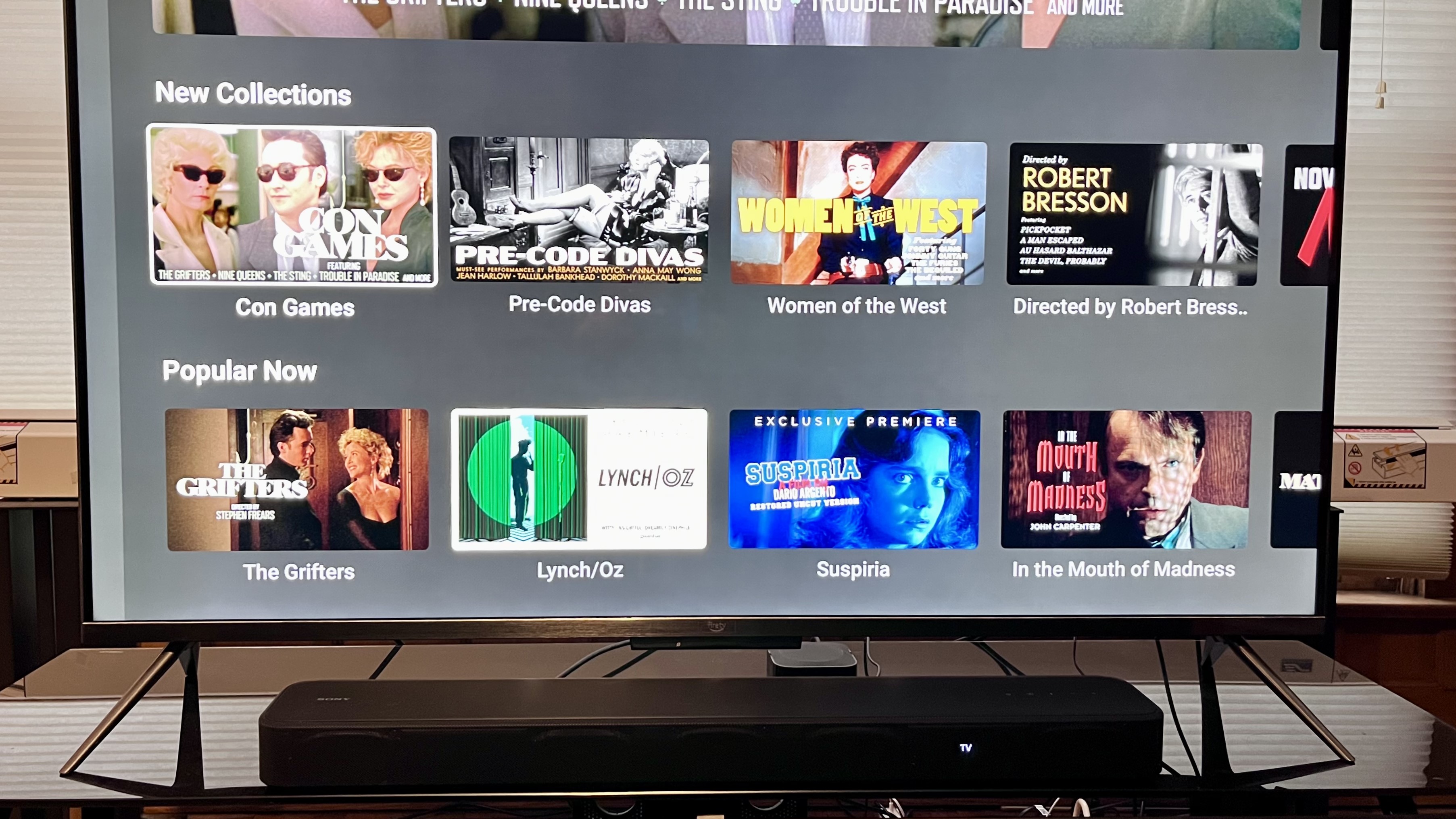
Specifications
Reasons to buy
Reasons to avoid
✅ You want good Dolby Atmos on a budget: The Sony HT-S2000's Atmos reproduction is impressive for a comapct, all-in-one bar.
✅ You want clear speech: The HT-S2000's dialogue is crystal clear and will beat a lot of TV's built-in speakers.
❌ You want Wi-Fi for music streaming: The Sony HT-S2000 only supports Bluetooth for music playback and streaming.
❌ You want the most immersive soundbar: While its virtual processing of Atmos is great, soundbars such as the Samsung HW-Q990D and Hisense AX5125H will deliver a more 'real' Atmos sound with their multiple units.
Sony absolutely nailed the brief of delivering big sound from a compact form. Its budget soundbar, the HT-S2000, strikes the perfect balance of giving your TV's audio a big boost in immersive audio power, while not taking up too much valuable screen space.
During our testing, we said that we were blown away by its "impressive level of immersion given its basic speaker array and compact form factor – much of this is owed to Sony’s proprietary processing". Apart from the incredibly effective immersive audio processing power, the clear dialogue and defined bass were another two highlights about the sound quality from our review.
It's not all completely praises, though. The trade-off for its reasonably affordable price tag is that your wireless streaming connectivity options are limited to Bluetooth 5.2, there's also only one HDMI port and optical digital input, but you can still pair the HT-S2000 with other Sony speakers and subwoofers.
Based on previous sales, we have seen the Sony HT-S2000 drop to $349 in the US and £299 in the UK from its initial $499 and £449 respective prices so it is worth looking out for a deal if you do manage to catch one for this Sonos Beam (Gen 2) (at #9 in this list) alternative.
Read our full Sony HT-S2000 review.
The best budget soundbar for Dolby Atmos surround
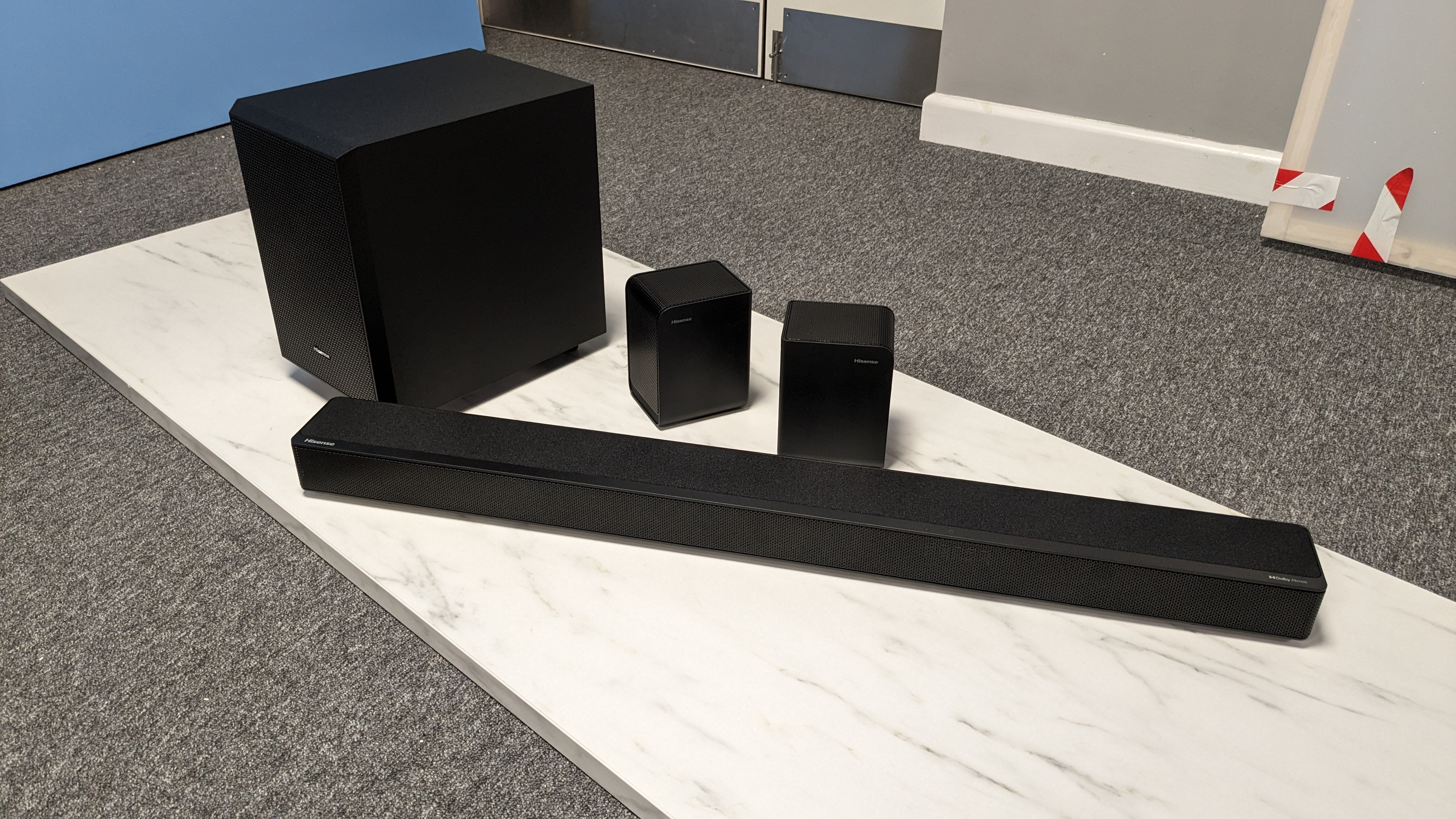
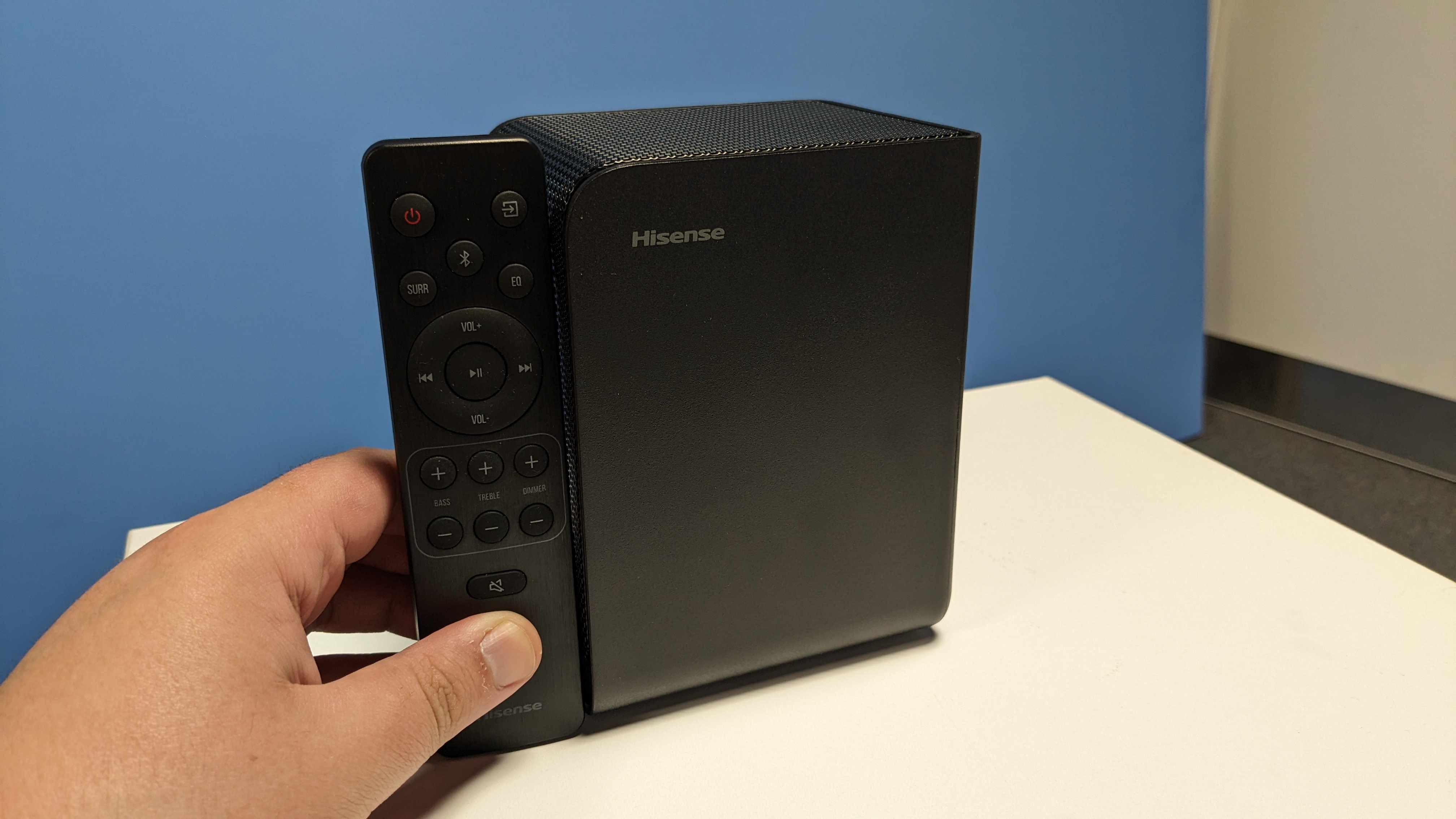
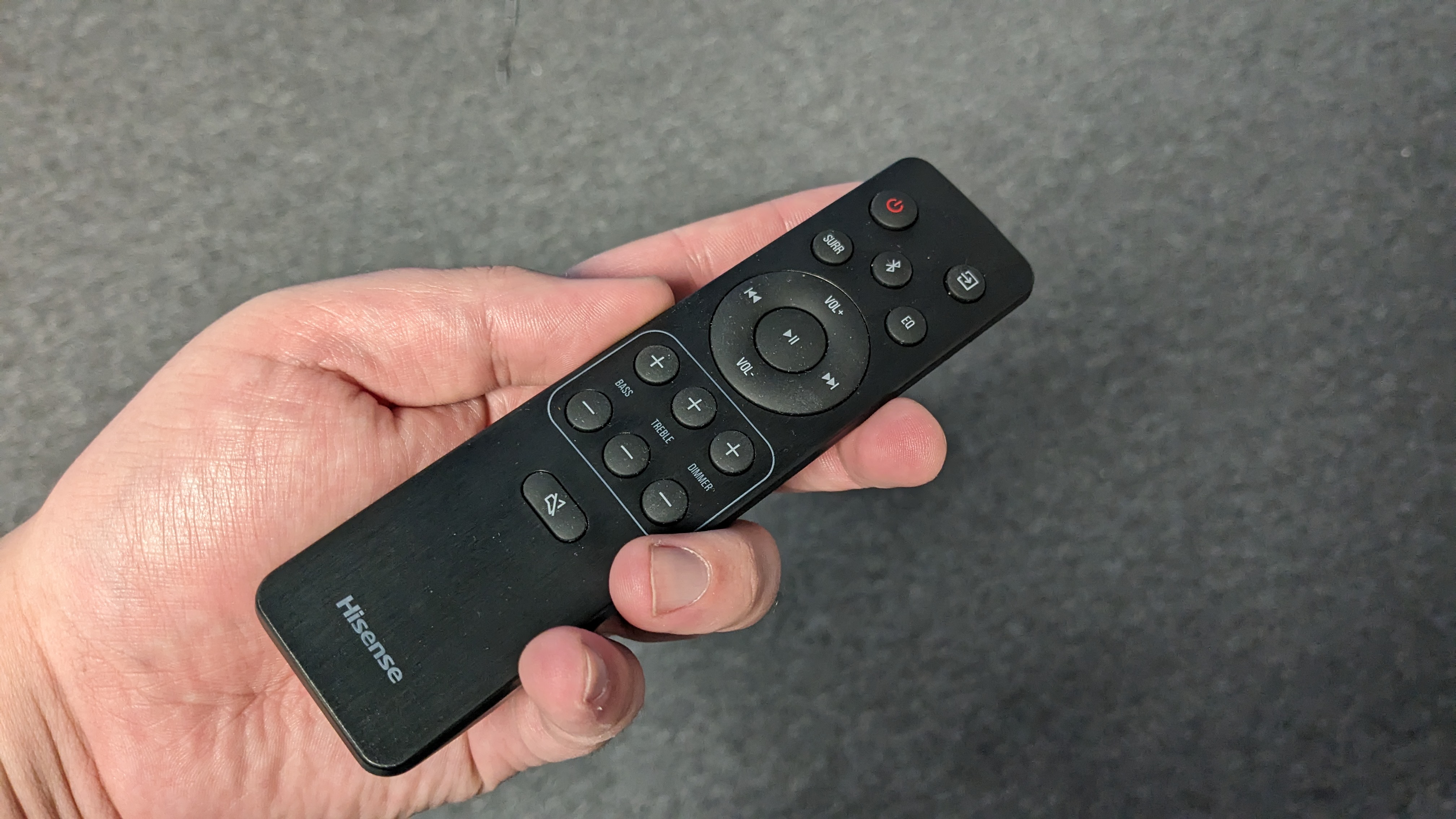
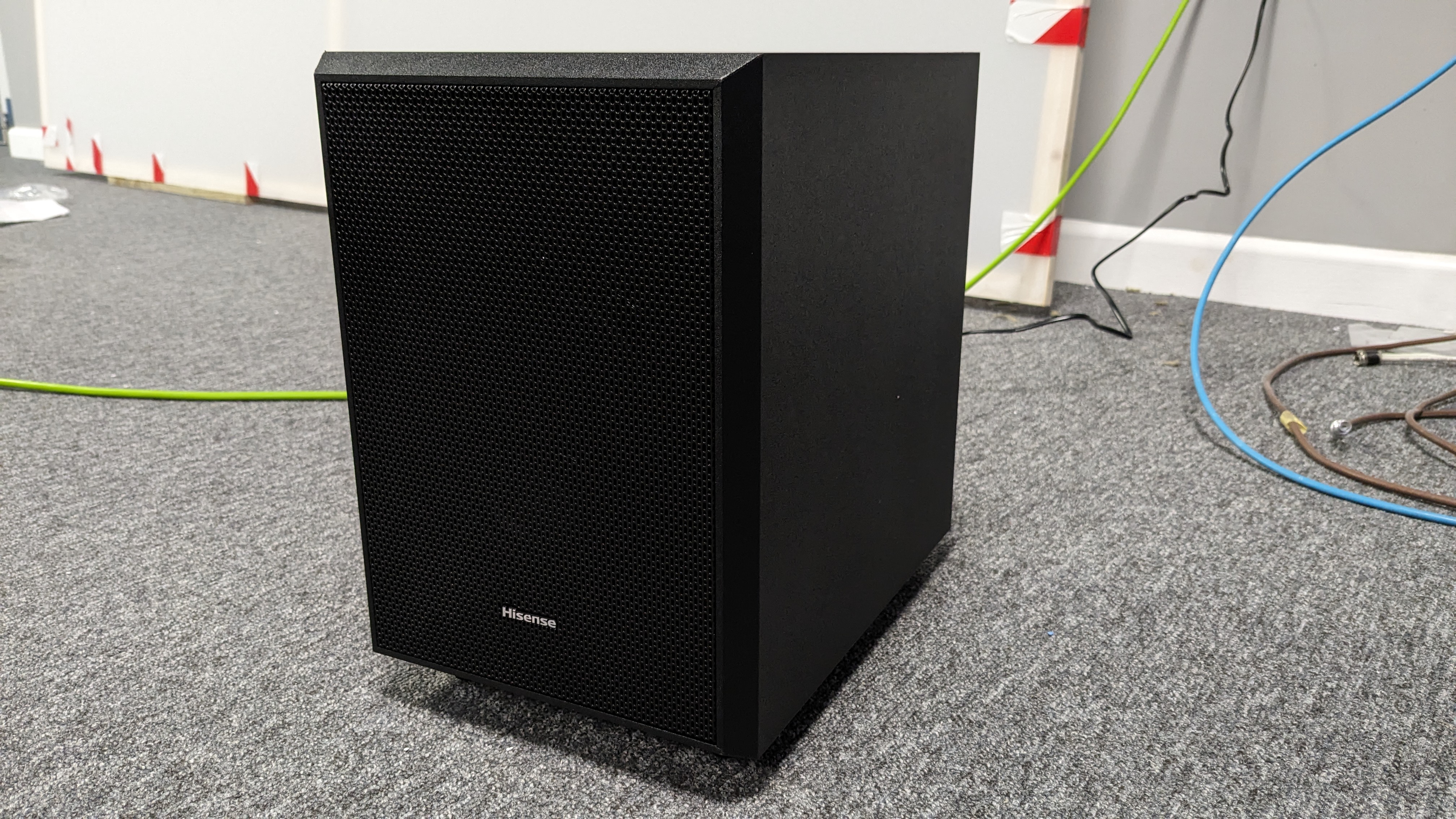
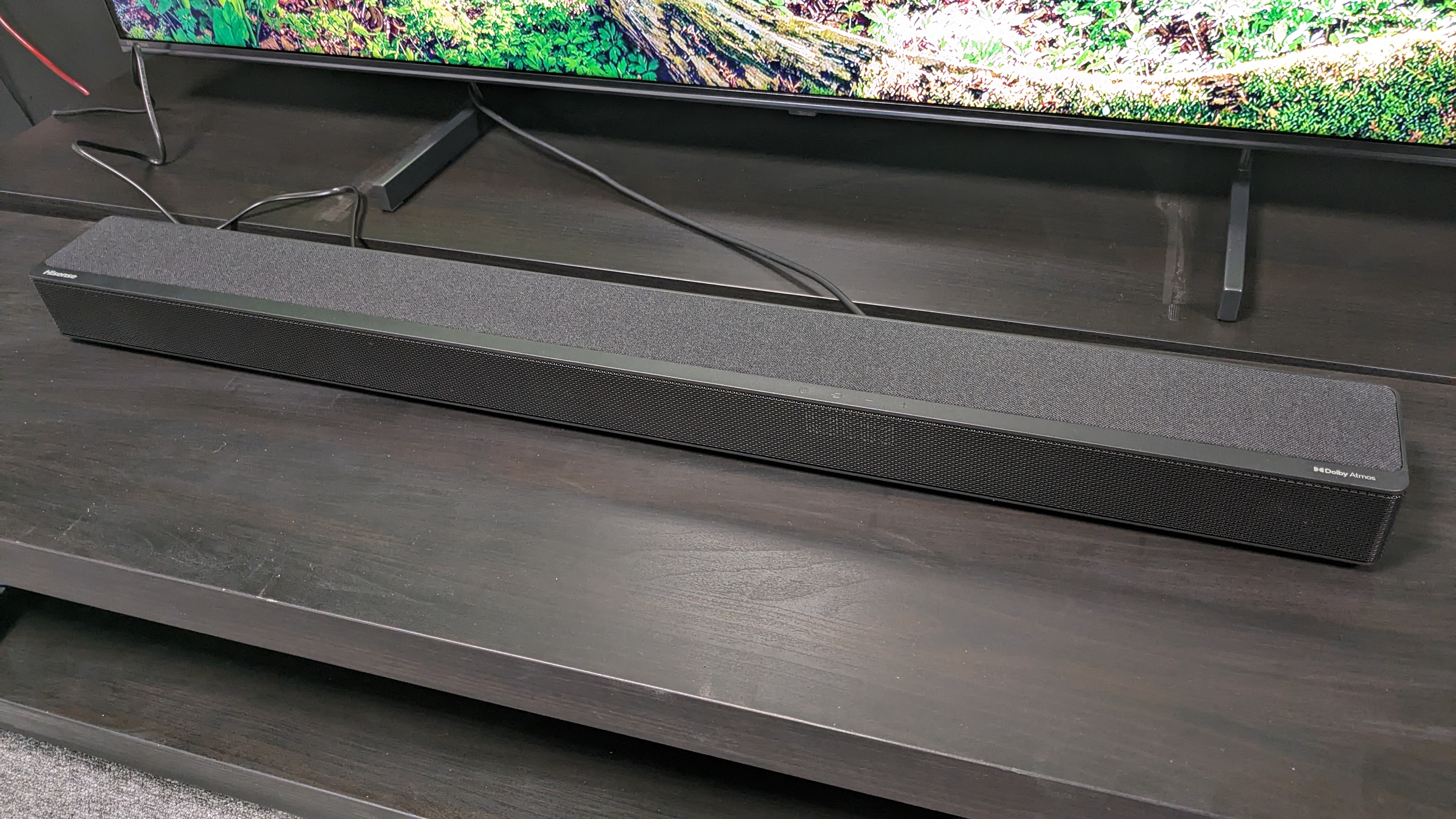
Specifications
Reasons to buy
Reasons to avoid
✅ You want 'real' Dolby Atmos for cheap: With a subwoofer and two rear speakers (and even height channels), the AX5125H delivers an immersive, Atmos sound for a very affordable price.
✅ You want clarity and power: The AX5125H may be cheap, but its sound is engaging and powerful enough that it suggests a much more premium soundbar.
❌ You want the best soundbar for music: Limited to Bluetooth quality, the AX5125H isn't the best soundbar for music.
❌ You want a more customizable soundbar: The AX5125H doesn't have an app for EQ adjustments, only simple bass and treble buttons.
Dolby Atmos soundbars in the budget range are typically single-unit solutions that deliver Atmos height effects and surround sound using virtual processing. The Hisense AX5125H breaks with that tradition by using real upfiring speakers on its main soundbar, along with wireless surround speakers and a subwoofer for an incredibly low $350 / £350 / AU$450 price.
Hisense’s budget 5.1.2-channel system surprised us when we reviewed it with its “effective Dolby Atmos delivery” and surprisingly wide soundstage, which gave all aspects of the soundtrack room to breathe.” Dialogue, too, was “crystal clear” in our assessment of the AX5125H system’s sound quality. If there was one thing that disappointed us, it was the performance of the surround speakers, which could get overwhelmed when faced with aggressive soundtrack mixes, but overall the system’s feisty sound wowed us for the price.
For a $350 soundbar system, you wouldn’t expect premium build quality, and that’s an area where the Hisense falls short. But while its looks skew toward basic and bland, it has a front-panel alphanumeric display to provide visual feedback when making adjustments to the system using the supplied remote control – a rare feature at this price, and a valuable one.
With only Bluetooth onboard for wireless music streaming, the Hisense AX5125H isn’t the last word in sound quality with music, but we still found music listening to be an enjoyable experience, and it could be played loud without straining the system. You’ll need to pay plenty more to get a 5.1.2-channel Dolby Atmos sound system that performs better than this Hisense package, and for many people, we think that Hisense’s budget soundbar will more than suffice.
Read our full Hisense AX5125H review
The best mid-range Dolby Atmos soundbar
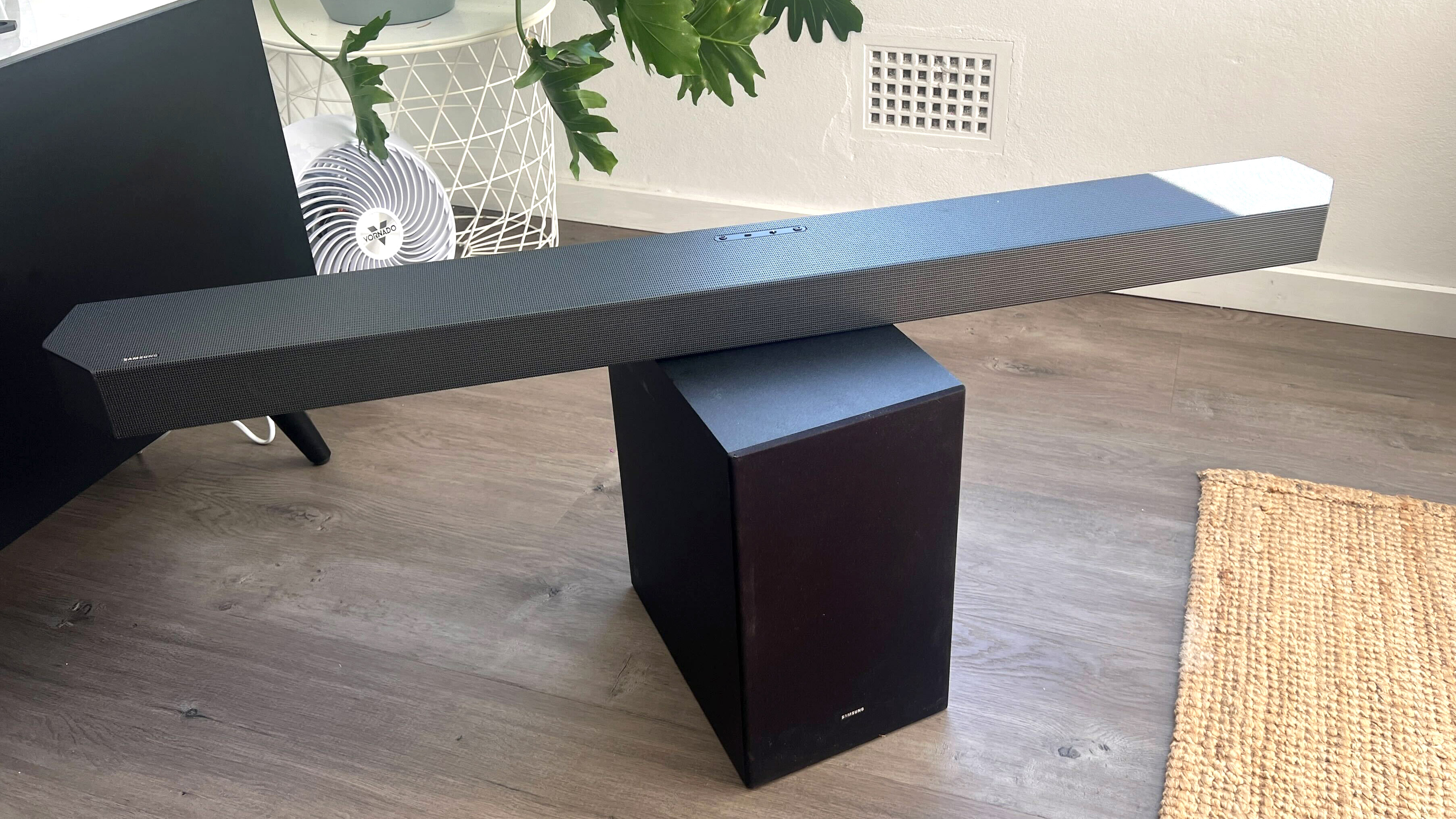
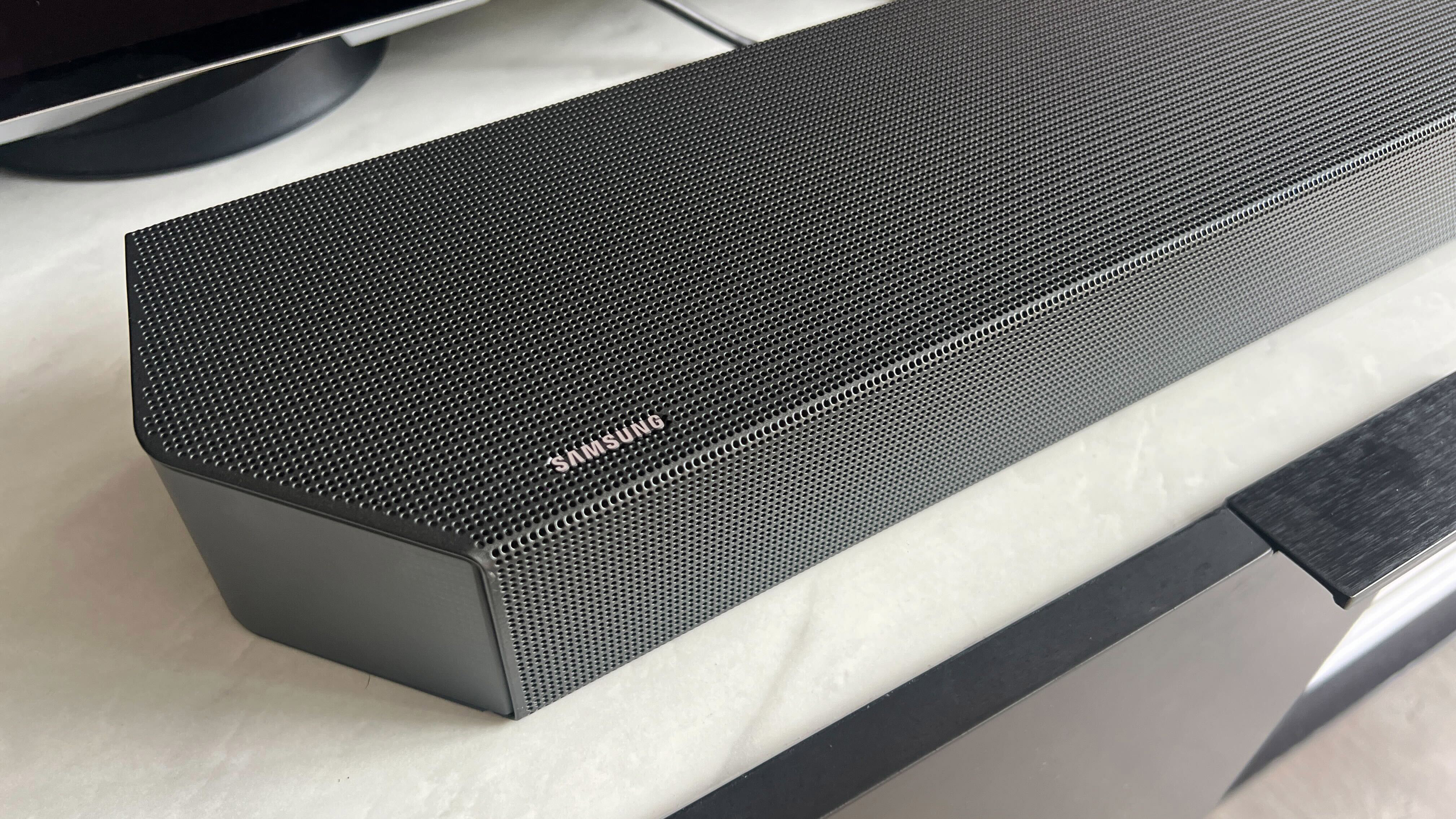
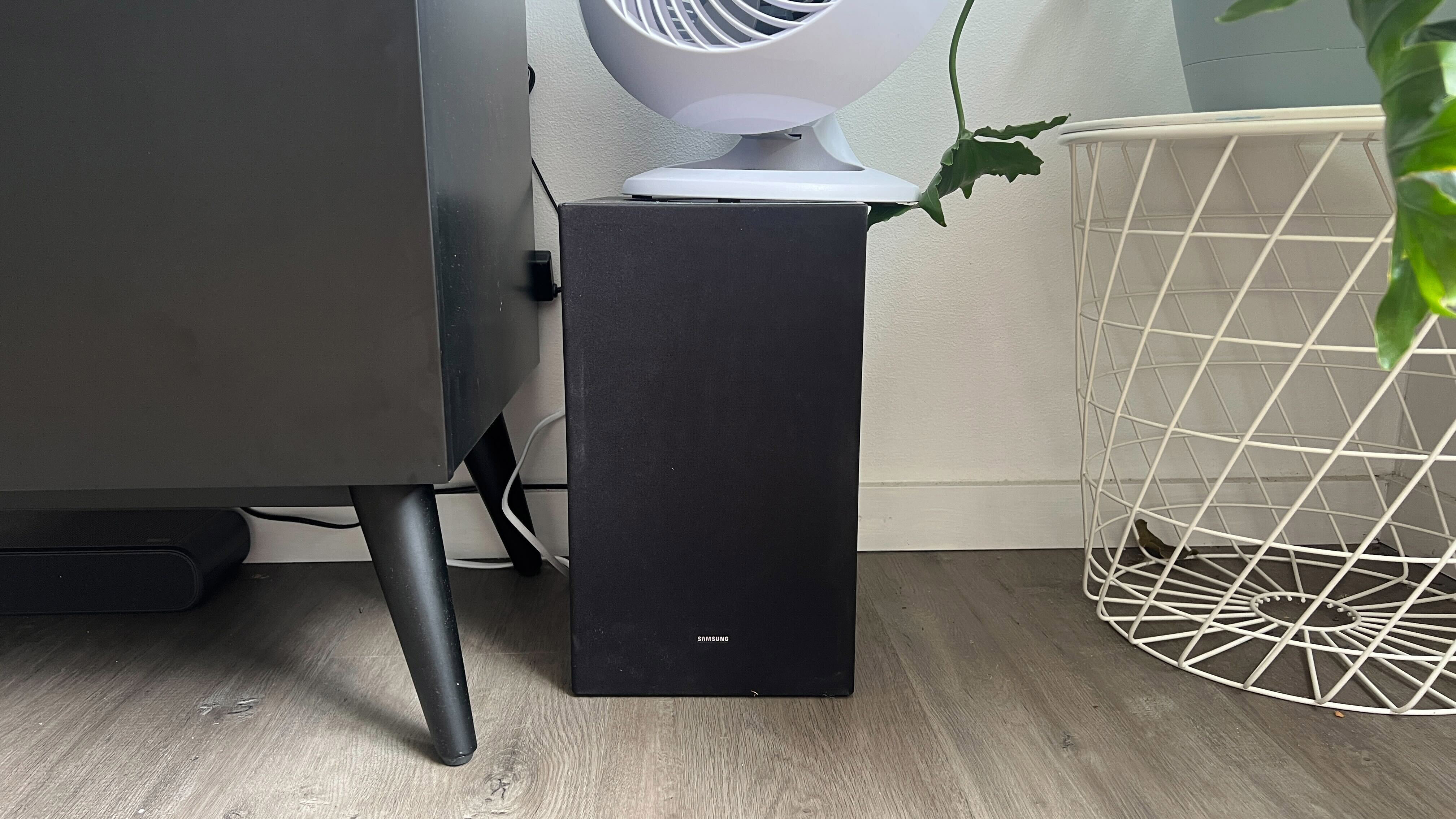
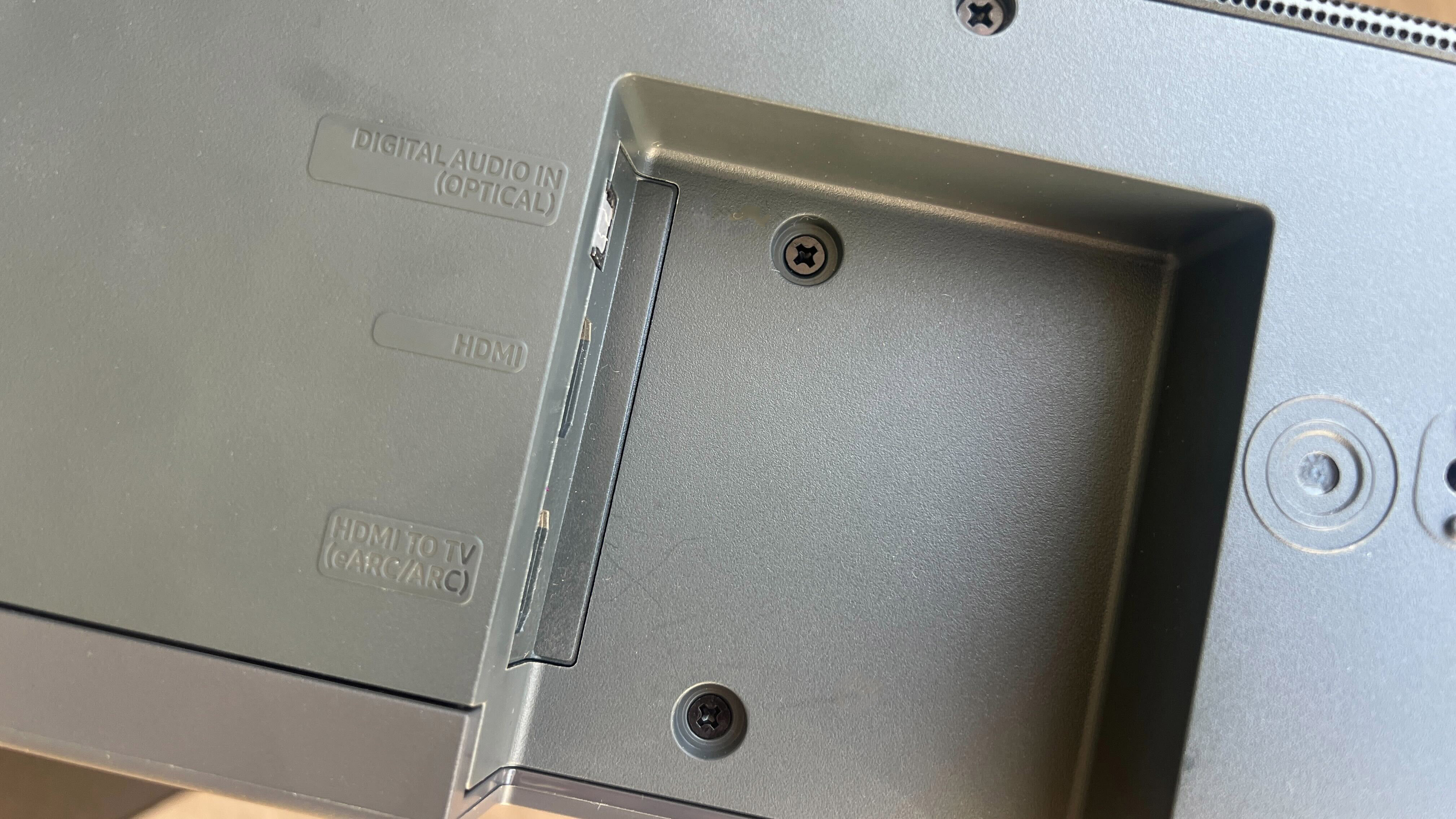
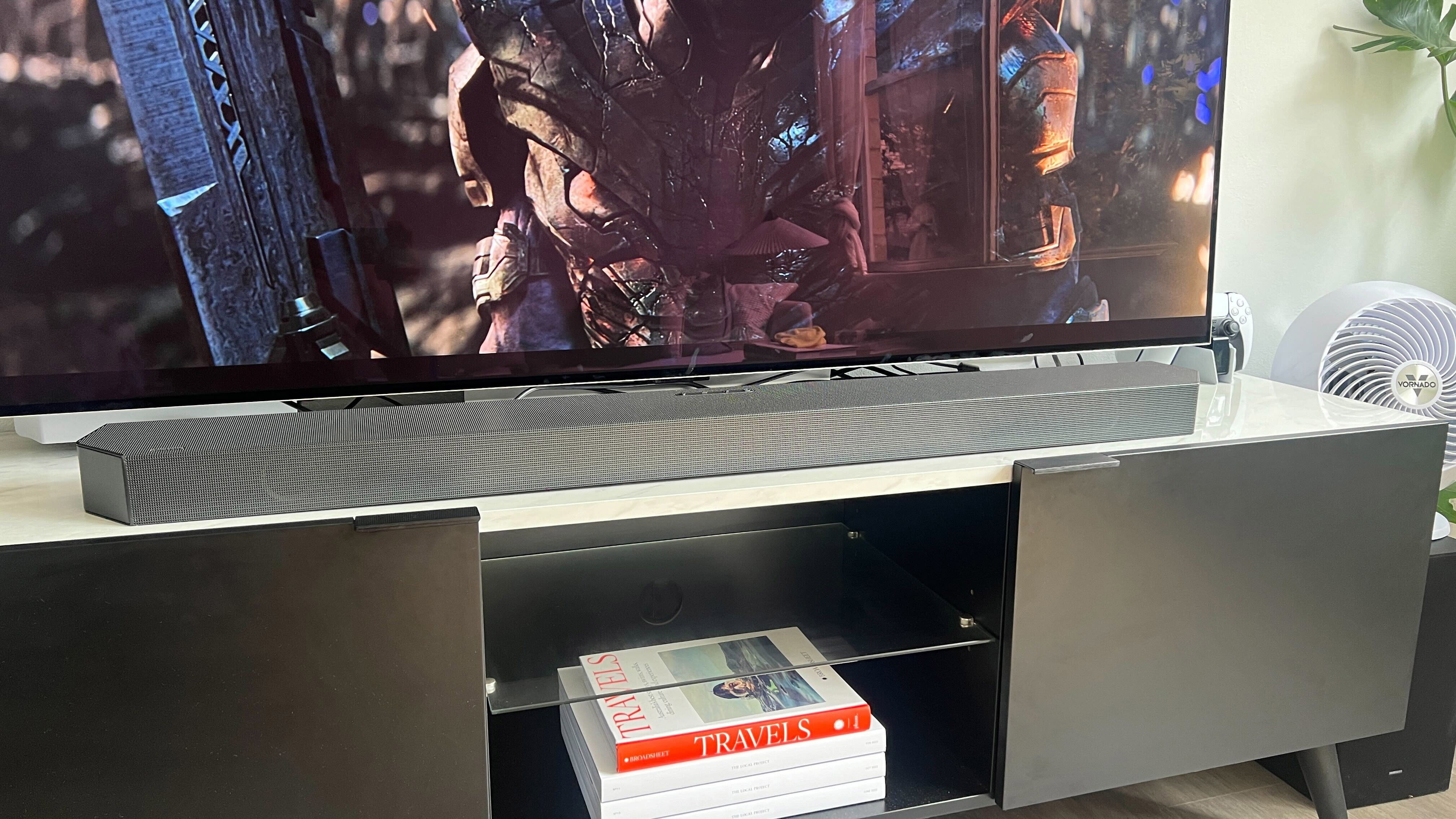
Specifications
Reasons to buy
Reasons to avoid
✅ You want a solid soundbar for your home theater: The Q700C has a good amount of punch and decent enough Atmos effects.
✅ You have a compatible Samsung TV: The Q700C comes with Q Symphony built-in – pair it with a Samsung TV from 2022 onwards and get more sound for your money.
❌ You can afford the Samsung HW-Q800D: While the Q700C's sound is good overall, the step-up Q800D is much better and often only a fraction more in price.
❌ You want the most accurate Atmos presentation: The Q700C does a decent job with Atmos, but soundbars like the Hisense AX5125H and Samsung Q800D are better.
Samsung has priced its HW-Q700C smack bang in the middle of the Dolby Atmos soundbar market so if your budget is exactly $549.99 / £599 / AU$899, then we have the ideal bar and subwoofer combination for you. Of course, it has to be said if you can spend just a little more, you can unlock even more powerful audio quality with the Samsung HW-Q800D at #1 in this list.
The HW-Q700's soundstage still feels incredibly wide thanks to its 3.1.2 channels of sound, coming from a center, two wide-range tweeters, two dedicated upward firing drivers and a wireless 6.5-inch subwoofer. Of course, without the rear speakers that the flagship HW-Q990C has at #4 in this list, it doesn't quite match it's audio prowess but it's less than half the price after all.
You're still getting top quality sound with the HW-Q700C. Like we wrote in our review: "The Samsung HW-Q700C soundbar did indeed fill my room with sound that evidently had greater height, and during Avengers: Endgame in the main, epic battle at the end, sounds of various spaceships and otherworldly beasts flying in from the sides of the screen did sound as they had come from my side or behind me."
It comes with a varied list of features, too, including a range of connectivity options like Wi-Fi, Bluetooth, Spotify Connect, AirPlay 2 and Tidal Connect, as well as support for hi-res sound format such as FLAC, AAC, ALAC, WAV, WMA, and MP3. Considering how well-equipped the HW-Q700C is, it really is surprising to see it priced where it is, as it offers incredibly, good value.
Read our full Samsung HW-Q700C review.
The best premium Dolby Atmos soundbar
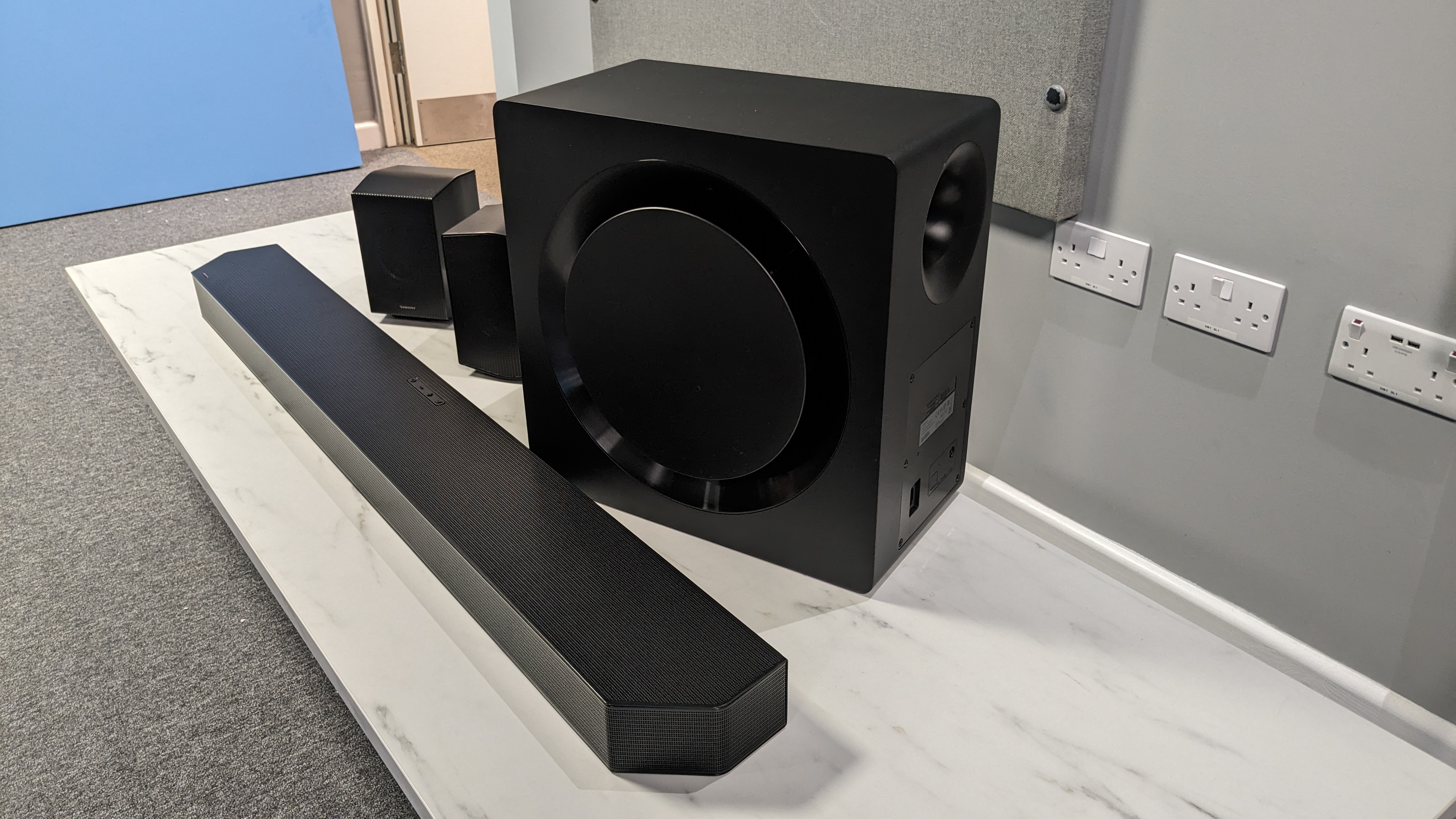
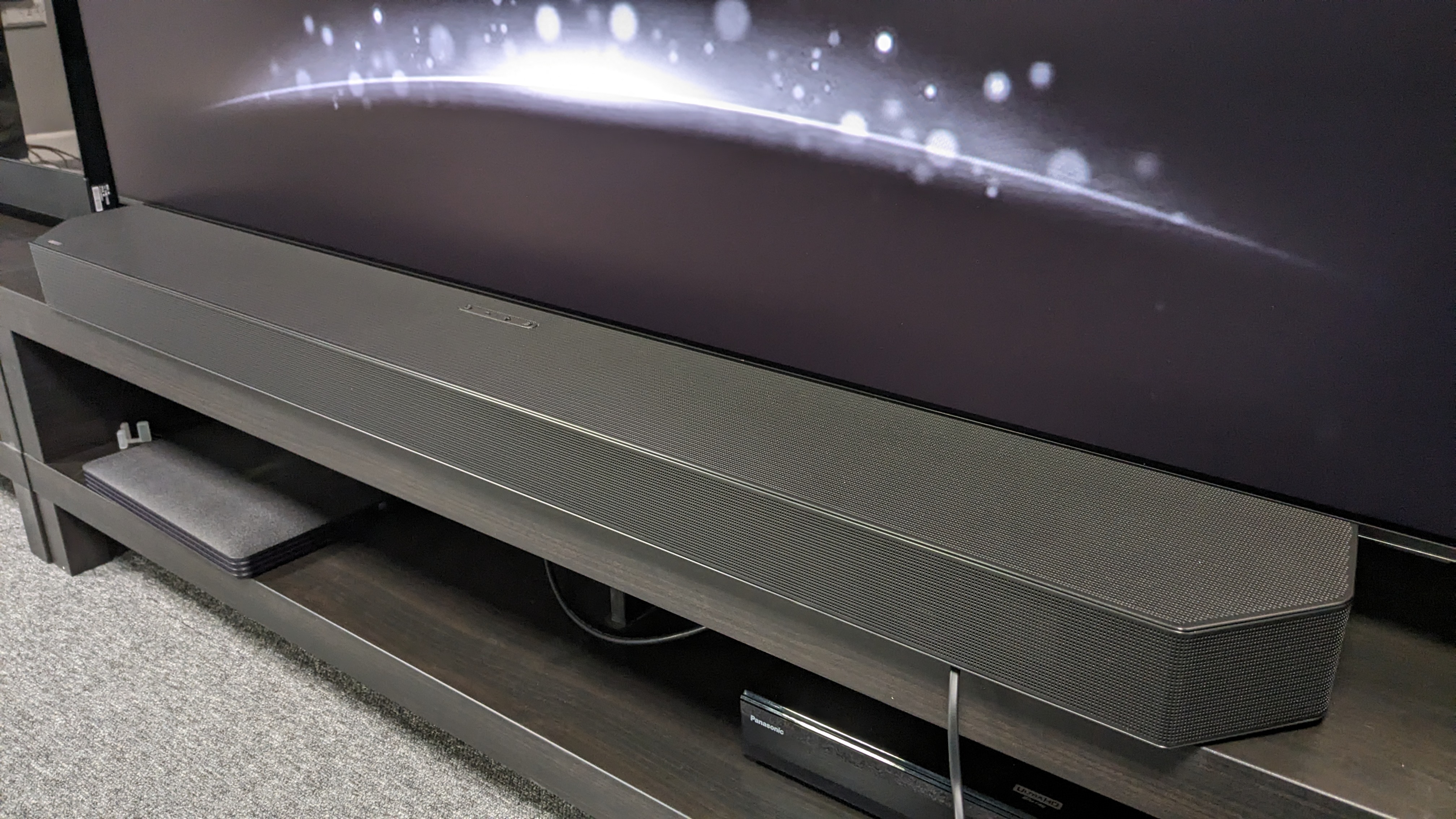
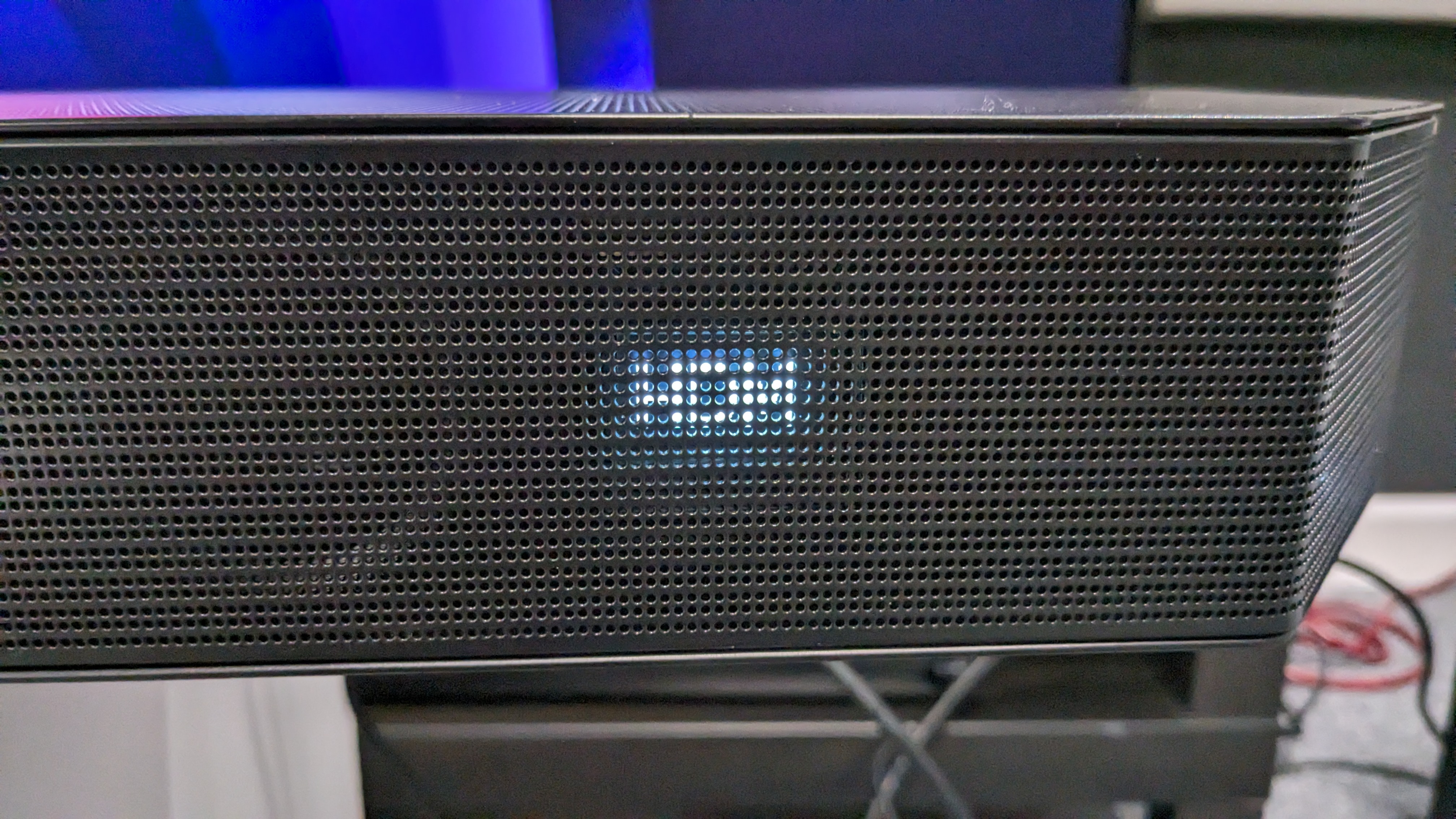
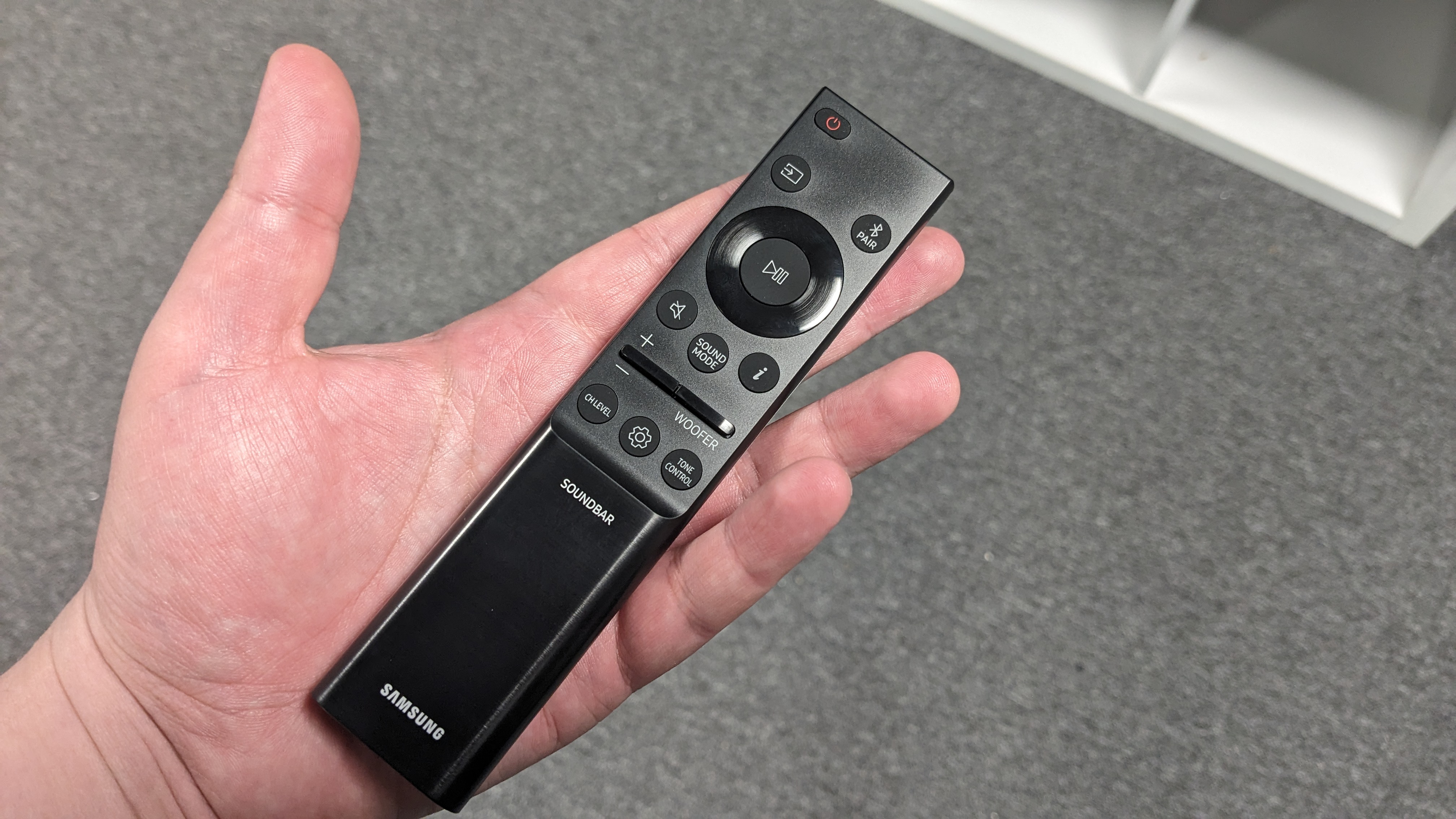
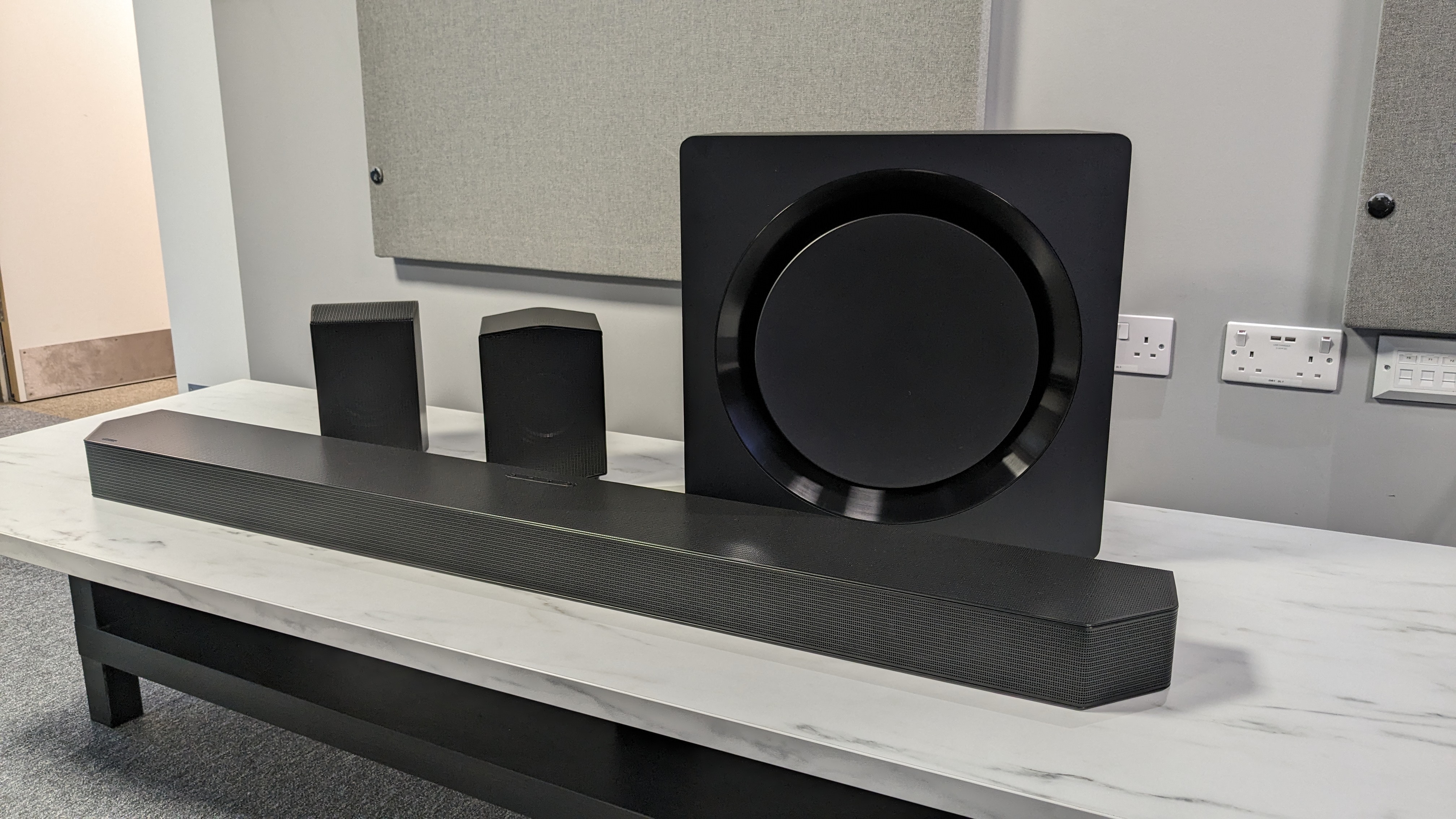
Specifications
Reasons to buy
Reasons to avoid
✅ You want the best soundbar for Dolby Atmos: With 11.1.4 channels, the Q990D's sound is rich, powerful and immersive with a real sense of surround that no other soundbar can capture as well.
✅ You want a soundbar for gaming: The Q990D has 4K, 120Hz passthrough, VRR and an ultra-low 9.9ms input lag – all perfect for next-gen consoles.
❌ You're on a budget: Brilliance does unfortunately come at a price as the Q990D is one of the most expensive soundbars on this list
❌ You want the clearest display: The mesh grille of the Q990D can obscure the front LED display, sometimes making it hard to read.
The Samsung HW-Q990D is the best Dolby Atmos soundbar package available. Following its predecessor, the Samsung HW-Q990C, it provides 16 'real' audio channels across 22 speakers for a powerful, immersive and controlled Atmos experience.
First and foremost, the Q990D has excellent sound quality, and it provides a fantastic surround experience without all the boxes and wires of a full home theater system. Bass is punchy and meaty but also has a refined touch, with other elements of the Q990D's sound allowed room to breathe.
The Q990D has many of the same features as the Q990C such as Tidal and Spotify Connect and Dolby Atmos music streaming, but adds 4K 120Hz pass-through on its HDMI ports. the upside to that feature is that gamers can use the Q990D to get a faster refresh rate when their PS5 and Xbox Series X consoles are connected to the soundbar.
Admittedly, this soundbar package is pricey. But, for those who can stretch their budget and are looking for a neater solution to a full home theater setup, the Q990D offers best-in-class audio quality and immersion.
Read our full Samsung HW-Q990D review
The best compact Dolby Atmos soundbar
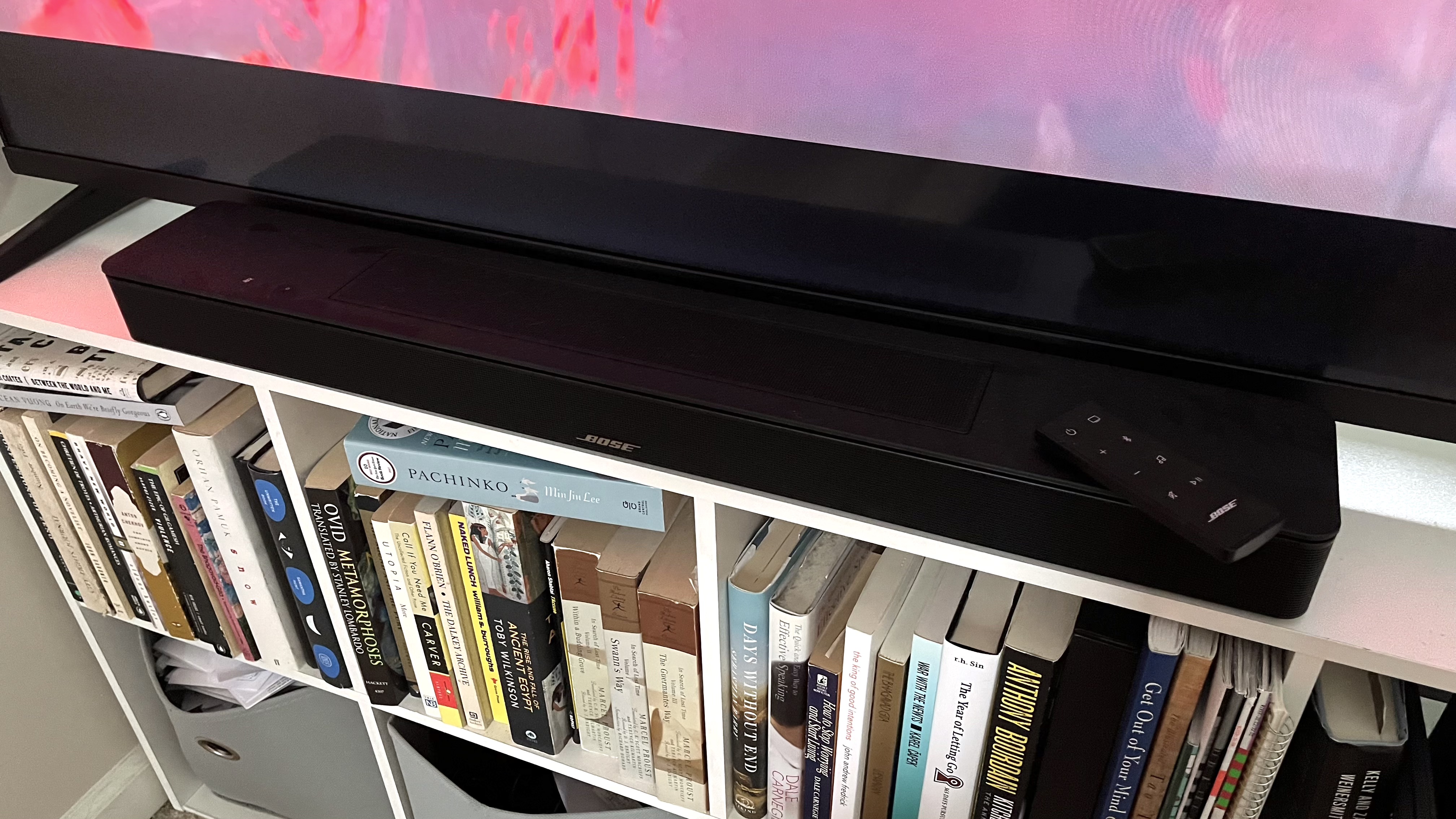
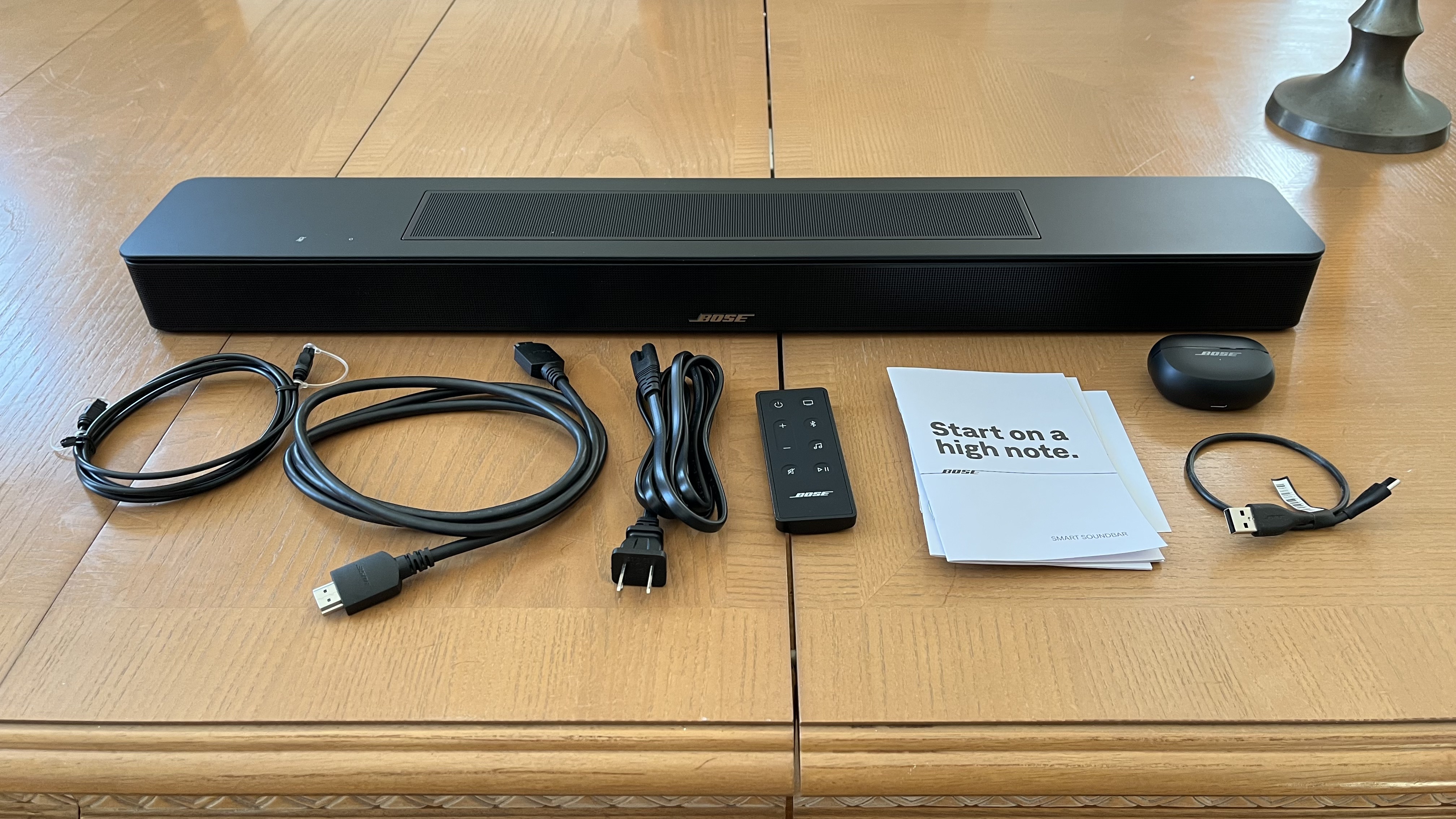
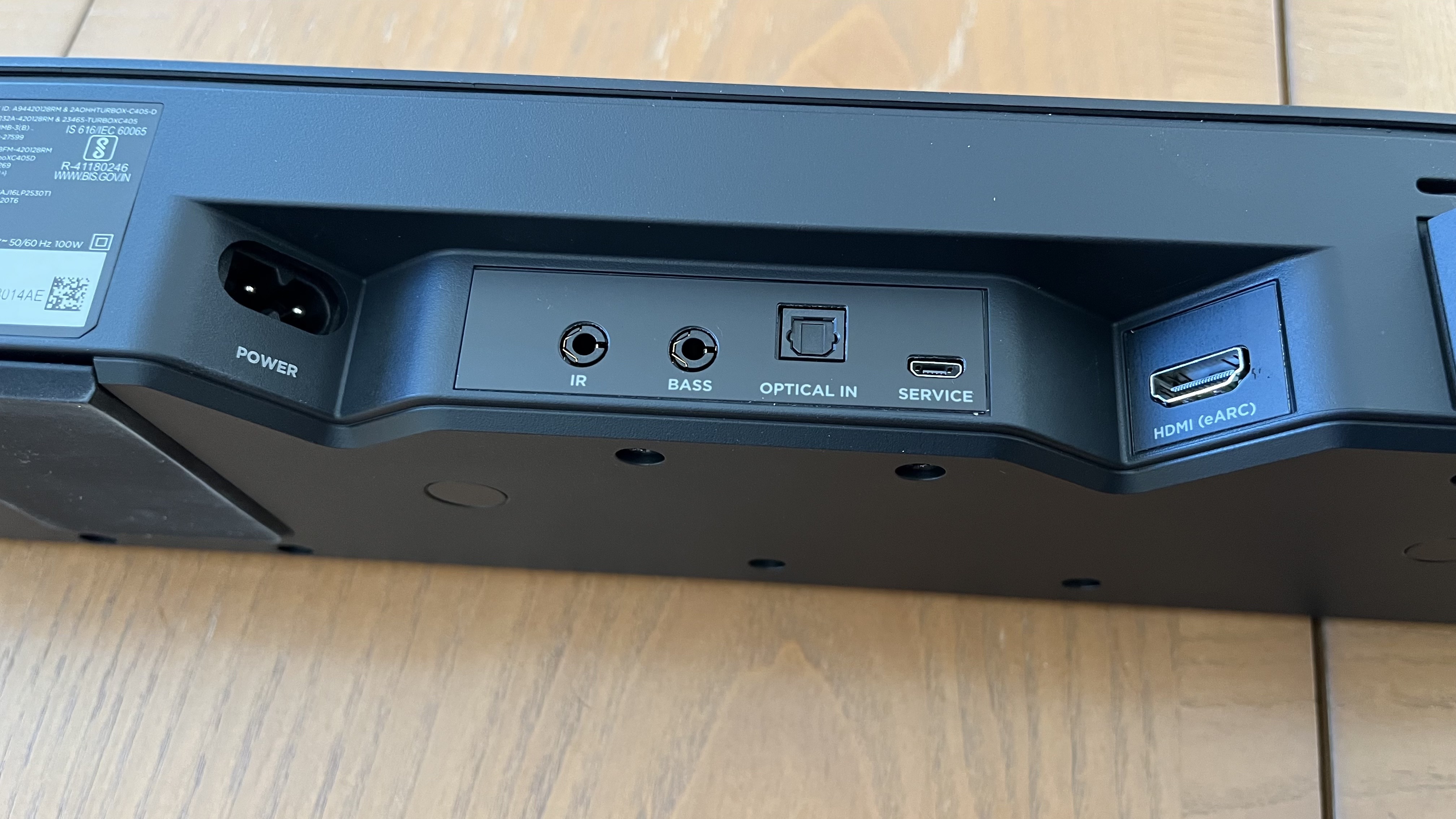
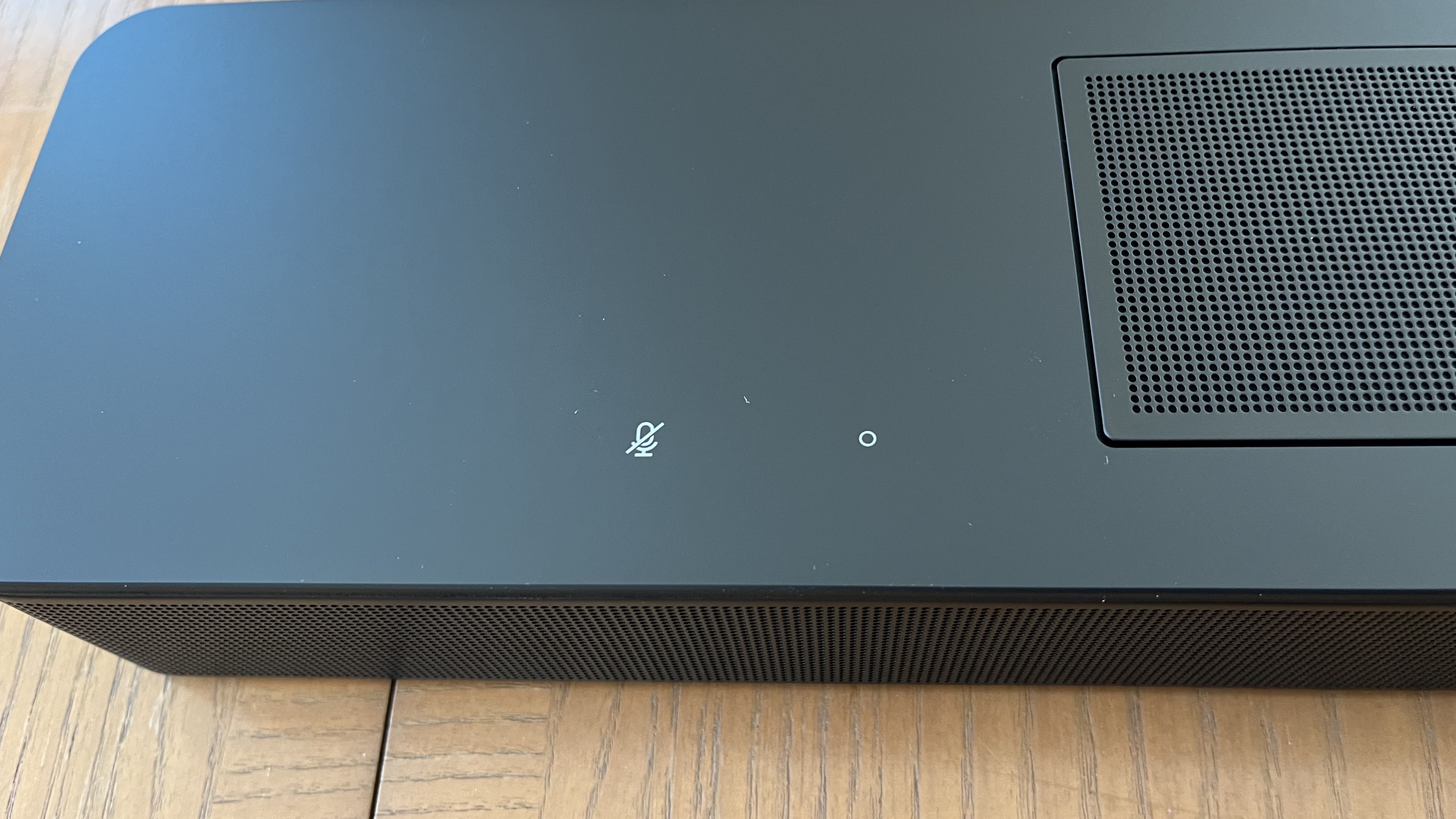
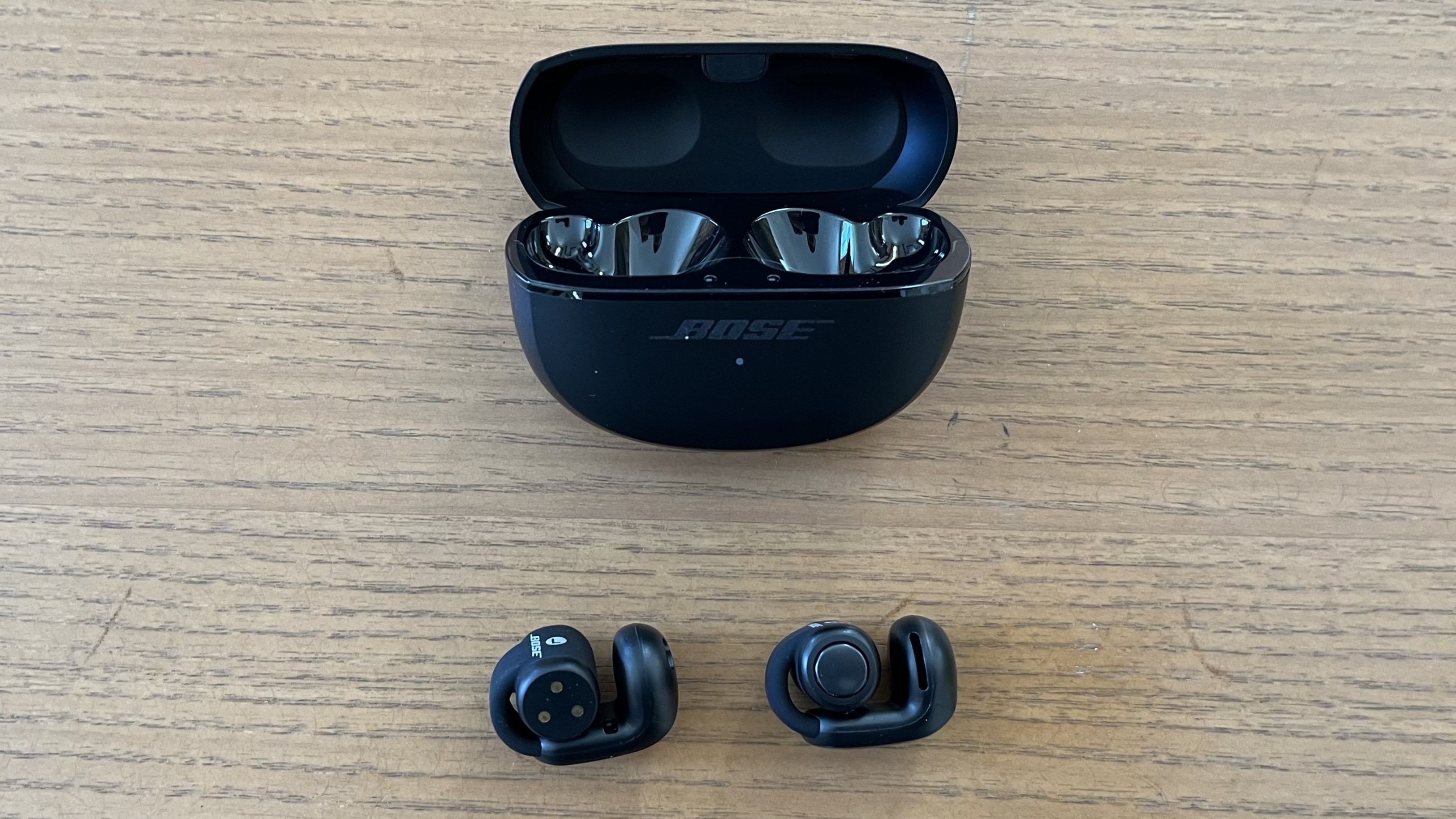
Specifications
Reasons to buy
Reasons to avoid
✅ You want a real Atmos sound from a single soundbar: The Bose Smart Soundbar has up-firing channels to deliver an authentic Atmos sound.
✅ You want an soundbar that's expandable: Like a few soundbars on this list, the Bose can have additional rear speakers and a subwoofer added in and it can also be used with Bose’s Ultra Open Earbuds for surround sound.
❌ You like your soundbar bassy: The Bose Smart Soundbar has a good sound profile, but the bass in the soundbar itself is a little lacking - the optional subwoofer may be needed for some.
❌ You want to connect to multiple HDMI sources: The Smart Soundbar only carries one HDMI port, the eARC for connection to the TV.
If you’re looking for a compact soundbar that provides “real” Dolby Atmos using upfiring speakers, the Bose Smart Soundbar is a perfect choice. At 27 inches wide by 2 inches high and 4 inches deep, the Smart Soundbar is designed to pair with smaller TVs, but its expansive sound will also make it a good match for bigger screens, especially when Bose’s proprietary TrueSpace processing is switched on.
Features include built-in Wi-Fi with both AirPlay 2 and Chromecast support. A unique Smart Soundbar offering is Personal Surround Sound, which lets you use Bose’s Ultra Open Earbuds to get surround sound without having to set up extra speakers. Another surround sound option is to add Bose wireless rear speakers and a subwoofer, an upgrade that the Smart Soundbar supports.
In our review, we remarked that dialogue was“consistently intelligible,” and appreciated the Bose app’s level and EQ controls, which allowed for dialogue to be boosted on an as-needed basis. Given the Smart Soundbar’s compact design, bass is necessarily limited, but Dolby Atmos soundtracks benefit from an authentic sense of height that the virtual processing used by some other affordable Atmos soundbars can’t match.
With its under $500 / £500 / AU$700 price, the Bose Smart Soundbar is a very good value. One of our few complaints with it was the lack of multiple HDMI ports for connecting additional sources, but that’s a feature you generally have to pay quite a bit more for.
To save some money on Bose products, check out our Bose voucher codes.
Read our full Bose Smart Soundbar review
The best Dolby Atmos soundbar for gamers
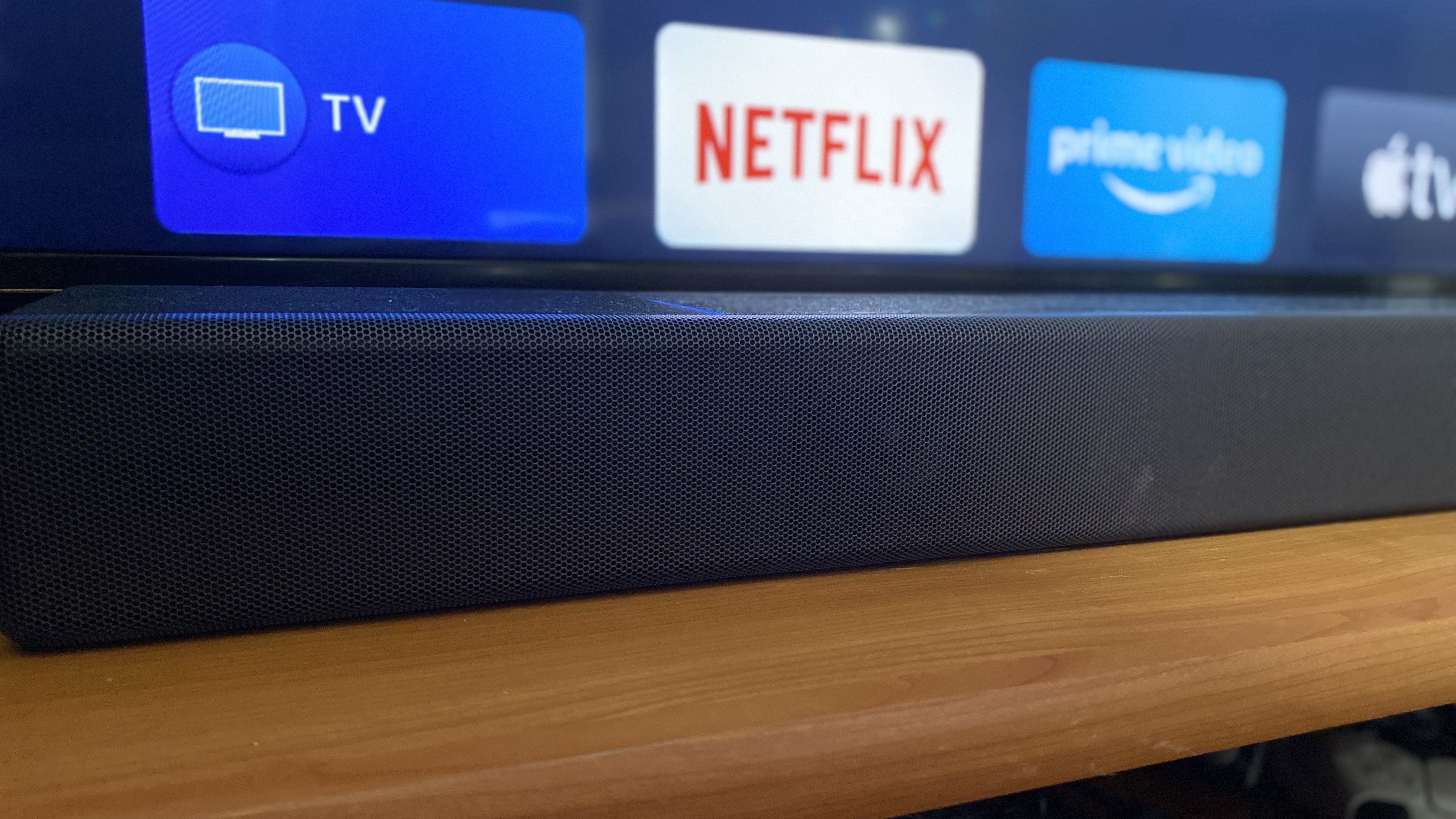

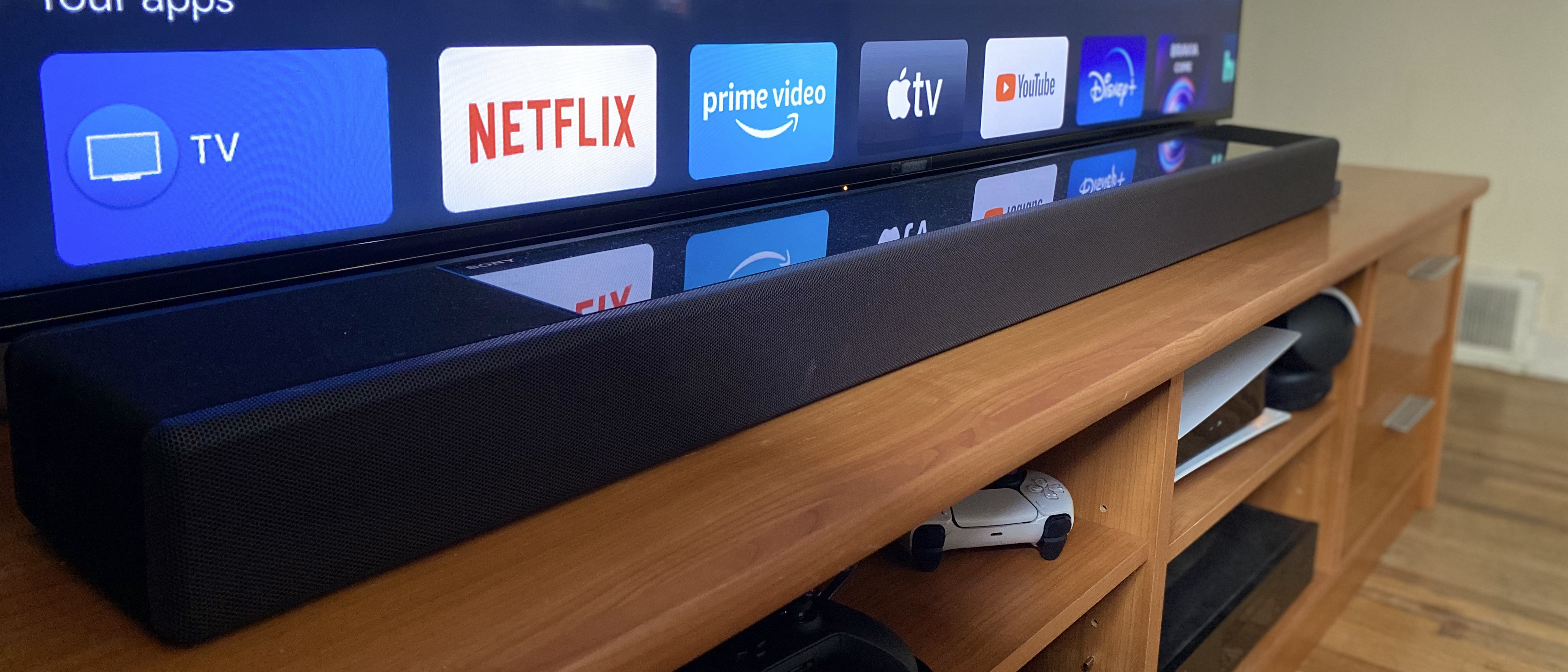
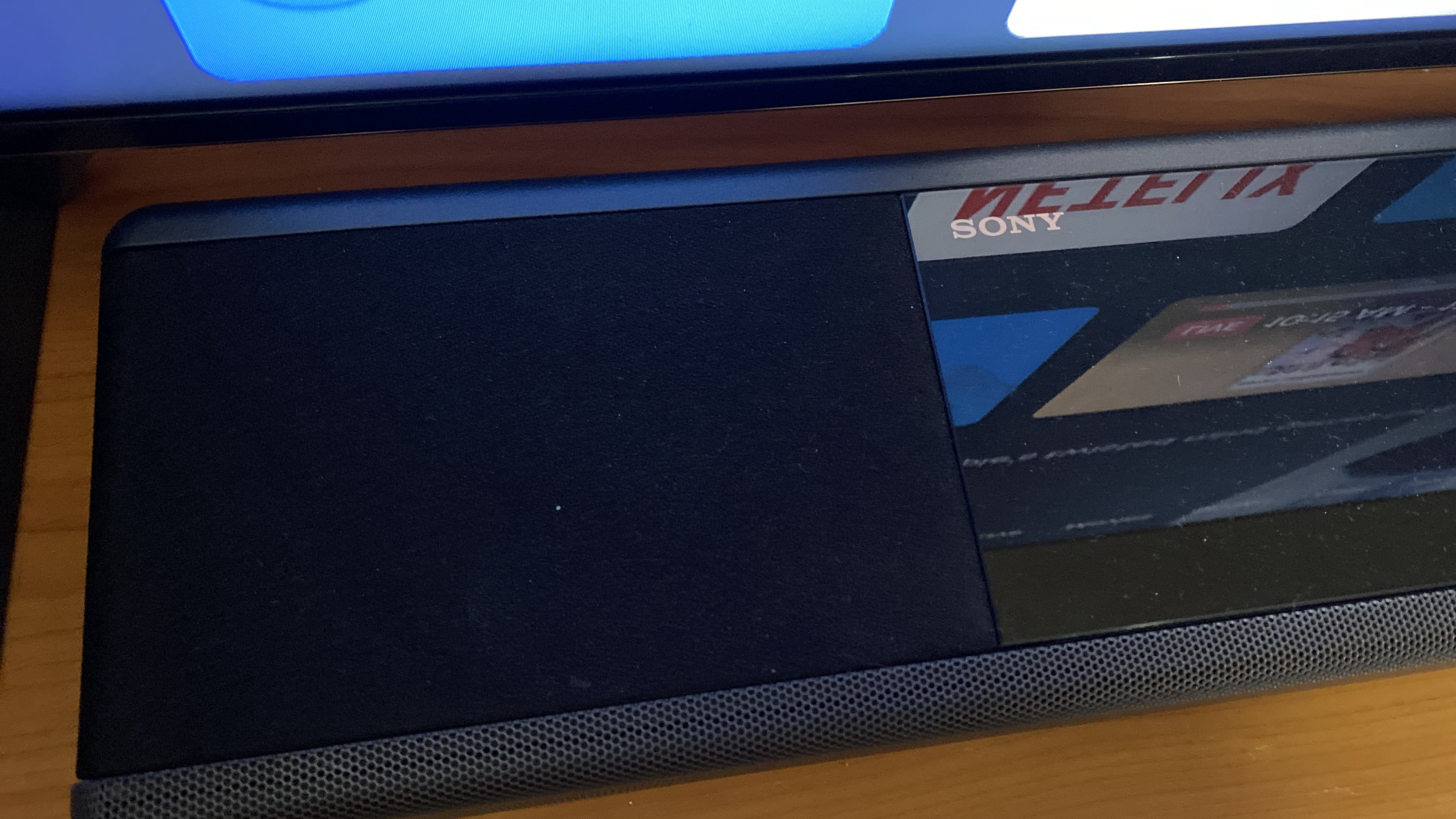
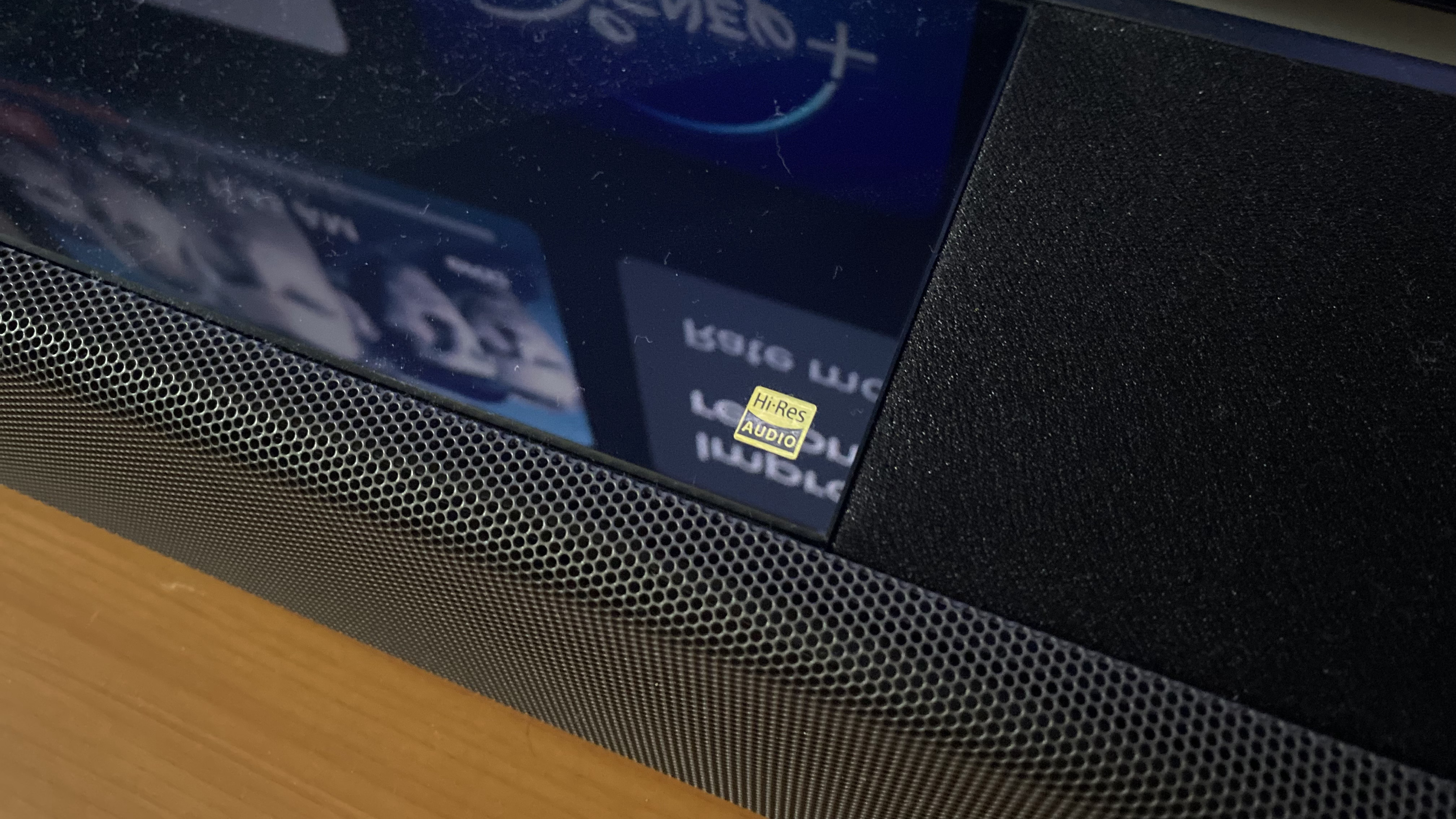
Specifications
Reasons to buy
Reasons to avoid
✅ You want gaming features: The sony HT-A7000 features two HDMI 2.1 ports, meaning you can connect a PS5 or Xbox Series X to it.
✅ You want good vocal clarity: The HT-A7000's biggest strength is in its extremely clear dialogue presentation.
❌ You want the best Atmos for a single soundbar: The HT-A7000's height channels struggle to give the same surround sound immersion you'd get from soundbars with speakers.
❌ You're on a budget: The Sony HT-A7000 is significantly pricier than a lot of the soundbar on this list, even the Samsung HW-Q990D system is cheaper.
The Sony HT-A7000 soundbar may have a massive sticker price, but it promises a long shelf life thanks to its two HDMI 2.1 ports and support for all of the major spatial audio formats.
At this price we wish it came with the surround and subwoofer units, but those with incredibly deep pockets can tack those on for a few hundred more later down the line.
What helps make the price tag here feel a little more justified is the fact that the HT-A7000 comes with upfiring drivers. What that means is it delivers true and impressive Dolby Atmos, although we did feel the height channels could be a little more convincing during our testing.
In terms of musicality, though, the HT-A7000 is a very talented soundbar, with excellent stereo imaging and a really room-filling sound — especially if you take advantage of its support for Sony's 360 Reality Audio.
Connectivity is very good, too. The soundbar supports HDMI, of course, but it also has 3.5mm auxiliary, Bluetooth audio, USB devices, Spotify, Chromecast, Amazon Alexa and 360 Reality Audio via Deezer, Tidal and Amazon Music. That's a very wide selection of sources, giving you lots of flexibility in terms of what you want to connect.
Read our full Sony HT-A7000 Dolby Atmos soundbar review
The best Dolby Atmos soundbar for flexibility
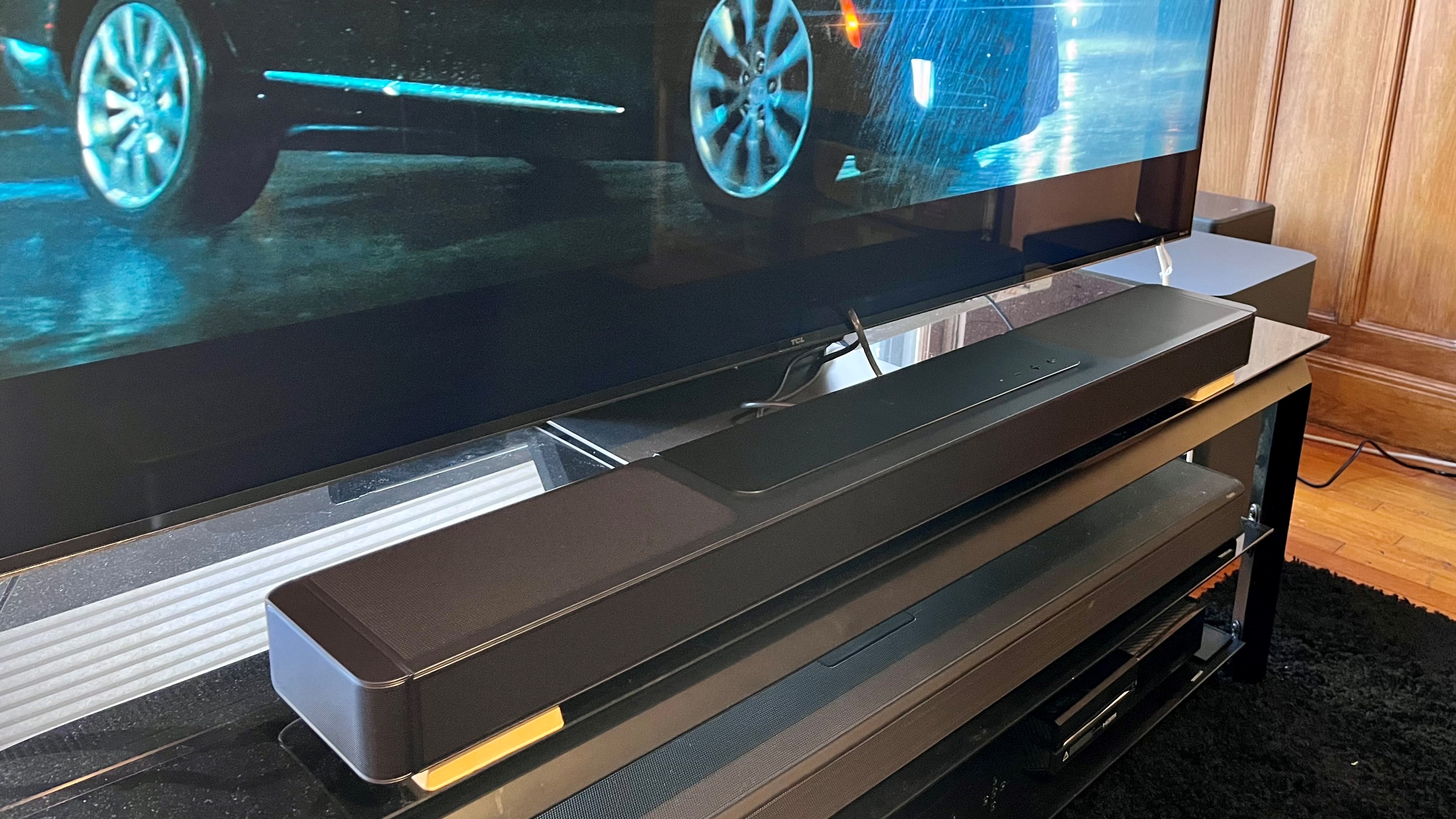
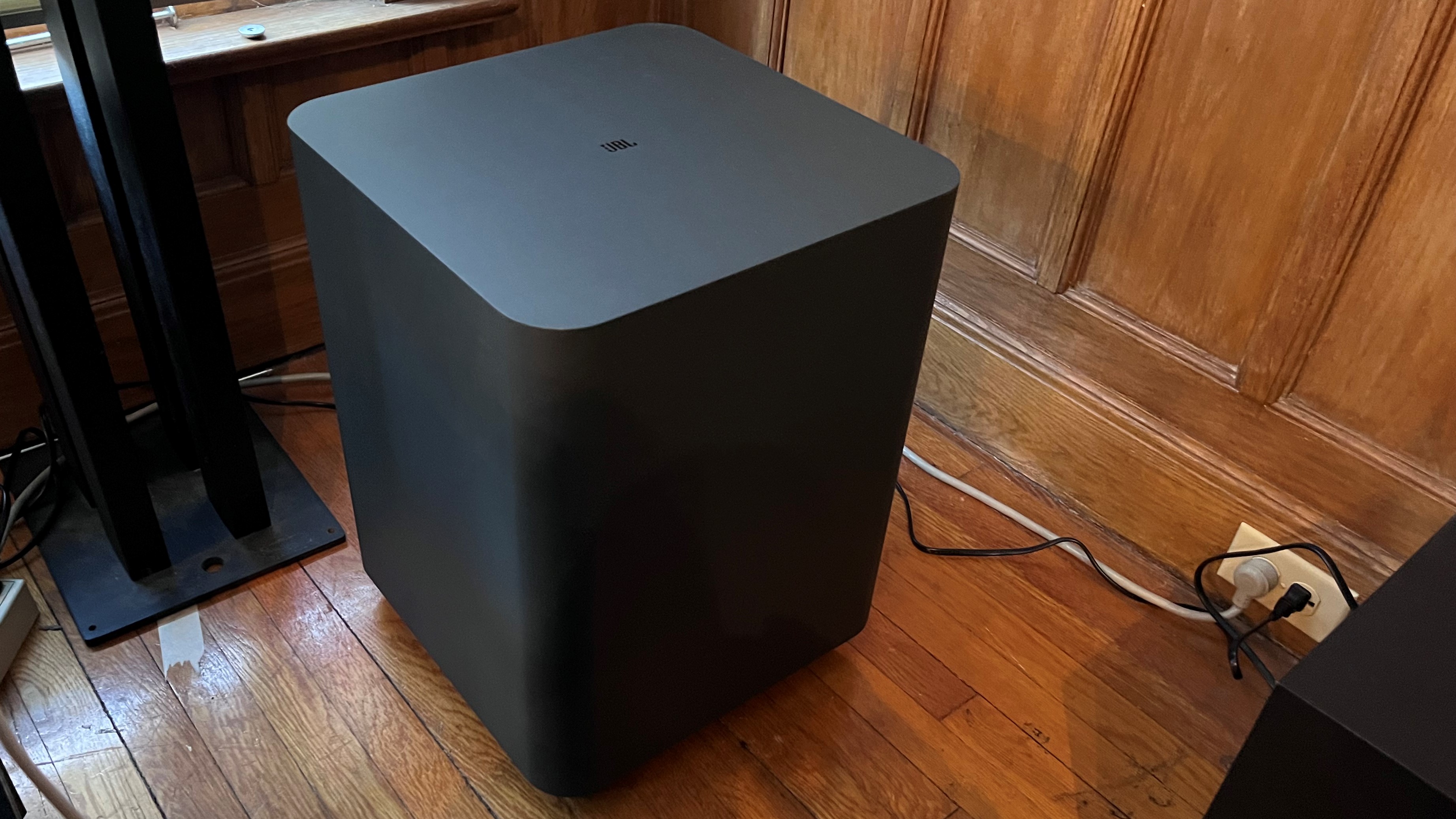
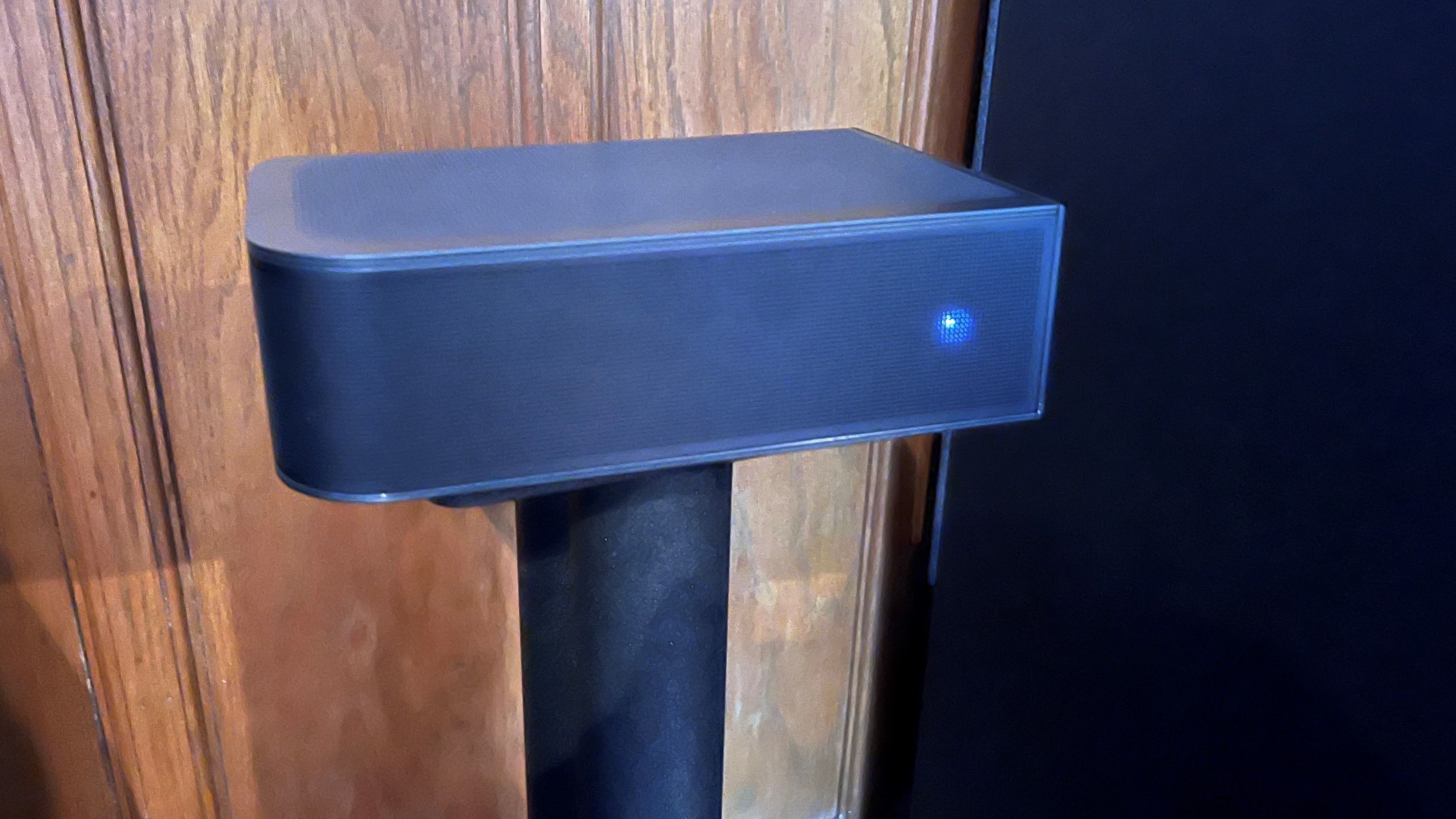
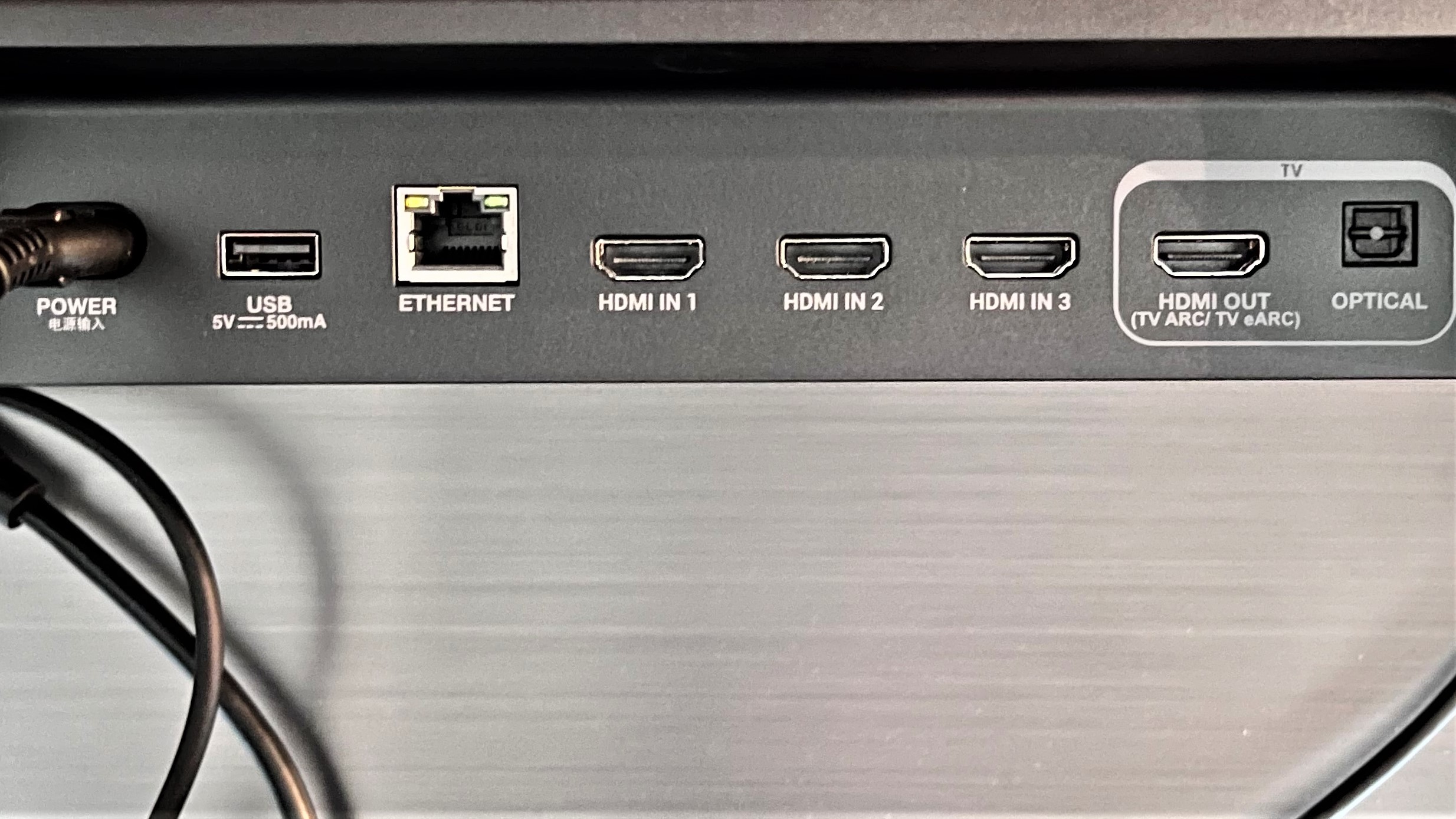

Specifications
Reasons to buy
Reasons to avoid
✅ You want a versatile soundbar: The JBL Bar 1300X has immersive Atmos sound and rechargeable and detachable rear speakers, which give a lot of location options.
✅ You want a lot of connection options: The Bar 1300X comes with four HDMI ports for connection with multiple devices.
❌ You don't want to spend big: The Bar 1300X is a pricey soundbar that will be out of reach for a lot of budgets.
❌ You want the best soundbar for gaming: The Bar 1300X has a lot of HDMI ports, but none of them have 4K, 120Hz passthrough for gaming.
We don't often award a soundbar five out of five stars in our reviews, but the JBL Bar 1300X hands-down deserves it. We enjoyed testing this soundbar, finding it worthy of praise for its ability to deliver impressive levels of immersion whether we were listening to music or it was pumping out movie soundtracks, as well as its innovative design.
The JBL Bar 1300X is a Dolby Atmos soundbar that would suit anyone looking for a powerful and immersive option on par with the visceral excitement that the best home theater systems effortlessly deliver, while also being relatively easy to setup and, crucially, not becoming a burden in your home.
This soundbar offers multiple HDMI inputs, so you can connect a stack of sources, and the system’s rechargeable rear speakers can also be used as portable Bluetooth speakers – design flex that heightens the Bar 1300X's overall value.
The JBL Bar 1300X may not take up too much space, but it is designed to fill larger rooms with sound so we wouldn't recommend it if you only have a small space. It's also not the best soundbar for serious gamers. Multiple HDMI ports are here, but none of them have 4K 120Hz pass-through to support that resolution and frame rate when playing games on PS5 or Xbox Series X.
Read our full JBL Bar 1300X review
The best Sonos Dolby Atmos soundbar
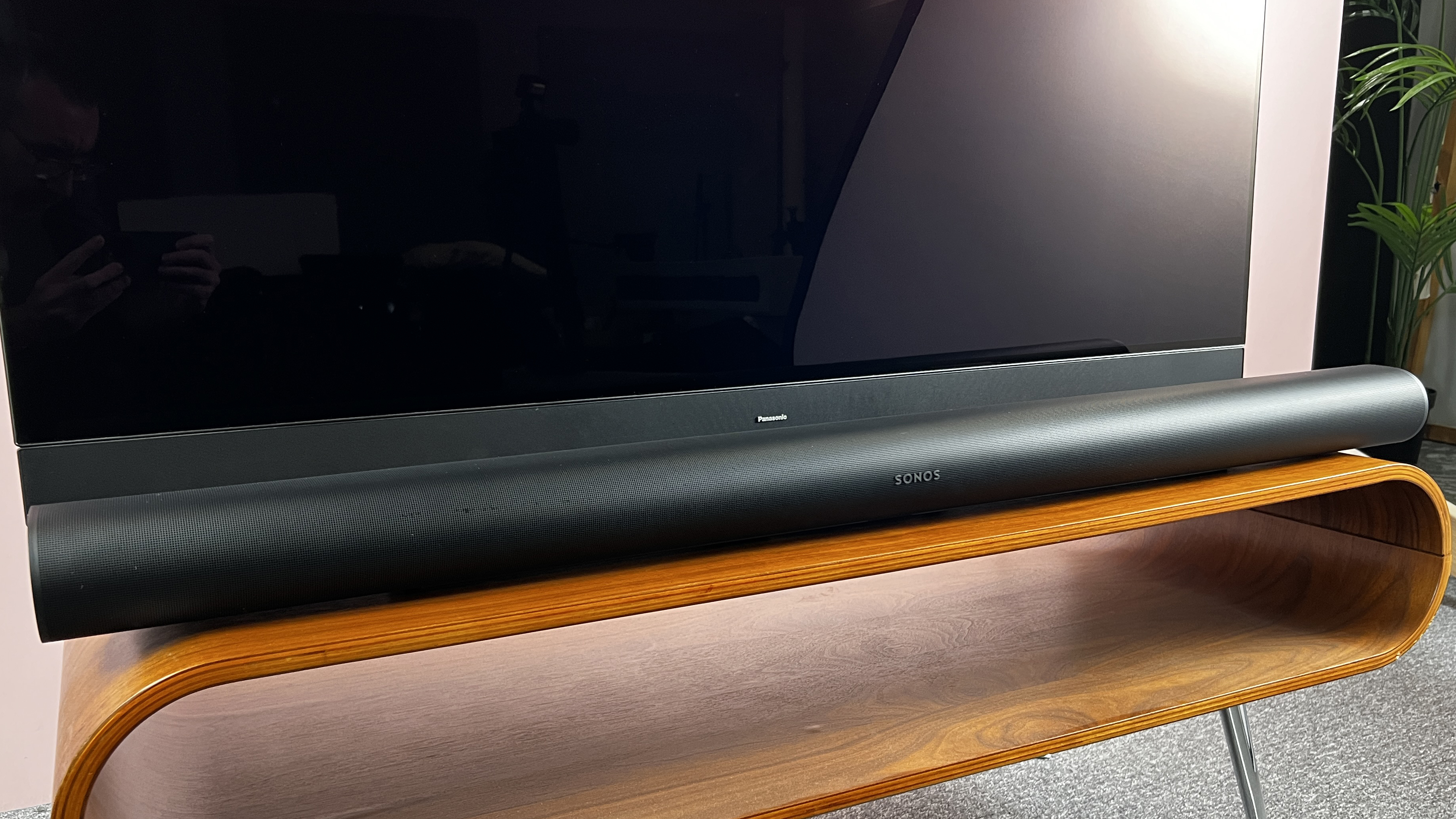
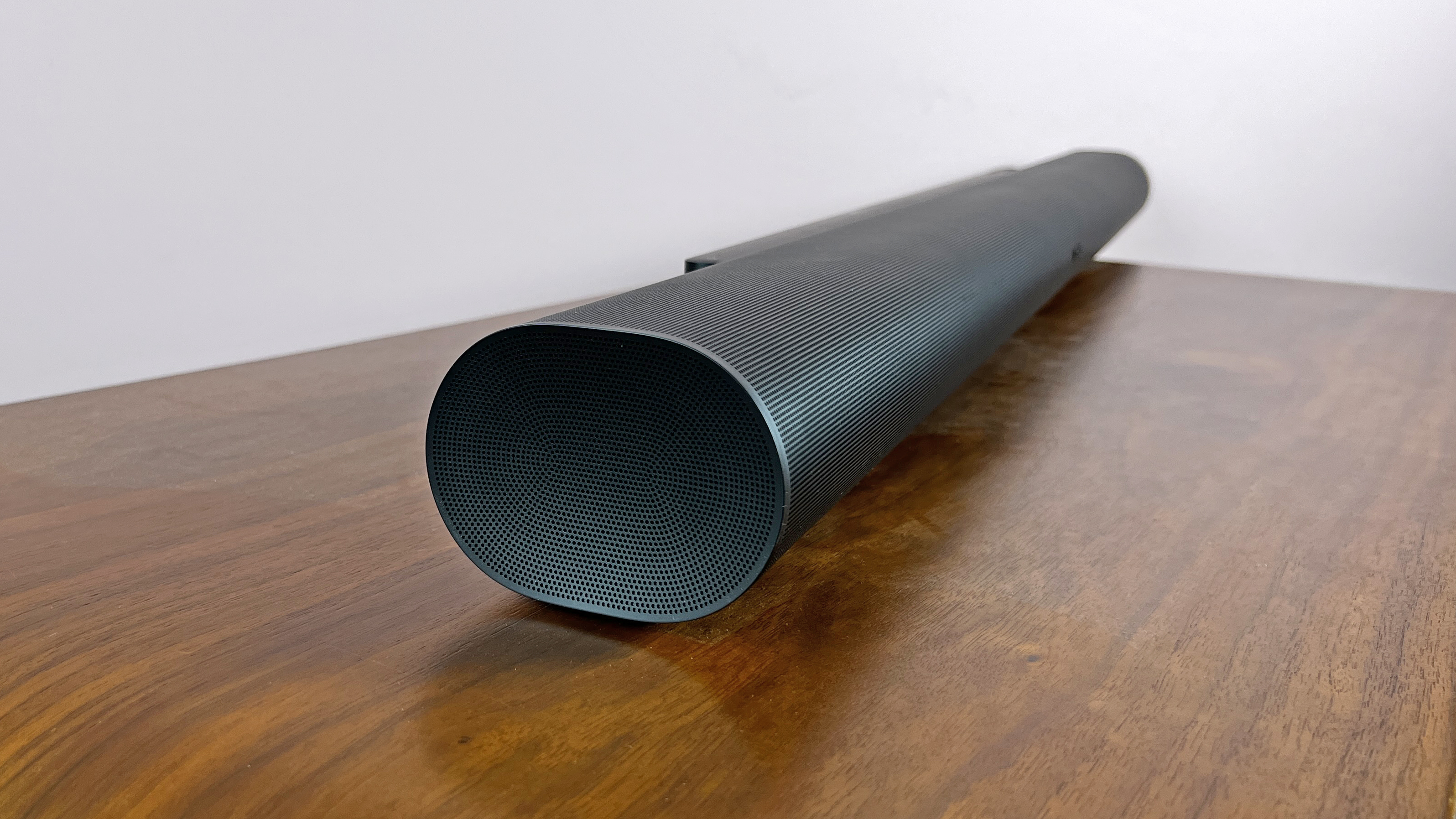
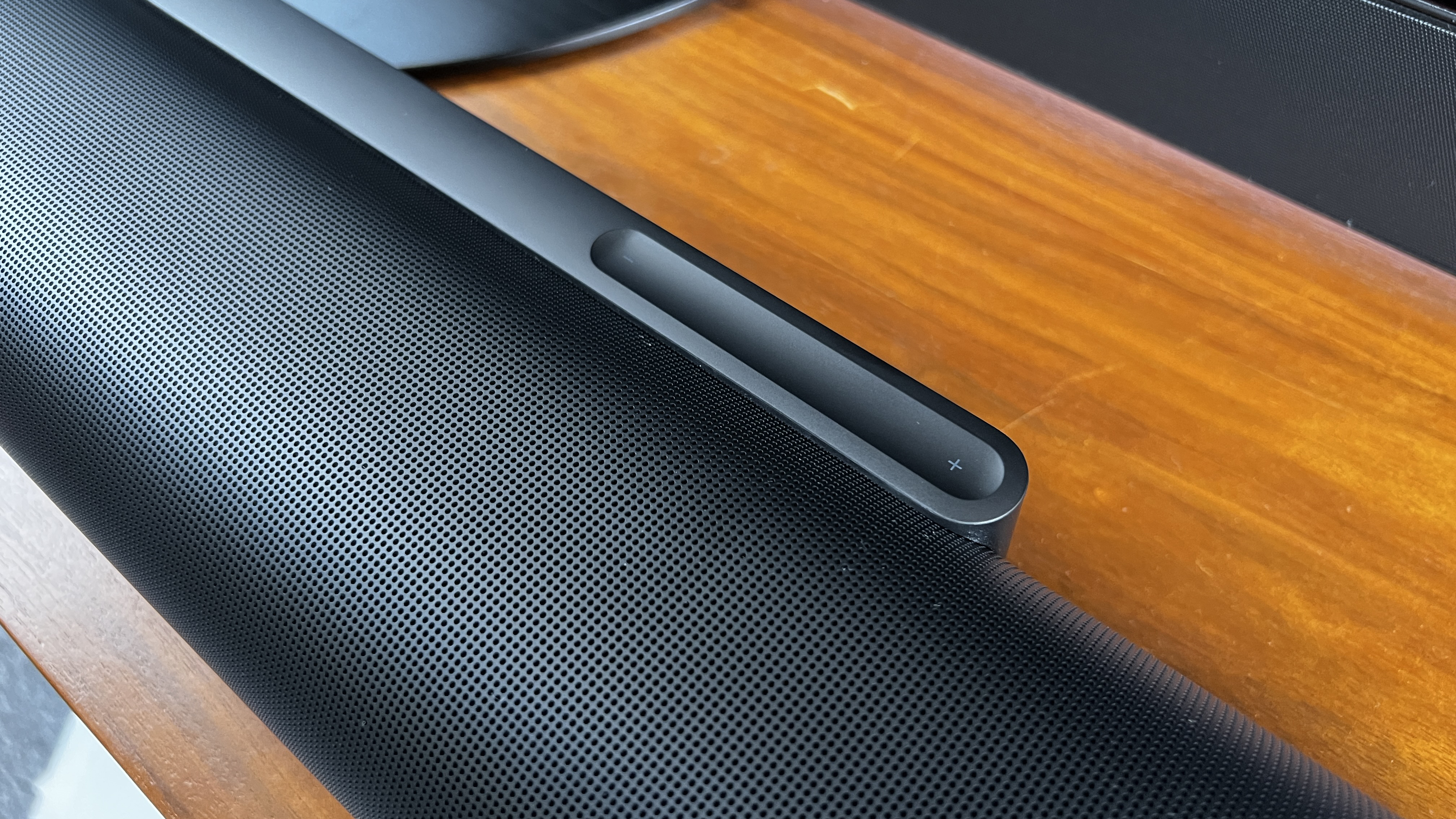
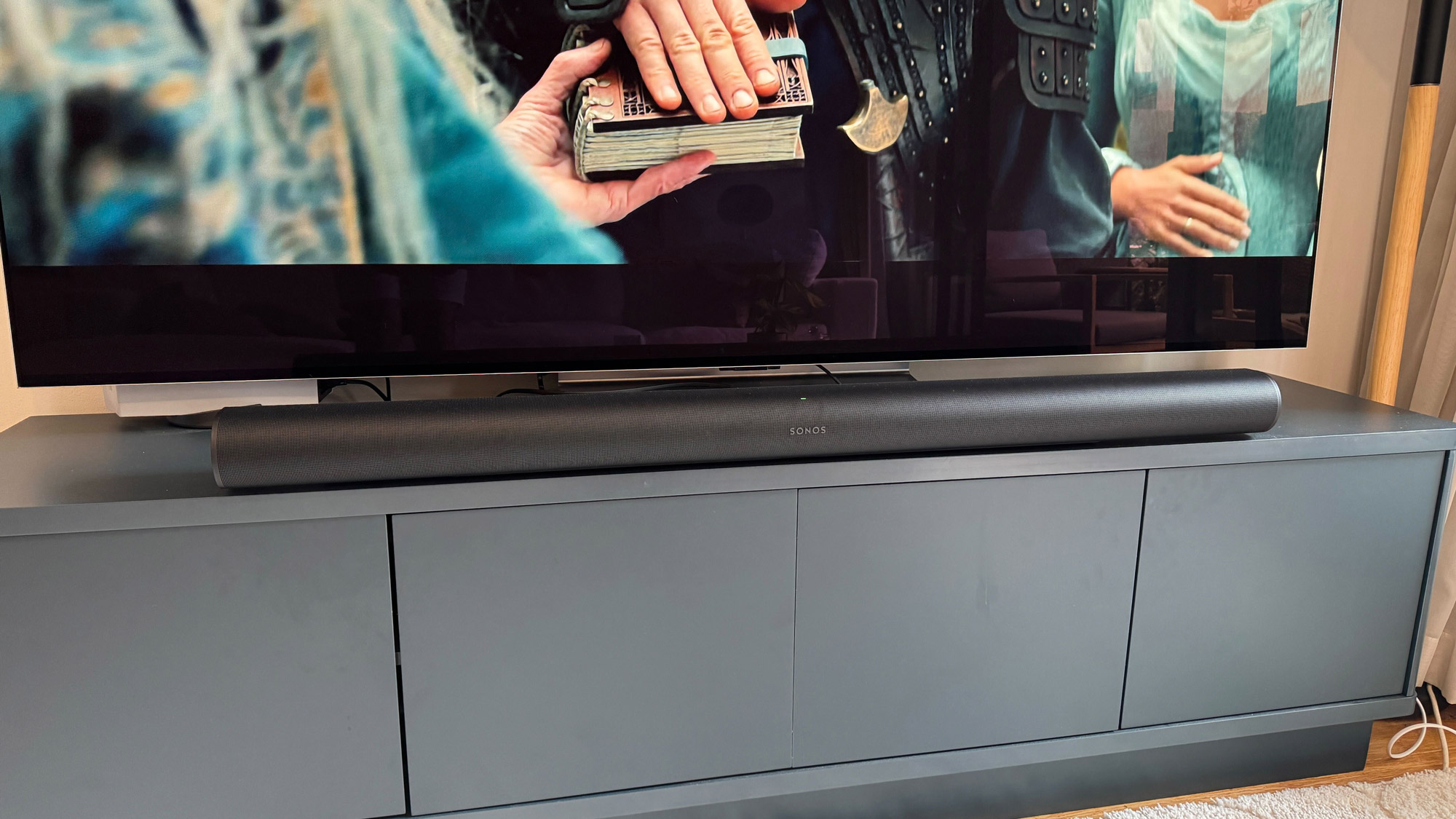
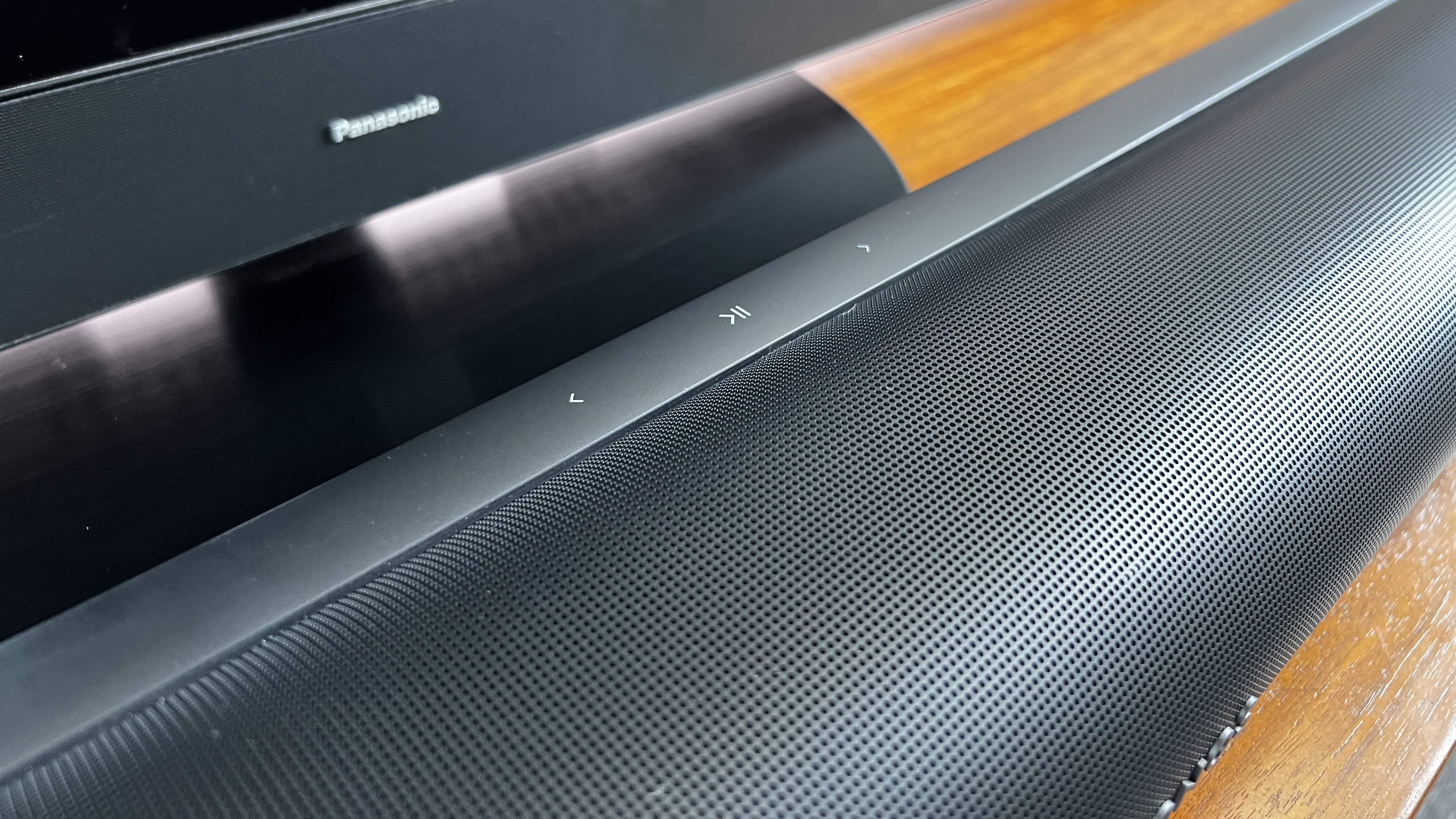
Specifications
Reasons to buy
Reasons to avoid
✅ You want a fantastic all-in-one box solution: The Sonos Arc Ultra delivers punchy and dynamic performance for both music and movies in a single unit.
✅ You want versatility from your soundbar: The Arc Ultra can be a lone unit, part of a wider Sonos multi-room system, and it can be expanded with extra speakers.
❌ You want DTS/DTS:X: The Sonos Arc Ultra supports Dolby Atmos, but home theater users with DTS:X media will miss out as it is unsupported.
❌ You have space for a multi-box system: If you've got the room for a full surround sound system such as the Samsung HW-Q990D, this will give you the most authentic surround sound.
The Sonos Arc Ultra expands on its predecessor, the Sonos Arc, and delivers a fuller, punchier and more dynamic sound. Its sleeker design also makes it an attractive all-in-one Dolby Atmos soundbar.
The Sonos Arc Ultra delivers superb performance overall, offering a "fulsome balance, exciting sound and clear speech," as we said in our Sonos Arc Ultra review. We were impressed by how improved speech was over the original Arc and how much fuller the bass was. While Dolby Atmos effects aren't completely immersive, there's excellent height and width to the Arc Ultra's sound and we also found that it was good for music. DTS:X fans will need to look elsewhere, though, as that format is not supported on the Arc Ultra.
The Arc Ultra's design change compared to the original Arc reduces its overall volume size by 18%. It's wider than the Sonos Arc, but shorter, and will suit more TVs. It's also one of the more visually appealing soundbars on the market thanks to its curved, modern design, which will blend in with more rooms.
The Arc Ultra sits at $999 / £999, so it's not the cheapest soundbar, but it delivers a premium performance to match its price tag. We think this is one of the best soundbars at this price range and it's easily Sonos' best model.
Read our full Sonos Arc Ultra review
The best Dolby Atmos soundbar for-wall-mounting

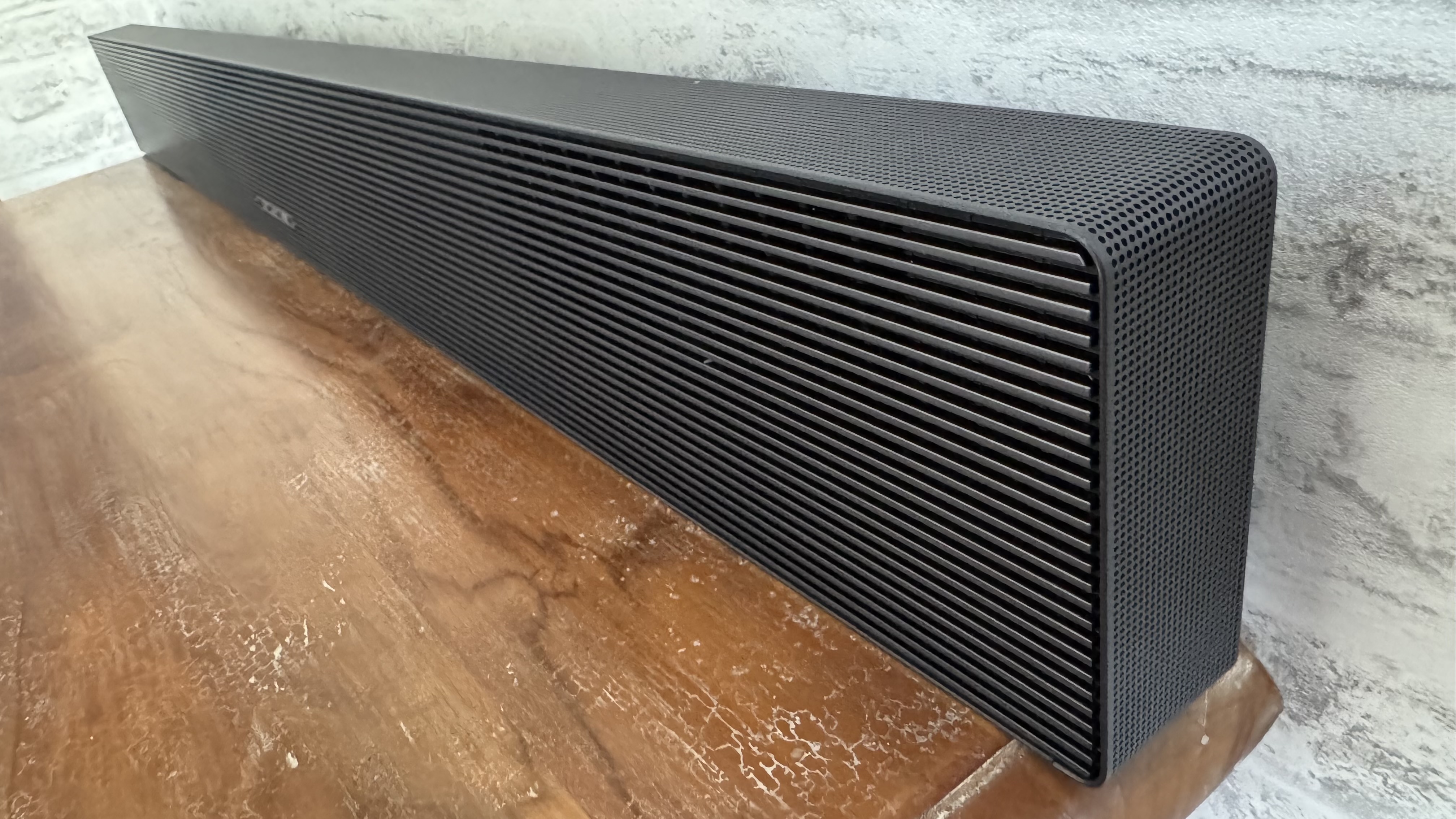

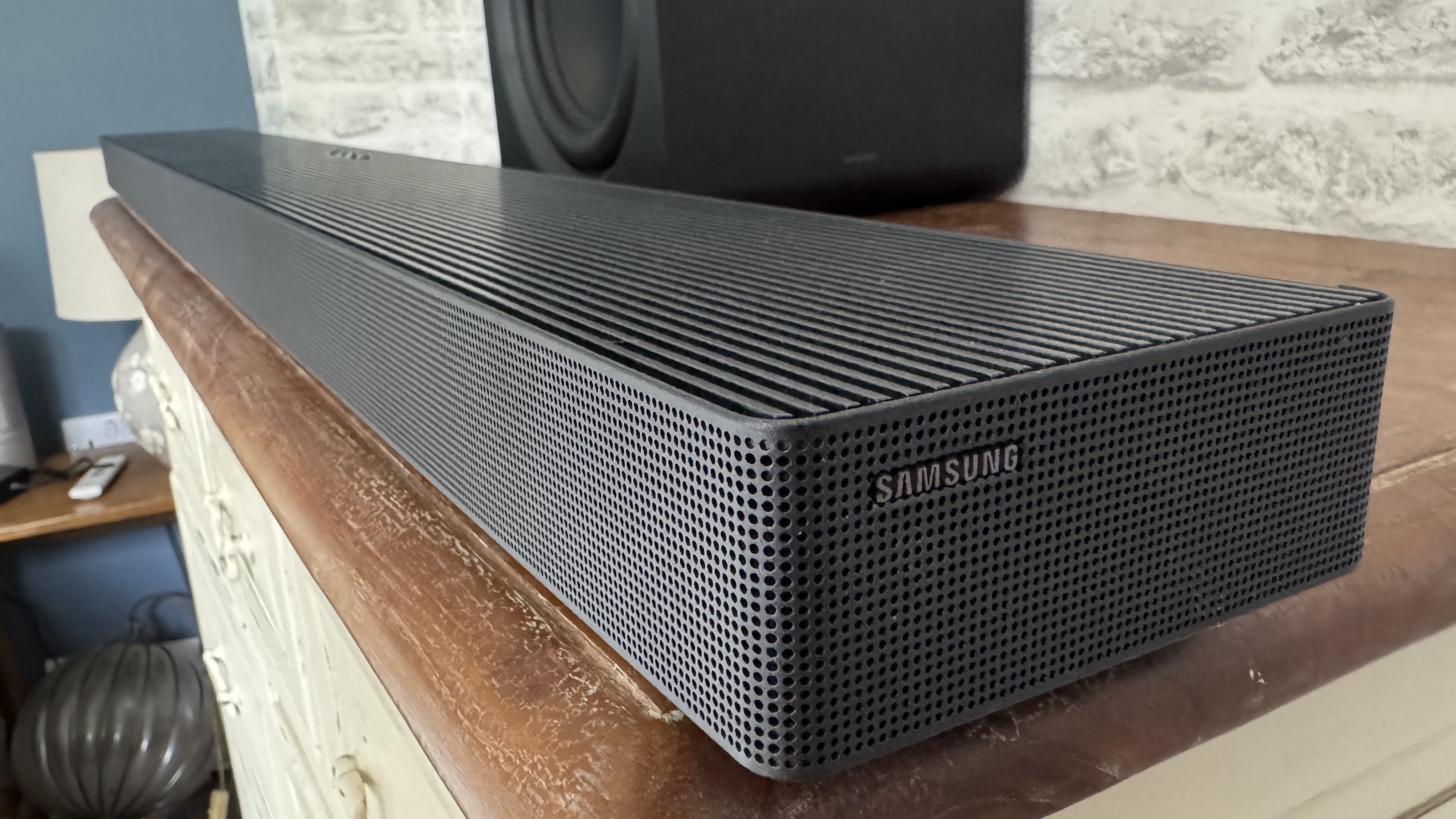
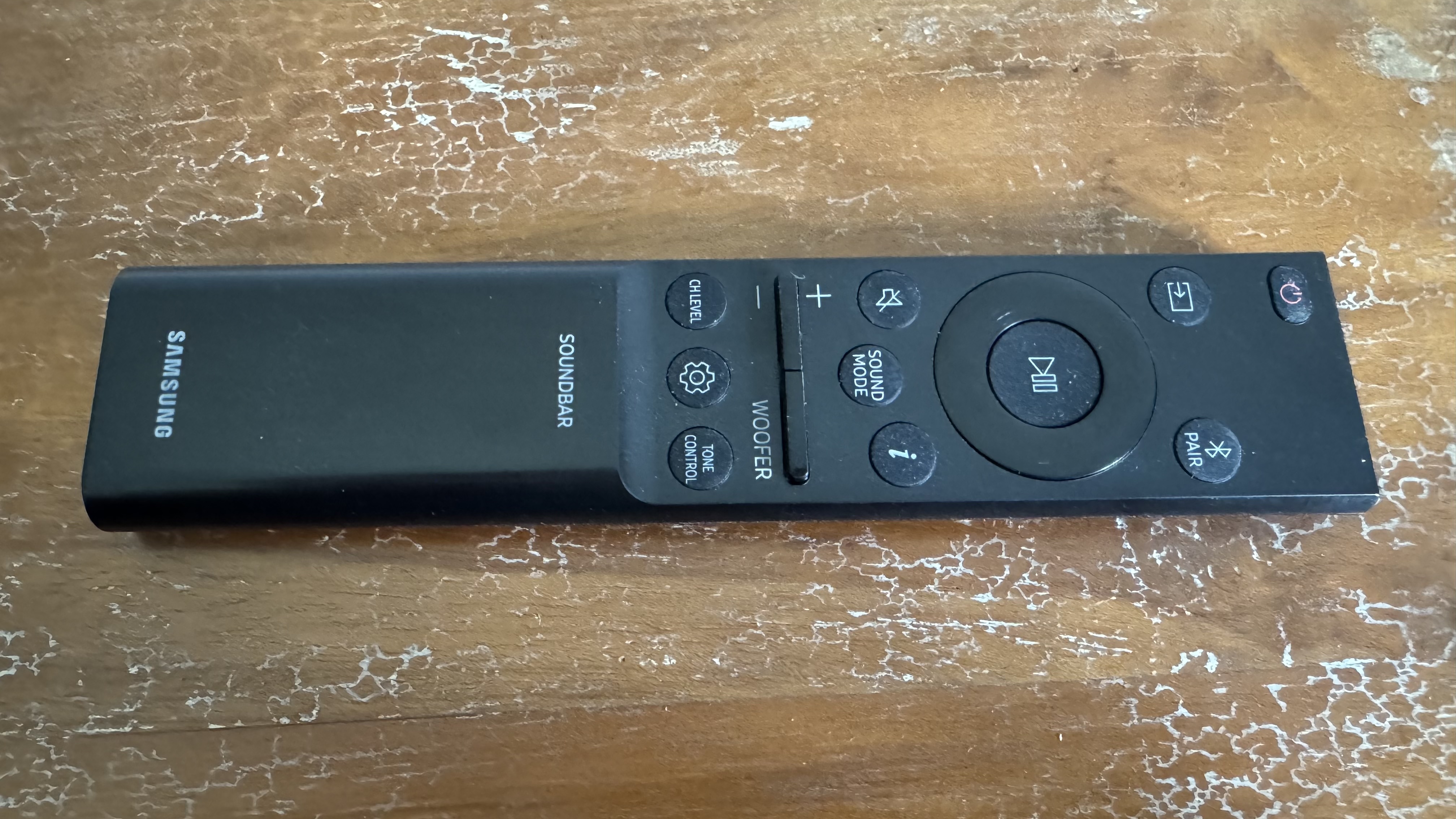
Specifications
Reasons to buy
Reasons to avoid
✅ You want a soundbar that adapts to your setup: Designed to reconfigure its output depending on how it's positioned, offering great flexibility without compromising performance.
✅ You want an all-rounder: Yes, it’s flexible, but it also looks good, is (relatively) affordable, can be customized and boasts a 3.1.2 channel count – more numerous than might have been expected at this level.
❌ You’re never planning to wall-mount it: If you're certain it’ll always live on a table or shelf, a more traditional soundbar might make more sense. That said, the QS700F still performs brilliantly there too.
❌ You want the ultimate in sound: Yes, this is a top-performing soundbar, but you'll notice a slight dip in performance at certain angles. You'll have to pay significantly more for a noticeably better experience though.
The Samsung HW-QS700F delivers a clever blend of performance and design, bringing the audio chops of Samsung’s Q series together with the slim, stylish form factor more typical of its S series. What really sets it apart is its ability to auto-adjust its 3.1.2-channel configuration depending on whether it’s placed flat or upright. Stand it vertically and you’ll get a flatter look that pairs beautifully with a slim, wall-mounted TV.
A 3.1.2-channel setup is generous at this size and price point, delivering a surprisingly punchy, detailed soundstage. Whether positioned horizontally or vertically, the QS700F maintains consistent audio performance. You’ll find Dolby Atmos and DTS:X support here too, along with broad file format compatibility, making it a reliable performer across TV, movies, and games.
While the audio impresses, it’s the smart design that steals the show here. Using built-in gyro sensors, the HW-QS700F adapts automatically to its placement, whether horizontal on a stand or vertical on a wall. The bar itself is long and sleek, while the wireless sub is small and discreet. It’s slim enough to fit neatly under most TVs, but still feels substantial, with a premium finish that elevates the setup.
Considering its adaptability, audio capabilities, and premium build, the HW-QS700F offers great value. While many soundbars support wall-mounting, very few actively reconfigure their audio output to suit different placements like this one does. If you want a soundbar that looks great, sounds even better, and adapts to your setup, this is one of the smartest options out there.
Read our full Samsung HW-QS-700F review
How to choose the best Dolby Atmos soundbar
If you love the slim aesthetic of your new 4K TV, we can bet it doesn’t have the audio needed to match the visuals. That means picking the best soundbar to go with your TV is your best option to get the most out of your favorite TV shows and films. But how do you choose the best Dolby Atmos soundbar for you?
The first consideration is where it'll go. Most of the soundbars in this guide are sleek, minimal and designed to sit flush against a wall or home cinema set-up. You'll need to pick out a space for it and ensure it'll fit. With that in mind, you'll need to consider a soundbar that'll pair well with your TV.
For example, the long Sonos Arc soundbar is designed specifically for large screens, so won’t look right with a smaller 50-inch TV. You’ll need to know the size of your current TV and the size of the space you have to fit it and compare those figures to the dimensions listed alongside the soundbar you want to buy.
You should also think about the kind of connection you need. Most modern soundbars have HDMI connectivity, but there's also optical connectivity—so what's the difference? These are two ways that audio is passed from your TV to your soundbar, but HDMI passes high-resolution audio, including Dolby Atmos. If you want a premium, immersive listening experience you’ll want to be sure you have an HDMI connection to use from your soundbar and an HDMI ARC (that's audio return channel) port on your TV for it to connect to.
If you're looking for an alternative solution to a soundbar, check out the Sony HT-A9 Home Theater System. It comprises four speakers that communicate with each other wirelessly via a tiny box that's slightly larger than an Apple TV, working together to create a further 12 "phantom" Dolby Atmos speakers.
If you have an iPhone or an iPad, you should also take a look at our guide to the best AirPlay speakers. These allow you to stream music directly from your devices to your speaker. That means room-filling sound from your phone without the need for a more complex entertainment set-up. Some are small and portable, but plenty of soundbars come with AirPlay integration baked in too.
The best Dolby Atmos soundbar: FAQs
Are Dolby Atmos soundbars worth it?
If you want the most immersive soundbar experience, then they absolutely are – mostly at the the more premium end of things, though. They're designed to create spatial audio with 3D effects, which means speakers that have lots of angled drivers and advanced processing make the most of them. It's nice for cheap soundbars to be able to access the audio quality of Atmos, but it's much less essential because they won't create the same kind of 'dome of sound' effect.
But not all new soundbars are Dolby Atmos soundbars. Many from from major brands have Dolby Atmos built-in these days, including models from LG, Samsung, Sonos and Sony, and there's a range of sizes and styles with different features to choose from. Whether you choose a Dolby Atmos soundbar or a regular one, they're generally a good idea these days. Screen tech in the best TVs has evolved over the years to make them thinner, but there's less space for big speakers. Soundbars are the solution.
What are the key features of a Dolby Atmos soundbar?
Any Dolby Atmos soundbar has to use HDMI ARC or HDMI eARC to get sound from your TV – this is the only way to transmit Atmos sound between the two. Otherwise, the most effective Atmos soundbars will have upfiring drivers – that means two (or more) speakers pointing upwards, as well as speakers facing forward. One of the big features of Dolby Atmos is that it can add height as well as surround sound, and upfiring drivers are the best way to create this from a soundbar. Some Dolby Atmos soundbars don't have upfiring drivers, but use clever digital processing to add height to the audio… but it's never as fully effective as having real upfiring drivers.
Do I need a Dolby Atmos soundbar with a separate subwoofer?
Some soundbars are all-in-one units that contain all the speakers needed to convey Dolby Atmos. Others come packaged with a subwoofer, a speaker specifically designed to handle the bass and low frequency effects (LFE) in Atmos soundtracks. In most systems, this subwoofer connects wirelessly with the soundbar, and can be either placed nearby or hidden out-of-sight behind furniture.
Do you need a soundbar with a wireless subwoofer? Not necessarily, though systems that include one generally deliver higher bass impact and can play louder than all-in-one designs. Some all-in-ones on our list like the Sonos Arc and the Bose Smart Soundbar 600 can be upgraded with a wireless subwoofer at extra cost, so you can first try the soundbar out, and if you feel that bass is lacking, add that option at a later date.
Do I need a Dolby Atmos soundbar with wireless surround speakers?
Not all Dolby Atmos-enabled tech comes in a soundbar format. For example, the Sonos Era 300 has shaken up this space in a major way. Some Dolby Atmos soundbars come with wireless surround sound speakers, which help to create a fuller sense of immersion in the sound.
While these aren’t completely necessary – many Dolby Atmos soundbars are designed to deliver a “wraparound effect” where the sound extends beyond the width of the TV screen – our testing experience has shown that systems with surround sound speakers offer a performance advantage over ones that don’t include them.
Same as with optional wireless subwoofers, Dolby Atmos soundbar makers, including Sonos, Bose, Samsung, LG, and Sony offer wireless surround sound speakers, and these can be added to the system at a later date to upgrade performance.
Also consider
Several new Dolby Atmos soundbars introduced in 2024 are currently being reviewed by TechRadar and could soon be featured in this guide. These include the Sony Theater Bar 9 (HT-A9000), a 13-speaker all-in-one soundbar with Dolby Atmos and DTS:X processing, and multiple HDMI 2.1 ports with 4K 120Hz, VRR, and ALLM support. The Theater Bar 9 is Sony’s current flagship soundbar, and at $1,399 / £1,199 it’s priced accordingly.
Also new from Sony is the Bravia Theater Quad, a wireless system that uses four speakers with 16 total drivers and can optionally be paired with a Sony TV with Acoustic Center Sync support. This $2,499 / £2,499 wireless system is more pricey than even the premium soundbar-based systems featured in this guide, but it has an elegant, unobtrusive design and great sound.
The Nakamichi Dragon is an 11.4.6-channel soundbar system that’s billed as a mid-way solution between a flagship soundbar like the Samsung HW-Q990D and an AV receiver and speakers-based system. At $3,299 with dual 8-inch subwoofers, the Dragon is about as premium as soundbars get and promises the highest possible level of immersion.
Bose’s new Smart Soundbar ($499 / £499) is priced about the same as the Bose Smart Soundbar 600 in our list and offers mostly similar features. The main addition is Personal Surround Sound, a feature that lets you use Bose Ultra Open Earbuds with the soundbar to get surround sound without the extra speakers.
At $499 (around £400 / $AU770), Klipsch’s Flexus 200 soundbar is another budget Dolby Atmos soundbar option that offers impressive sound for the money. Like the Bose, Sony, Sonos, and other soundbars in this guide, it can be paired with Klipsch wireless surround speakers and subwoofers, giving you the option to build a full system as you’re able to afford upgrades.
How we test the best Dolby Atmos soundbars
We've reviewed hundreds of audio devices over the years and plenty of the best soundbars and best Dolby Atmos soundbars. This means we know what to look for in a soundbar, the level of audio performance to expect and how specs stack up.
However, there are a few key things we consider when we're testing Dolby Atmos soundbars. The first is, as you might expect, sound. Does the speaker deliver on its audio promises? And does it knock our socks off with a performance that sounds like immersive Dolby Atmos? We spend time comparing what a tech company says a soundbar can do with our own experiences playing, and listening to, a range of content.
Design is also important. We compare how a soundbar looks to others we've tested in the past, assessing whether it's likely to appeal to people and fit well under, or beside, their TV. We also know that user experience design is just as important as aesthetics. We paid close attention to the set-up process, too. Although we're pros when it comes to setting up audio tech these days, we want to be sure we're recommending devices that anyone can get up-and-running out of the box.
We also consider any smart or additional features that could be a nice-to-have and make you choose one device over another. Ultimately, we picked the soundbars above because we wanted to showcase the best Dolby Atmos tech has to offer, as well as the best value soundbars for your home.
Latest updates to the best Dolby Atmos soundbars
July 7, 2025
Added the Samsung HW-QS700F at #10 as our new 'Best for wall-mounting' pick, based on recent testing.
April 28, 2025
Swapped the Bose Smart Soundbar for the Bose Smart Soundbar 600 as 'Best compact soundbar with Dolby Atmos' option.
January 31, 2025
Swapped the Sonos Arc for the Sonos Arc Ultra as best Sonos soundbar.
December 3, 2024
Replaced the Samsung HW-Q800C with the Samsung HW-Q800D for best overall soundbar. added in Buy it if boxes with reasons to buy and avoid for each entry.
October 1, 2024
Added image galleries and 'Also consider' section describing new soundbars with reviews in process.
August 2, 2024
Added the Hisense AX5125H as the 'best budget soundbar for Dolby Atmos surround' option.
February 22, 2024
Added the Samsung HW-Q800C as the best mid-range Dolby Atmos soundbar, swapped out the Sony HT-G700 for the HT-2000, and dropped the LG S95QR, B&W Panorama 3, Devialet Dione, Philips B8905 and Denon Home Sound Bar 550 due to lack of availability.
Sign up for breaking news, reviews, opinion, top tech deals, and more.

Matt is TechRadar's Managing Editor for Entertainment, meaning he's in charge of persuading our team of writers and reviewers to watch the latest TV shows and movies on gorgeous TVs and listen to fantastic speakers and headphones. It's a tough task, as you can imagine. Matt has over a decade of experience in tech publishing, and previously ran the TV & audio coverage for our colleagues at T3.com, and before that he edited T3 magazine. During his career, he's also contributed to places as varied as Creative Bloq, PC Gamer, PetsRadar, MacLife, and Edge. TV and movie nerdism is his speciality, and he goes to the cinema three times a week. He's always happy to explain the virtues of Dolby Vision over a drink, but he might need to use props, like he's explaining the offside rule.